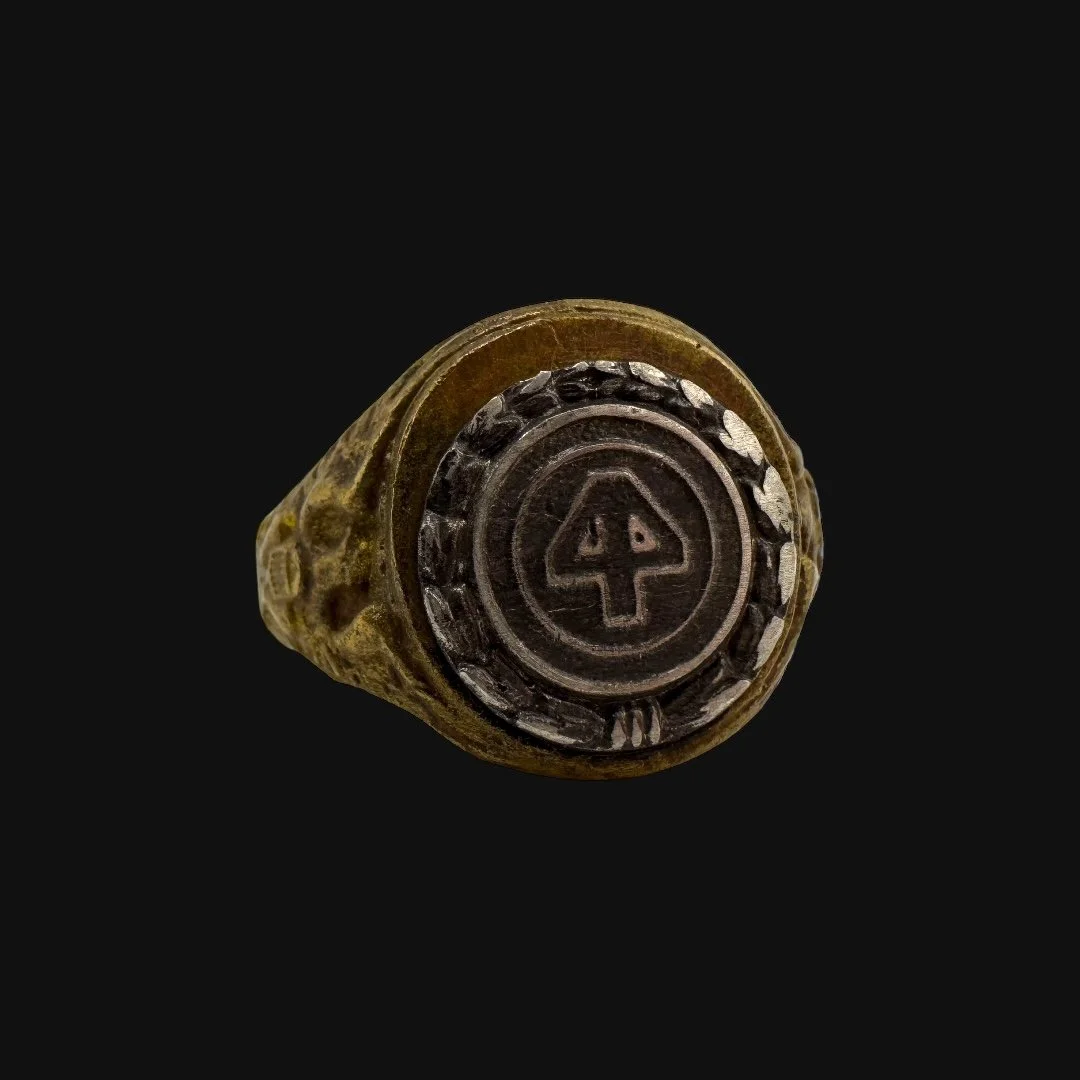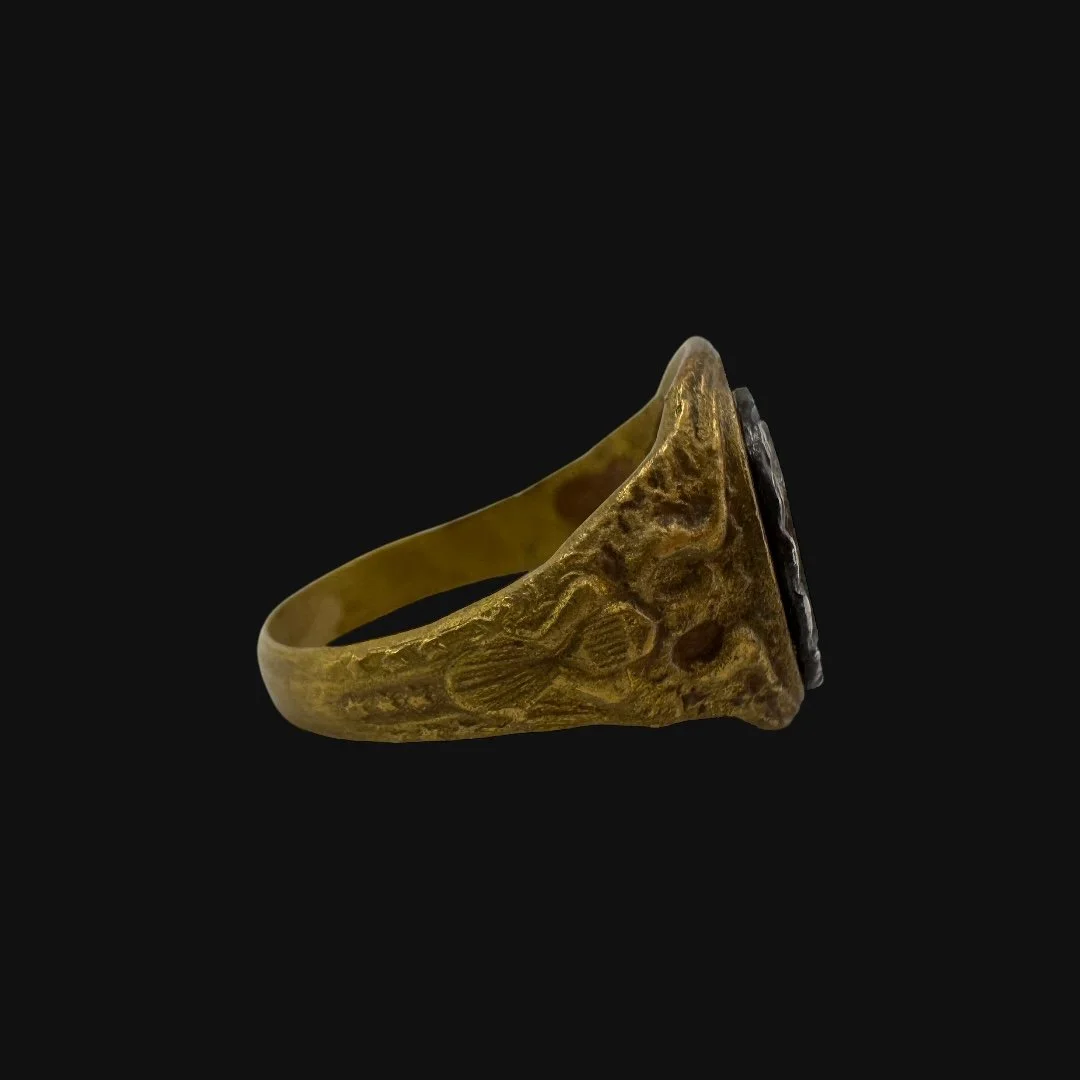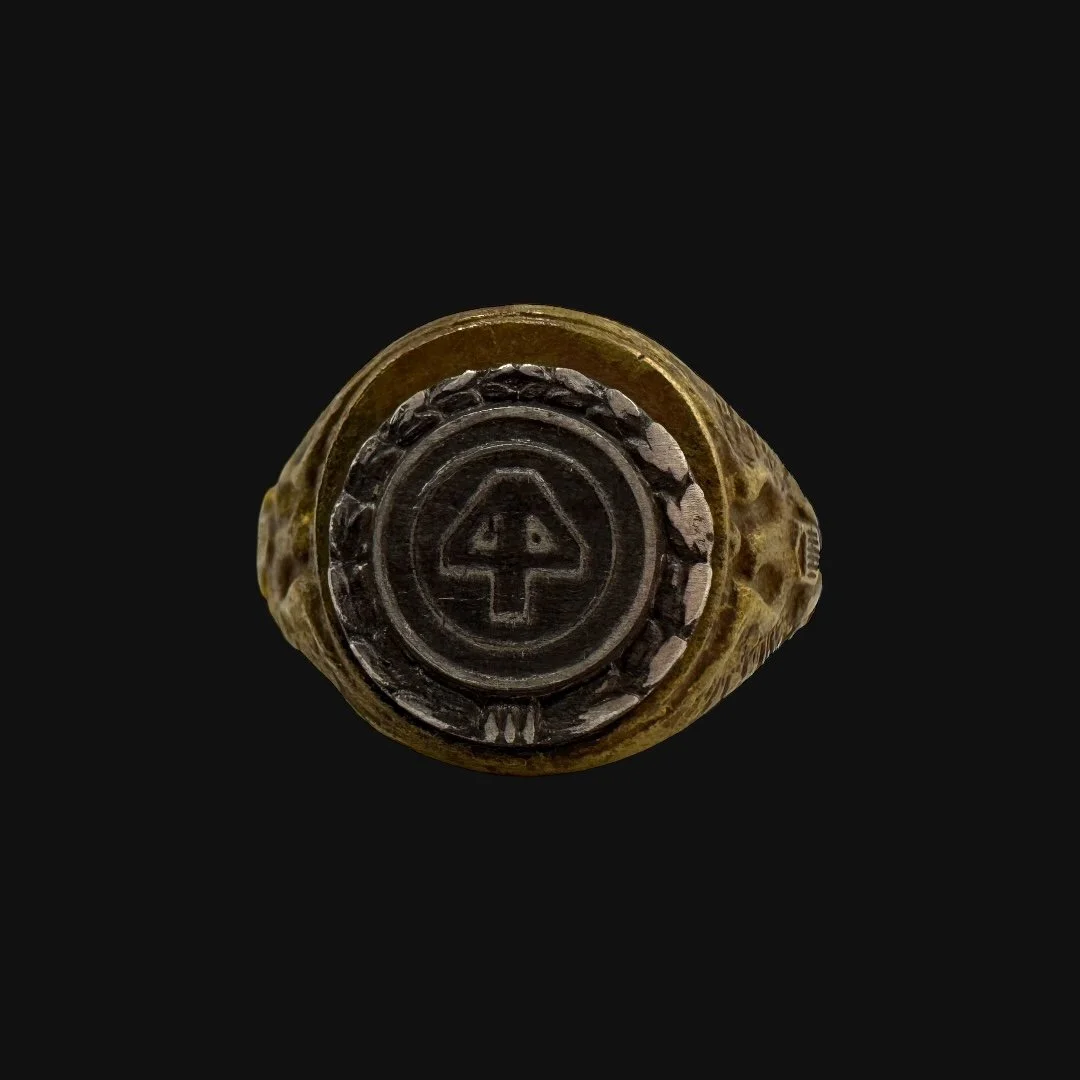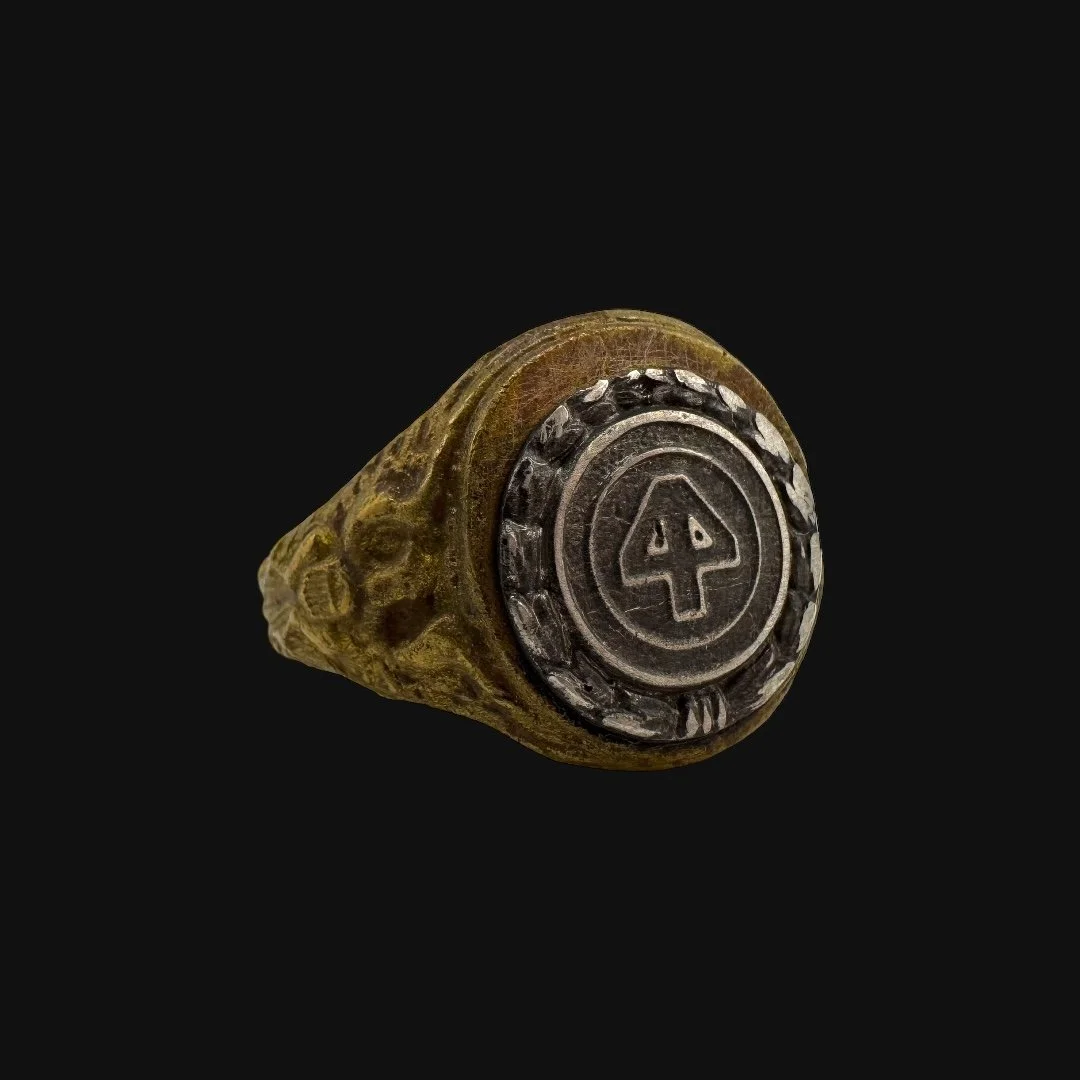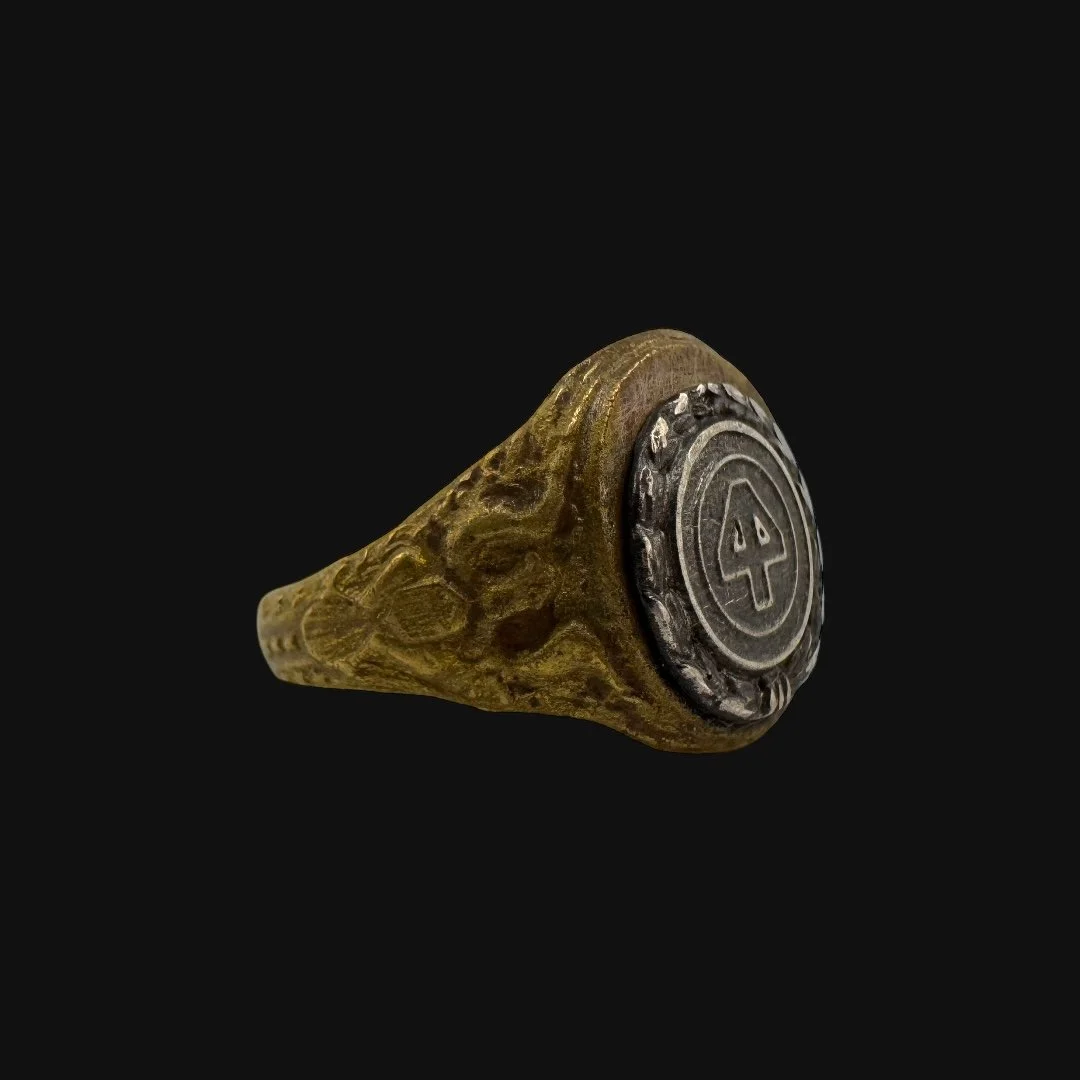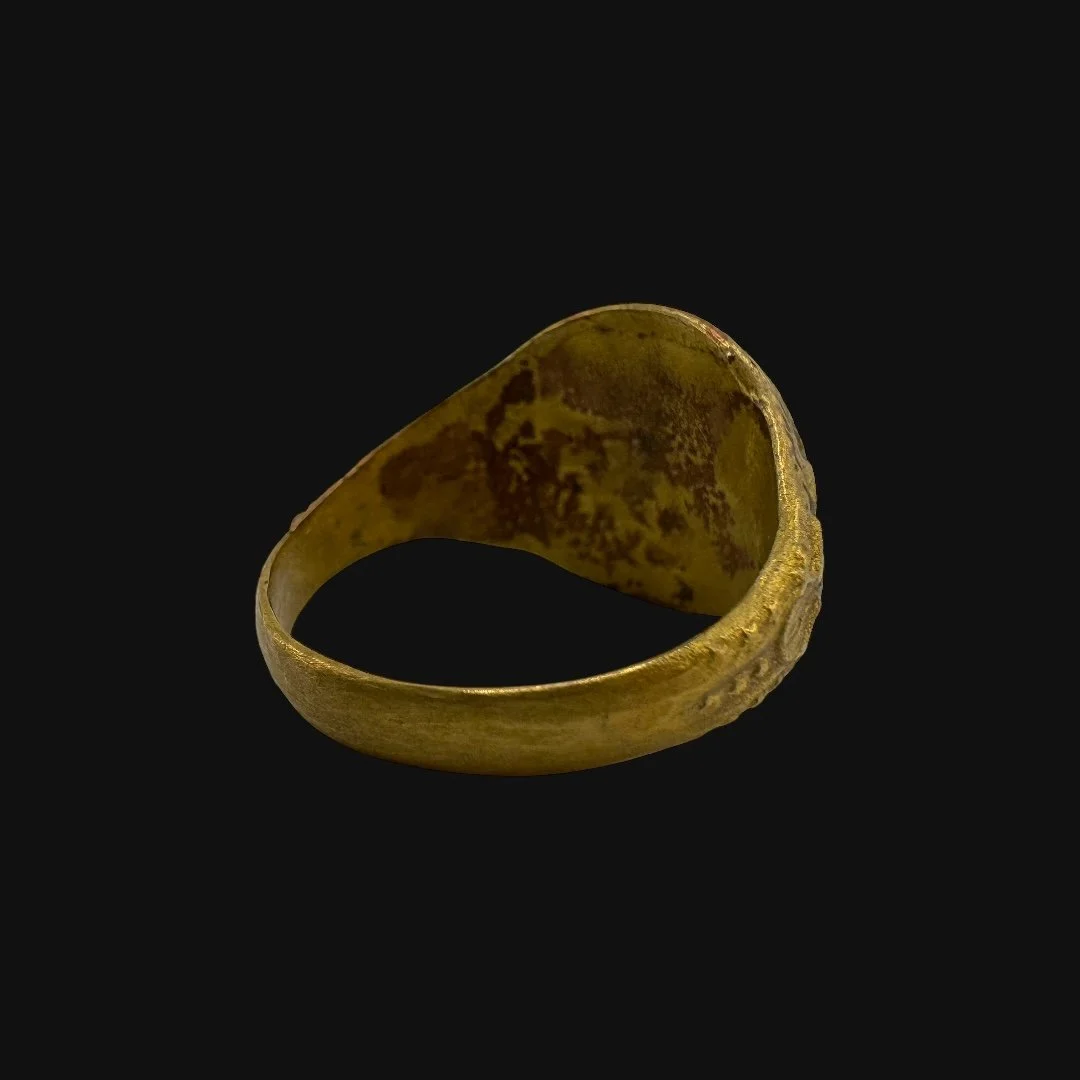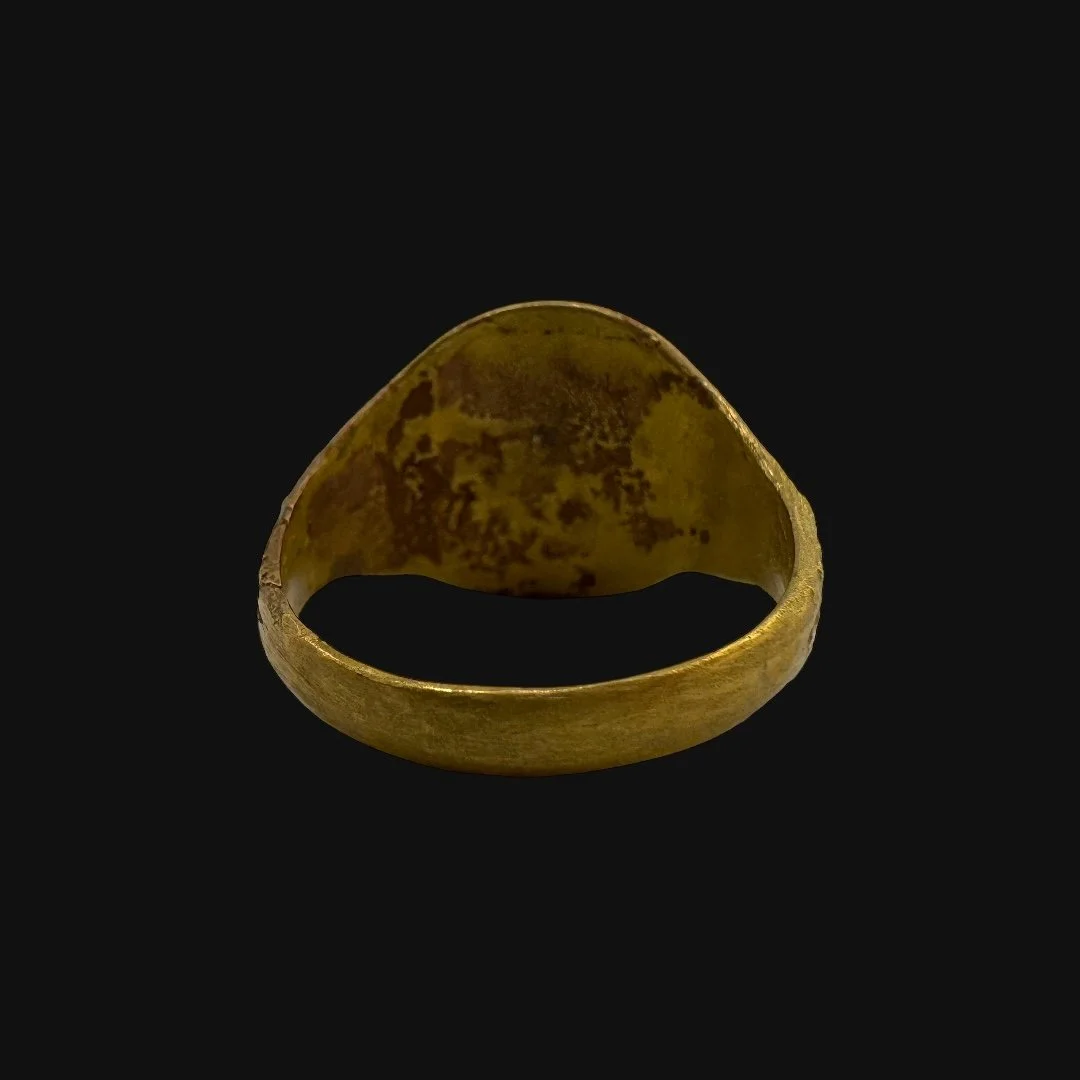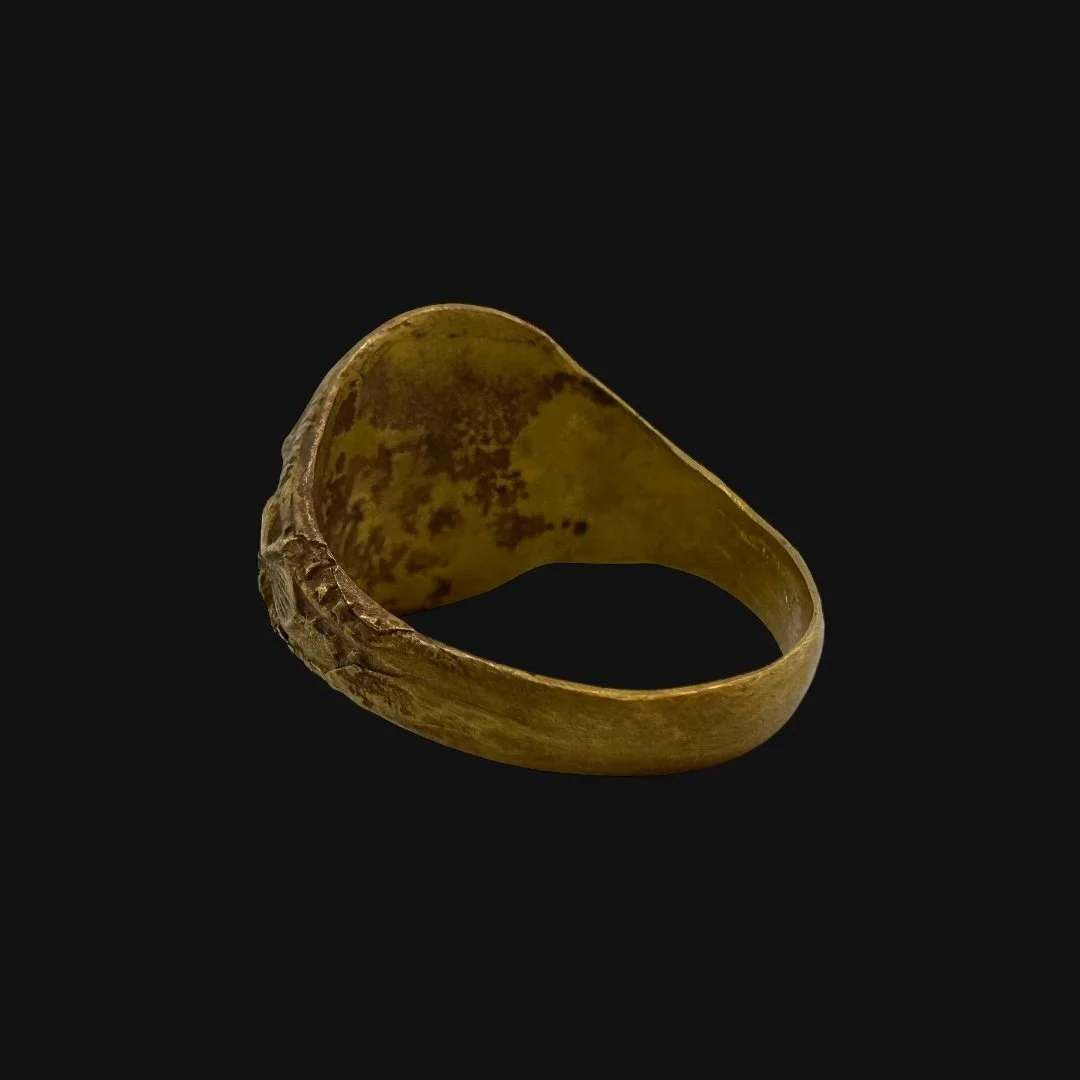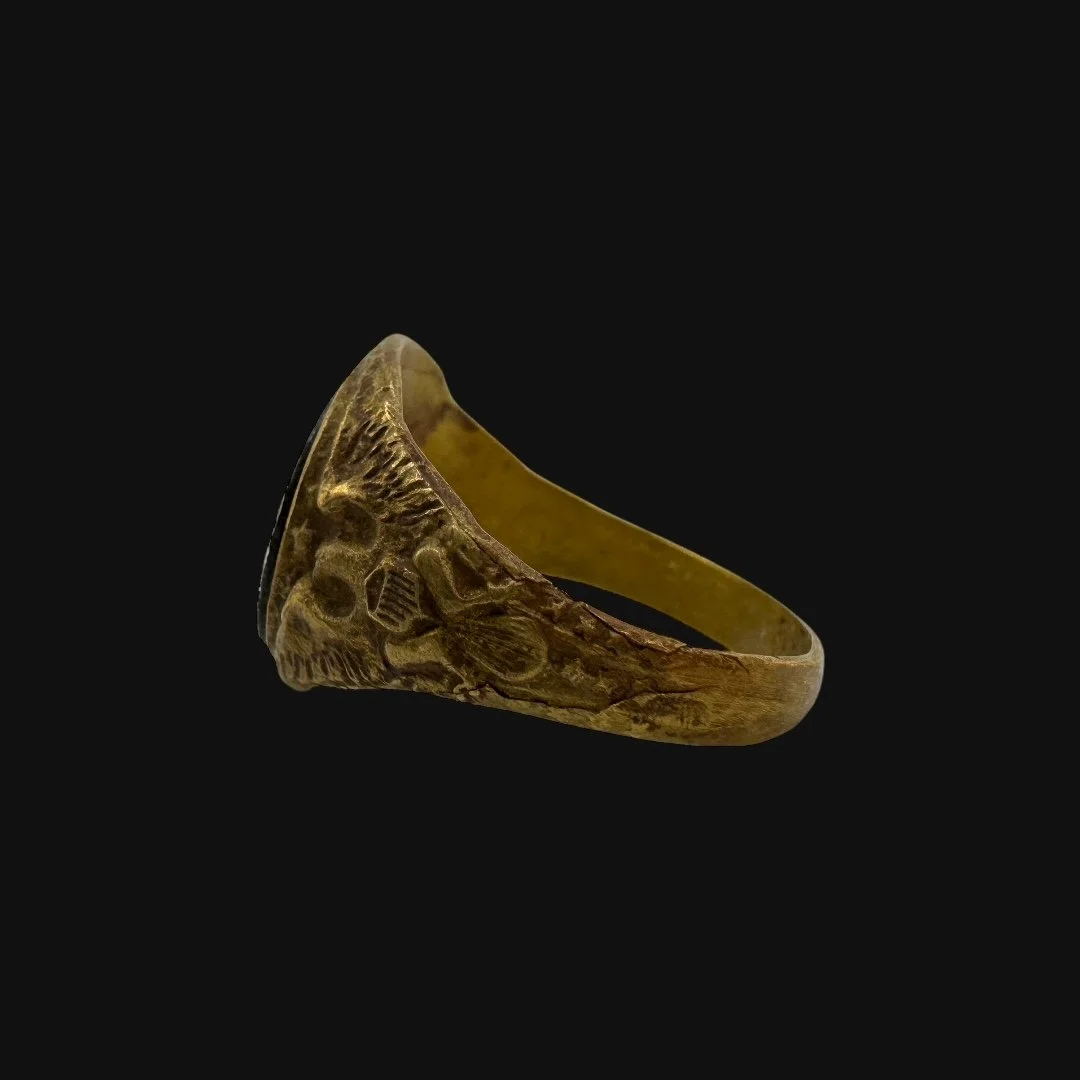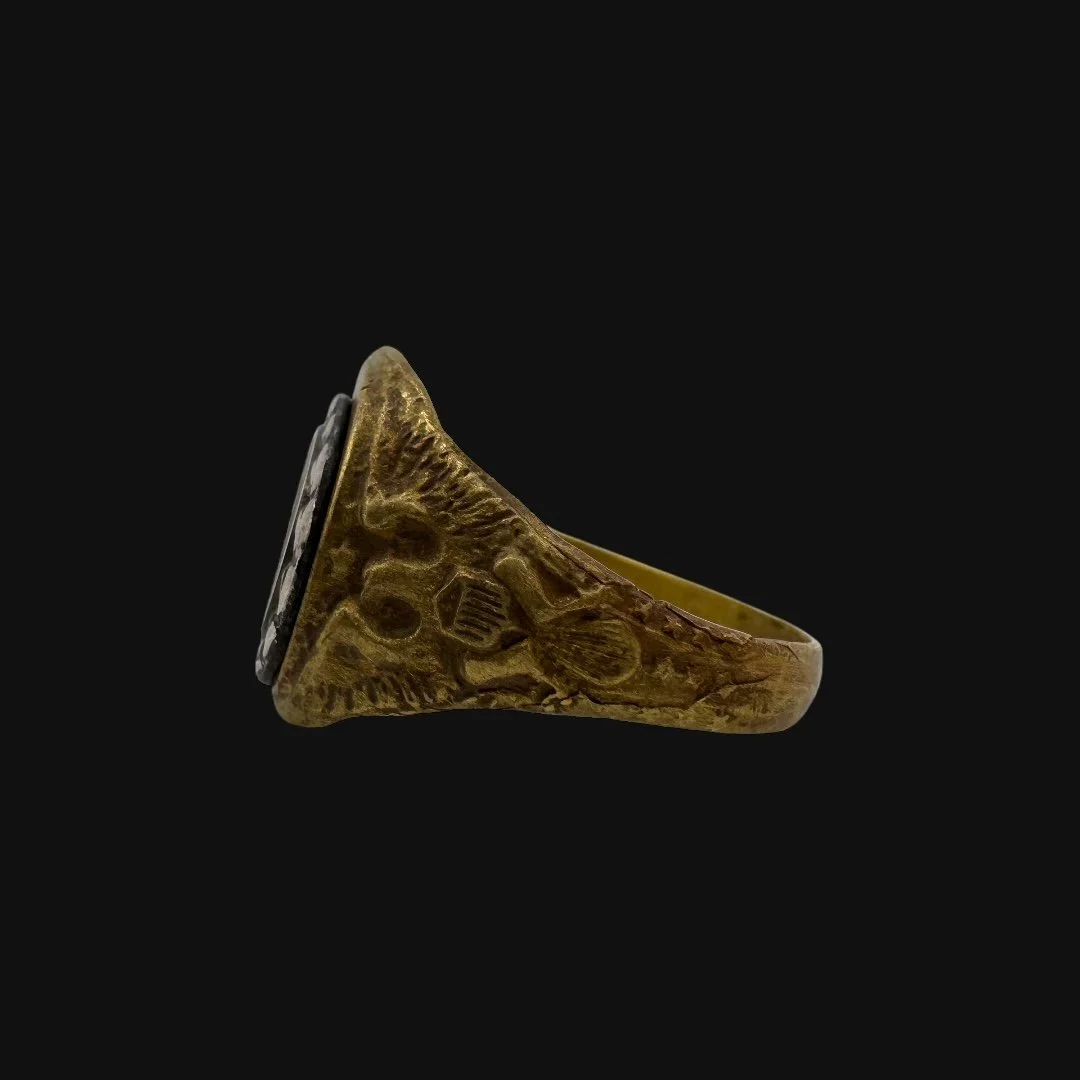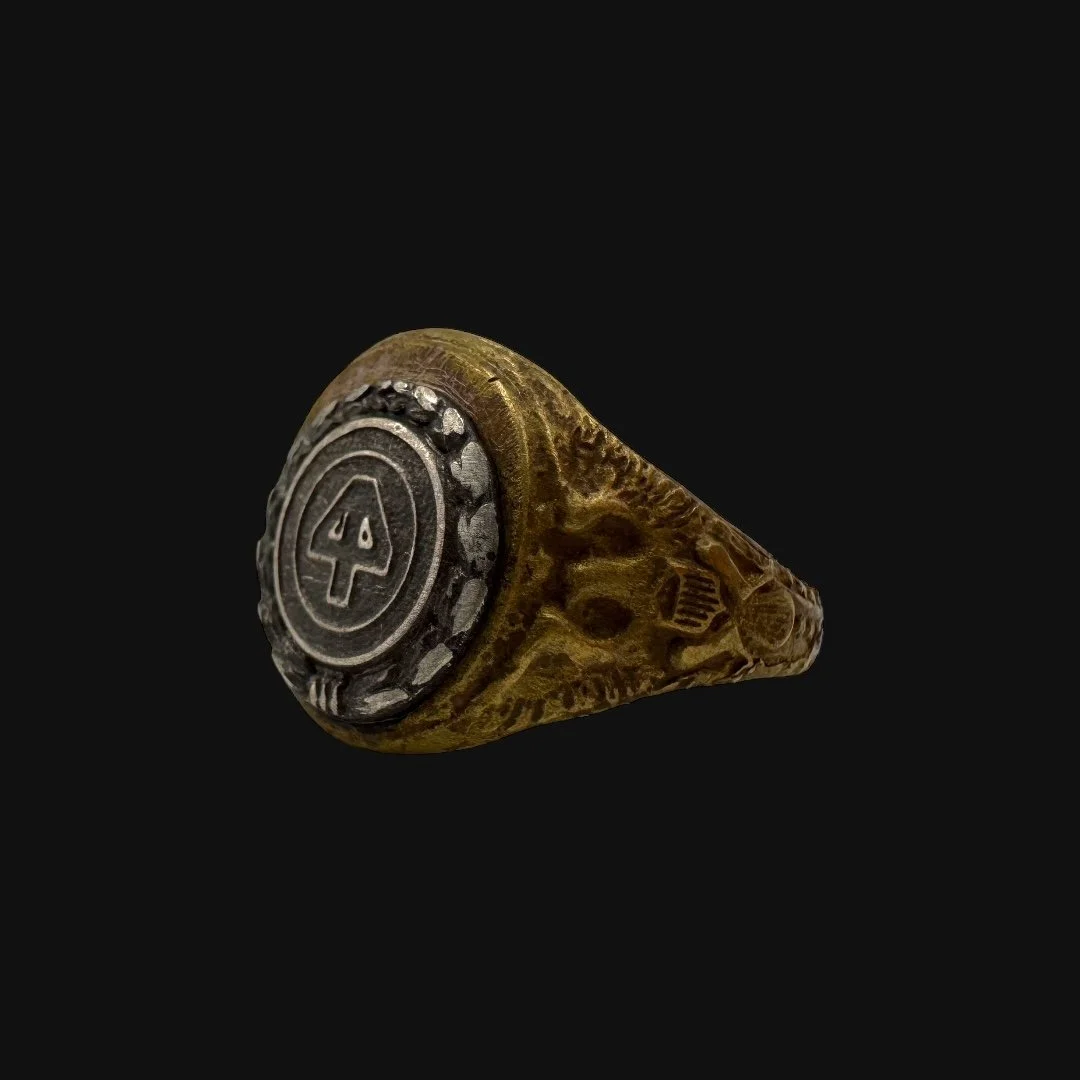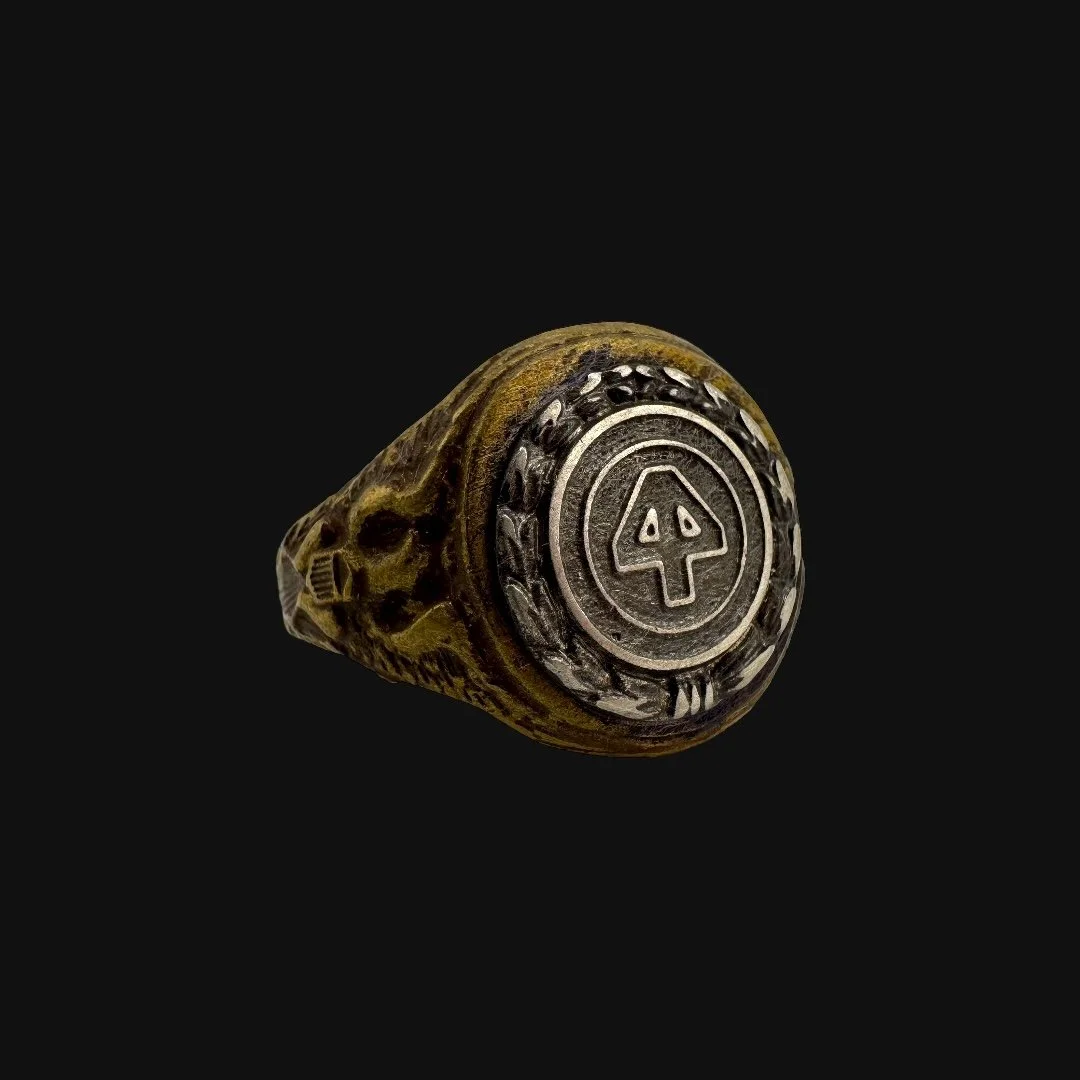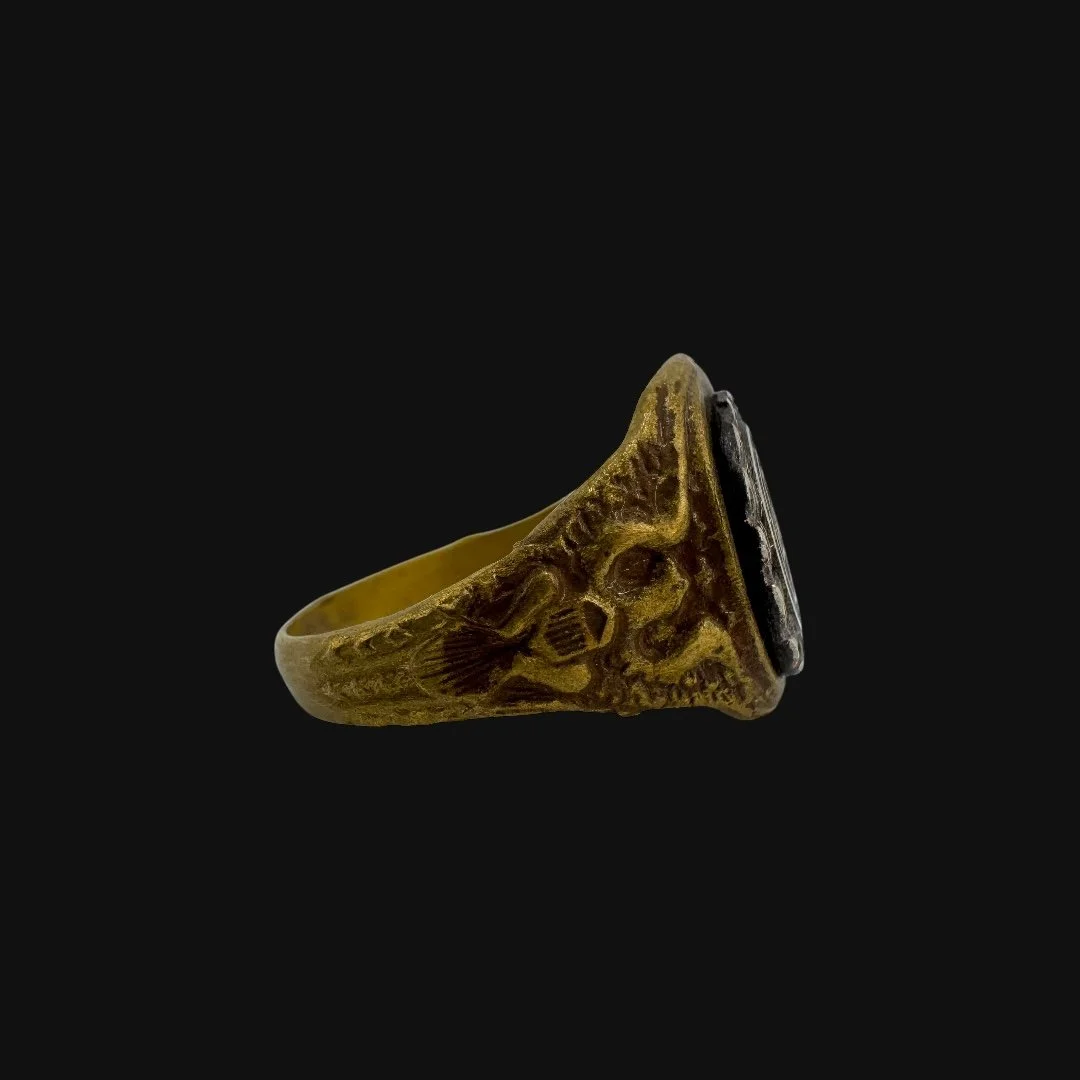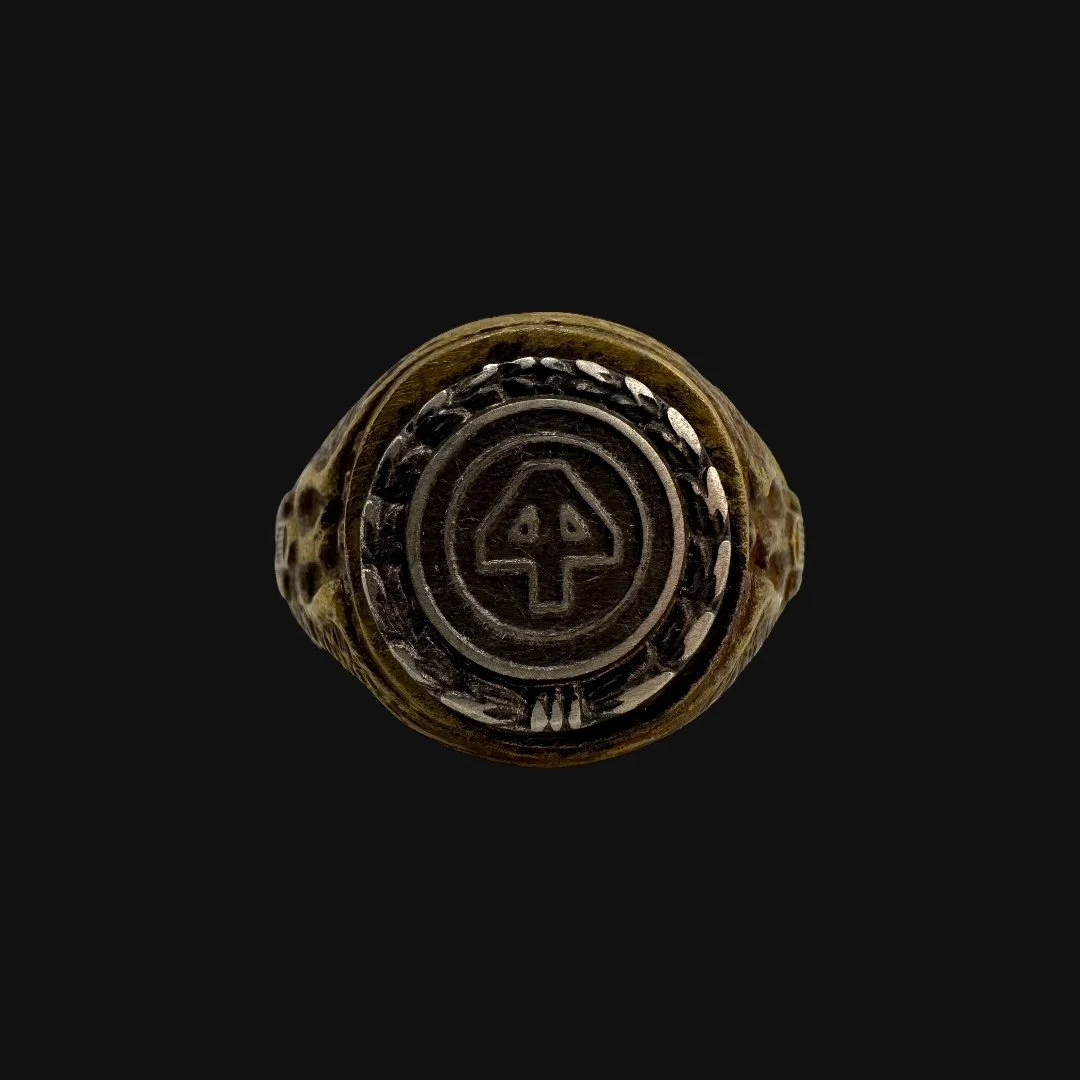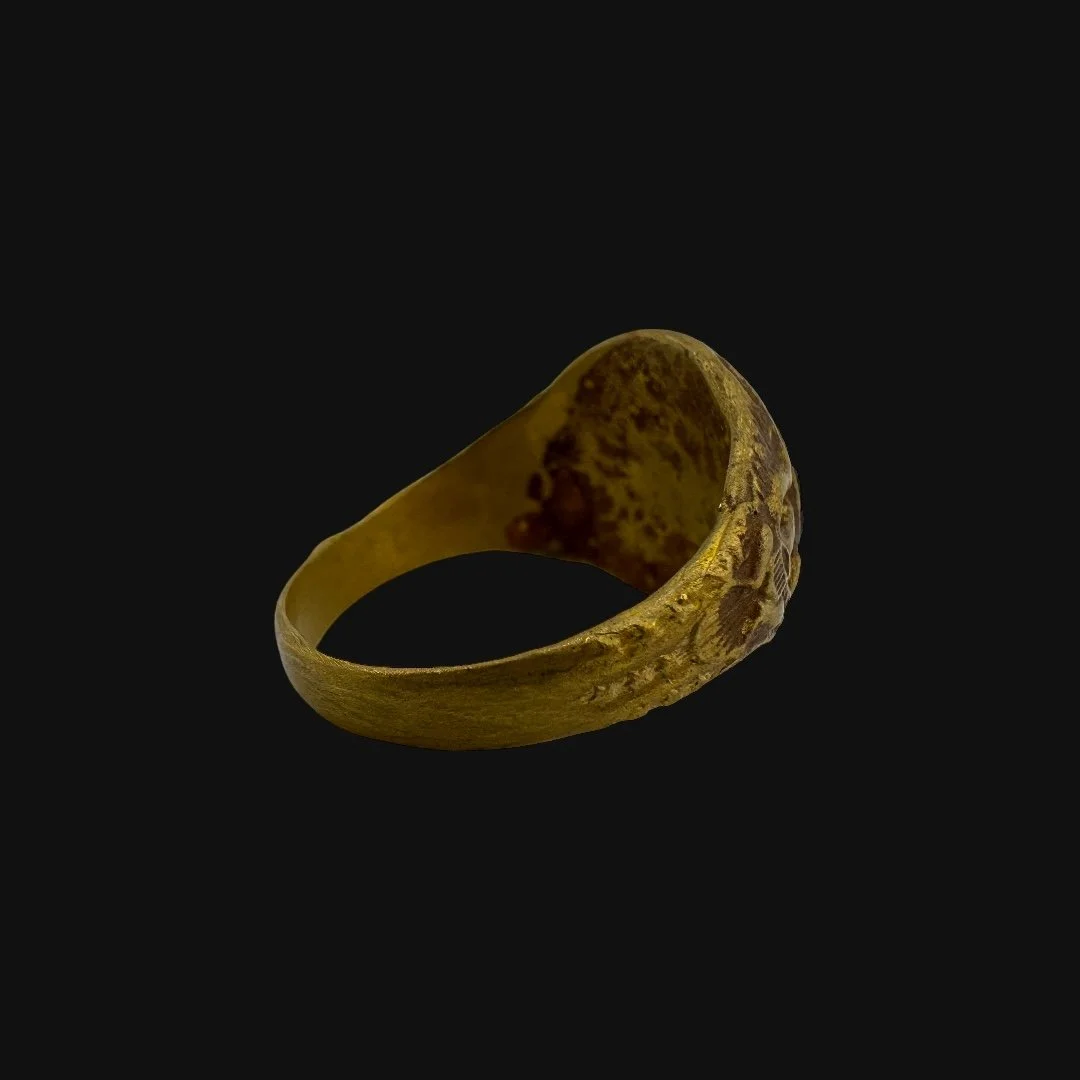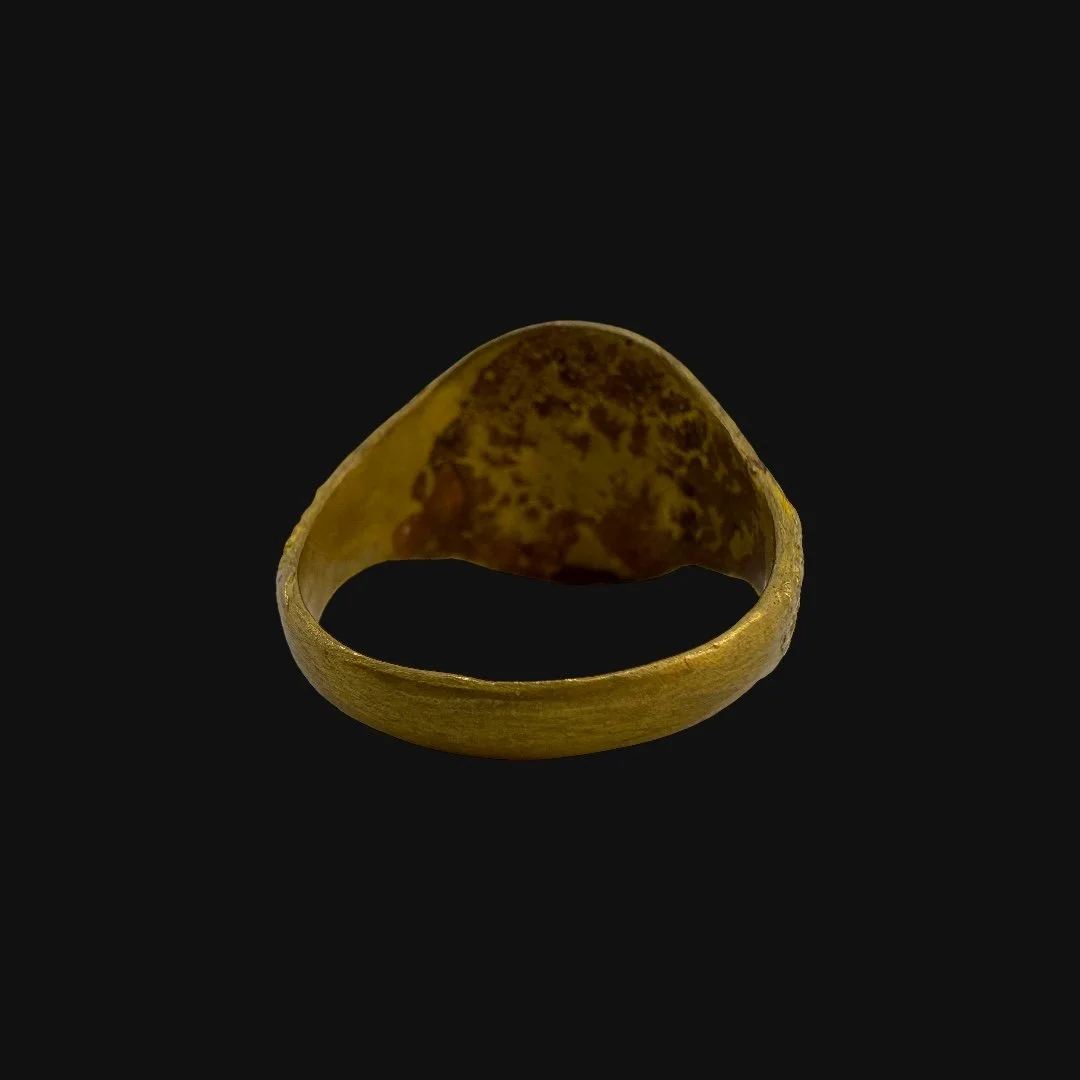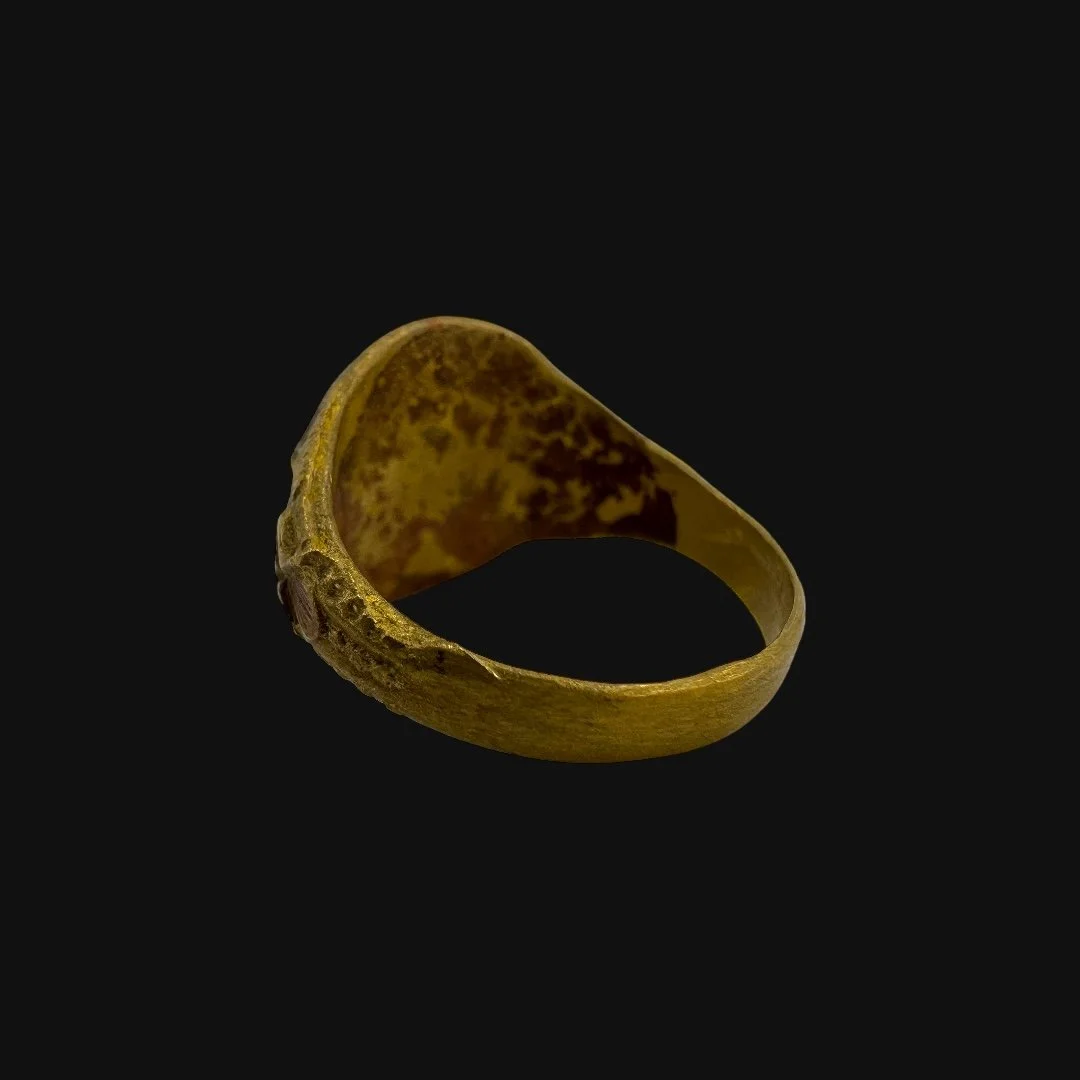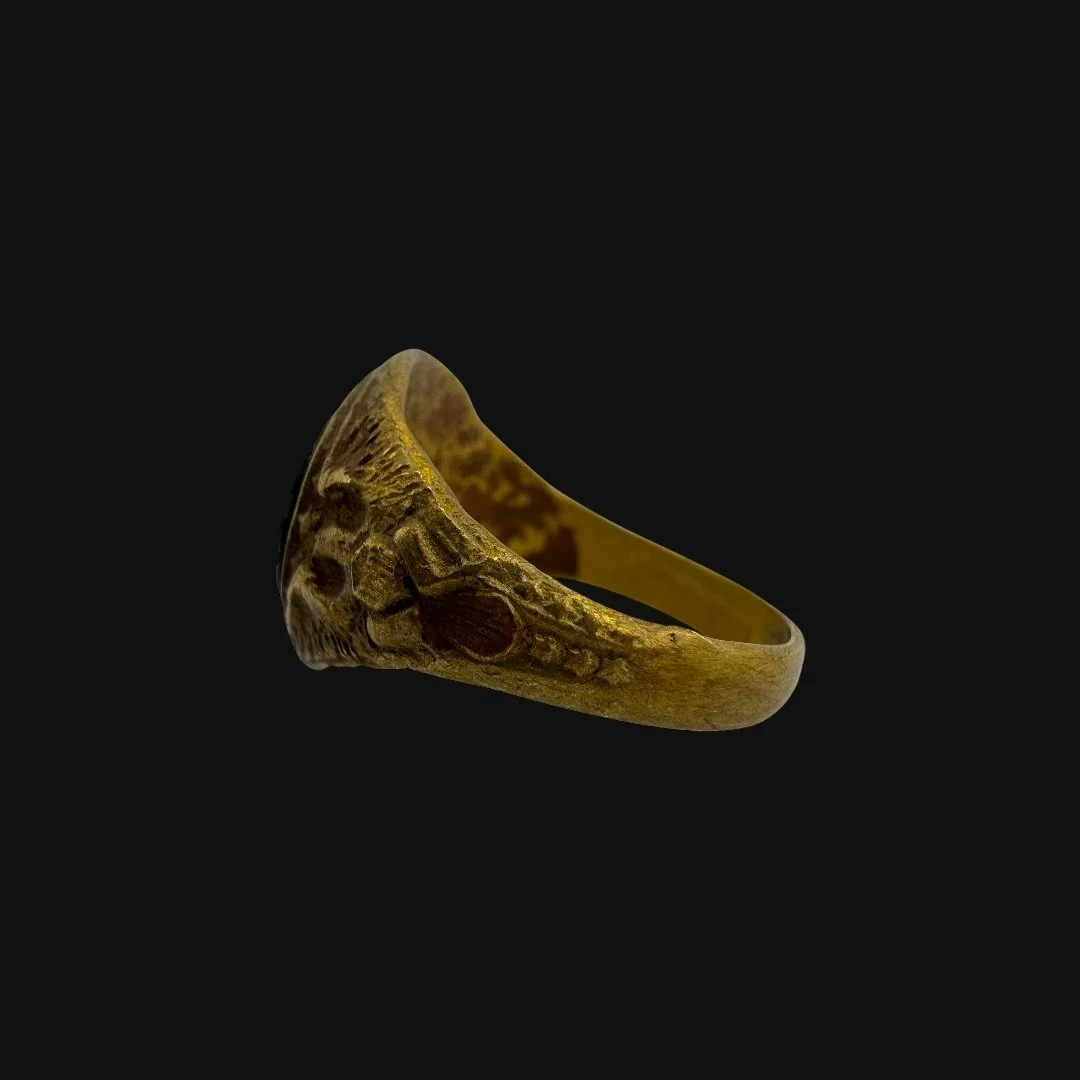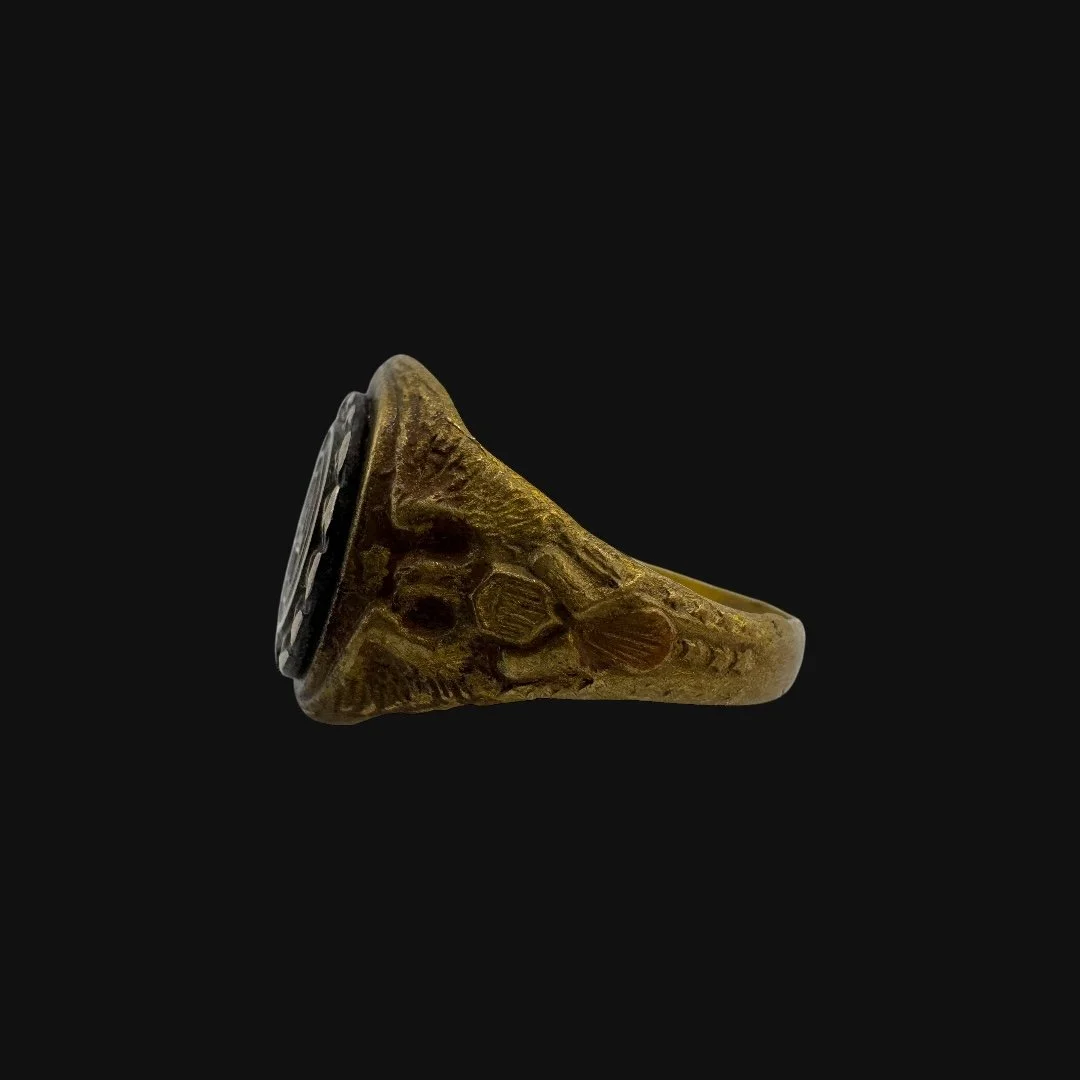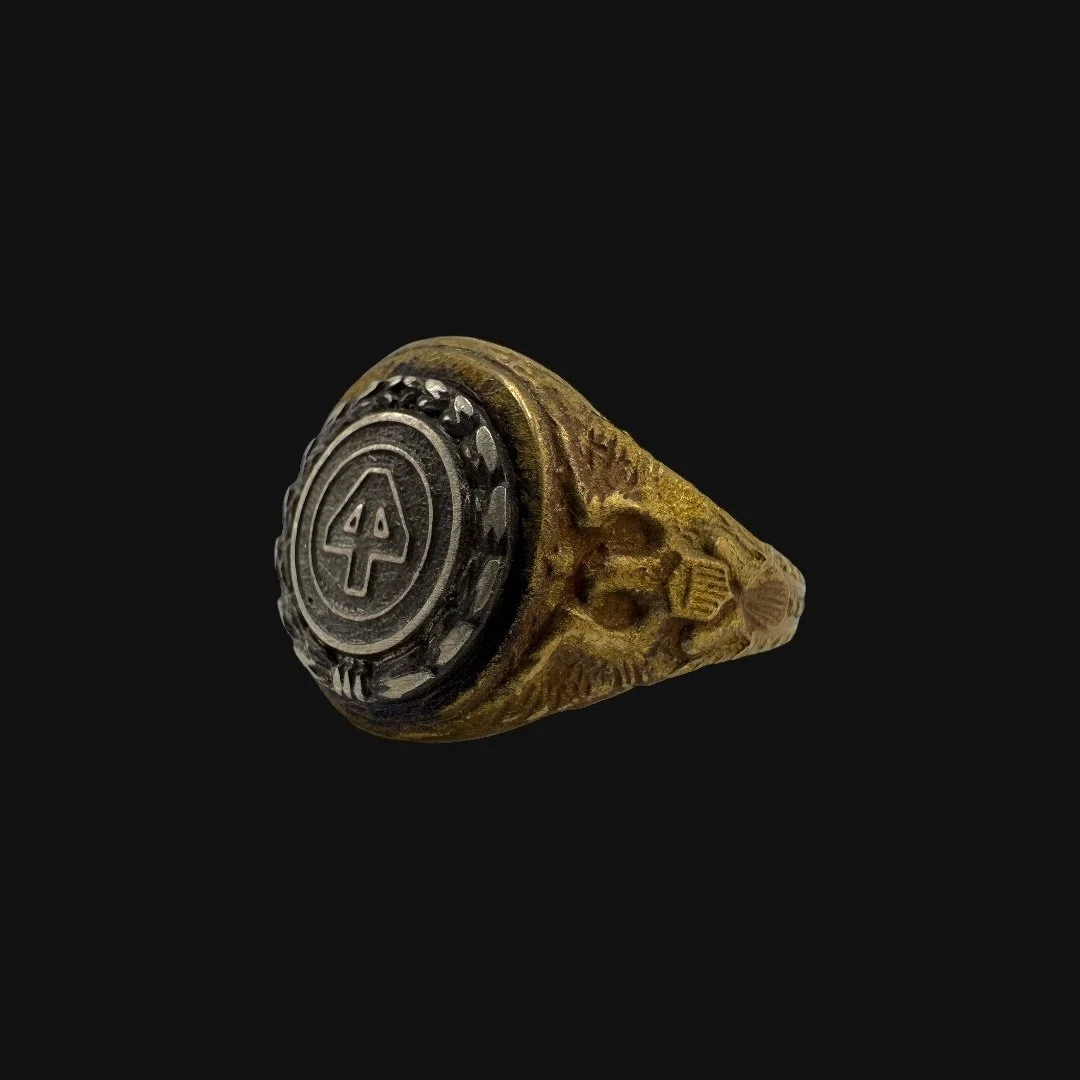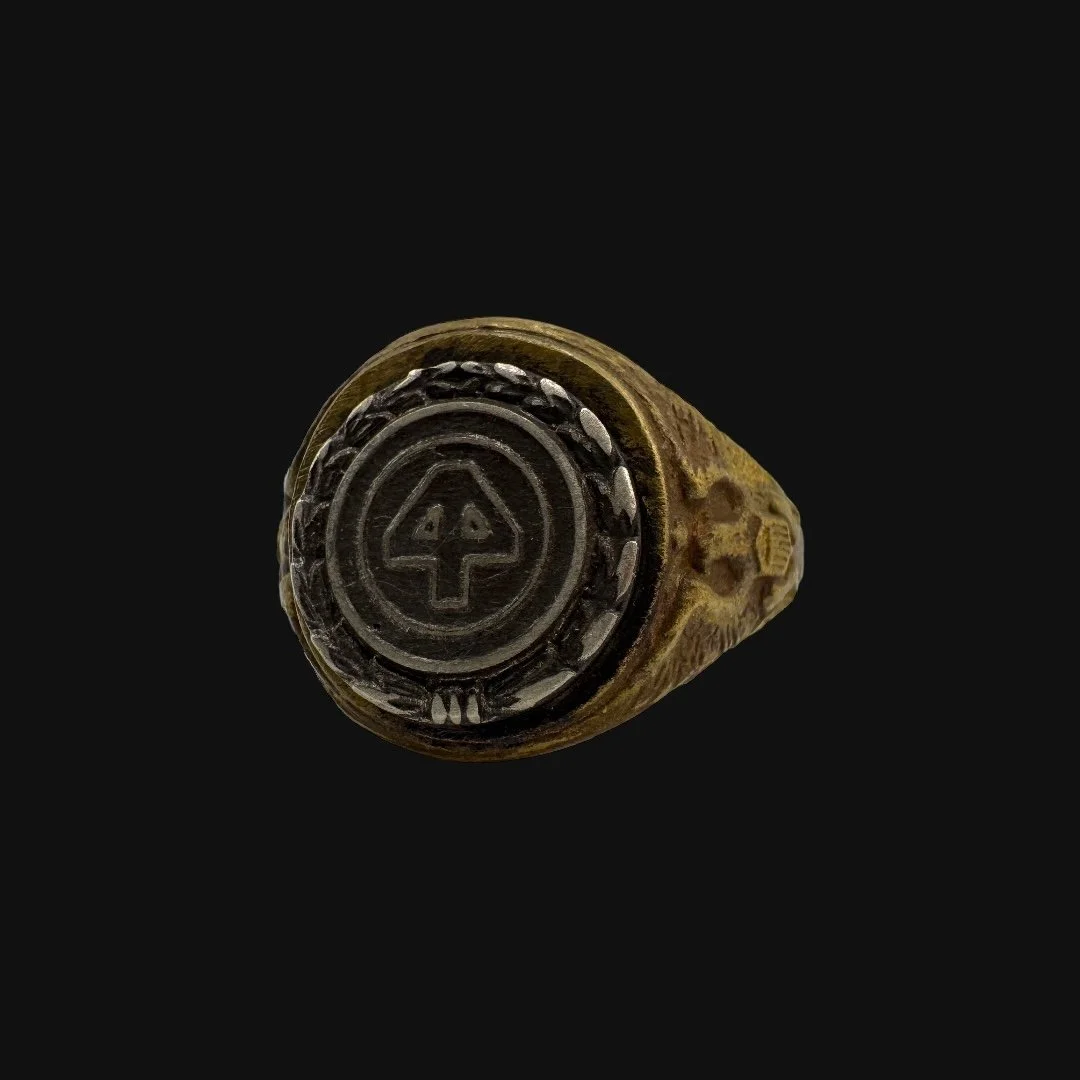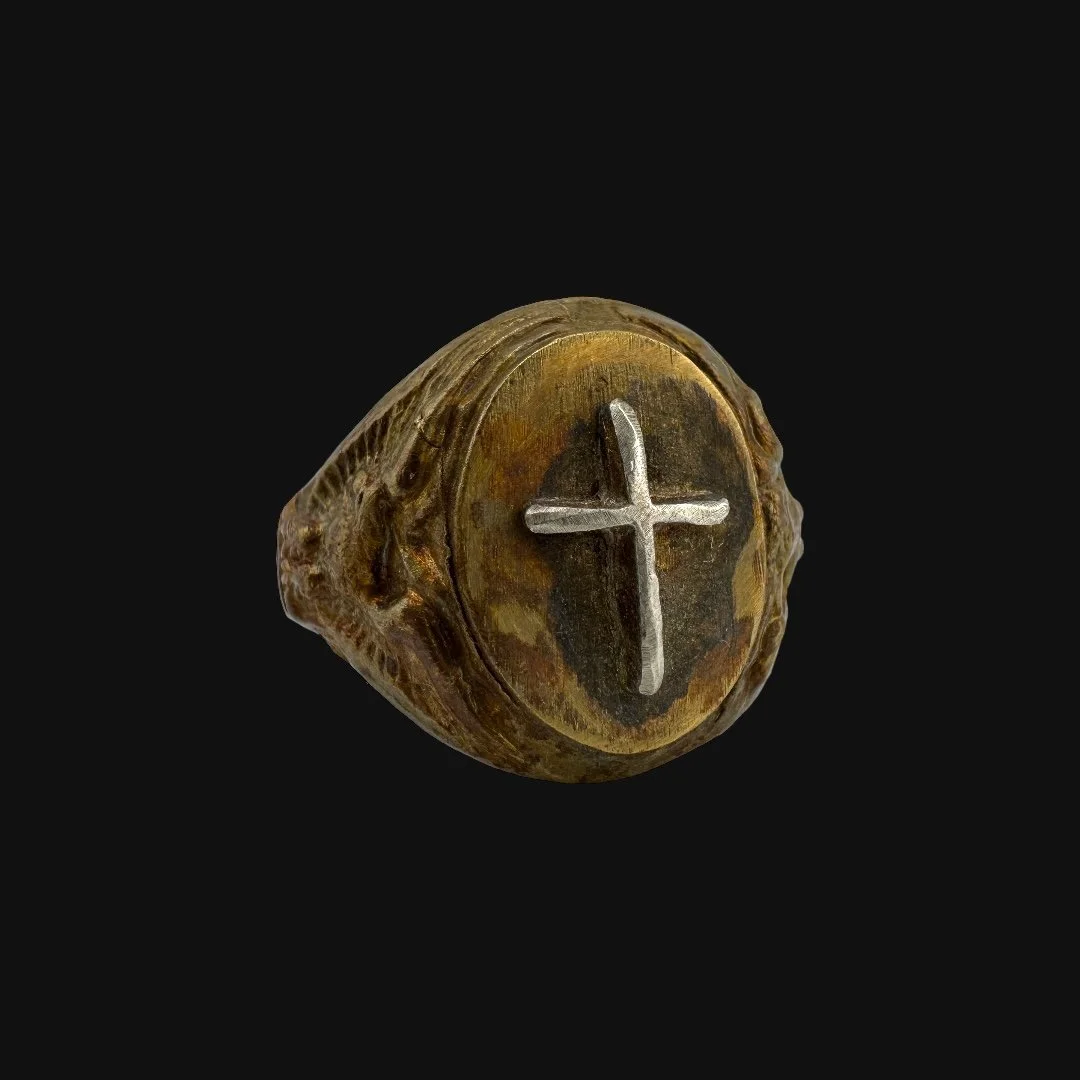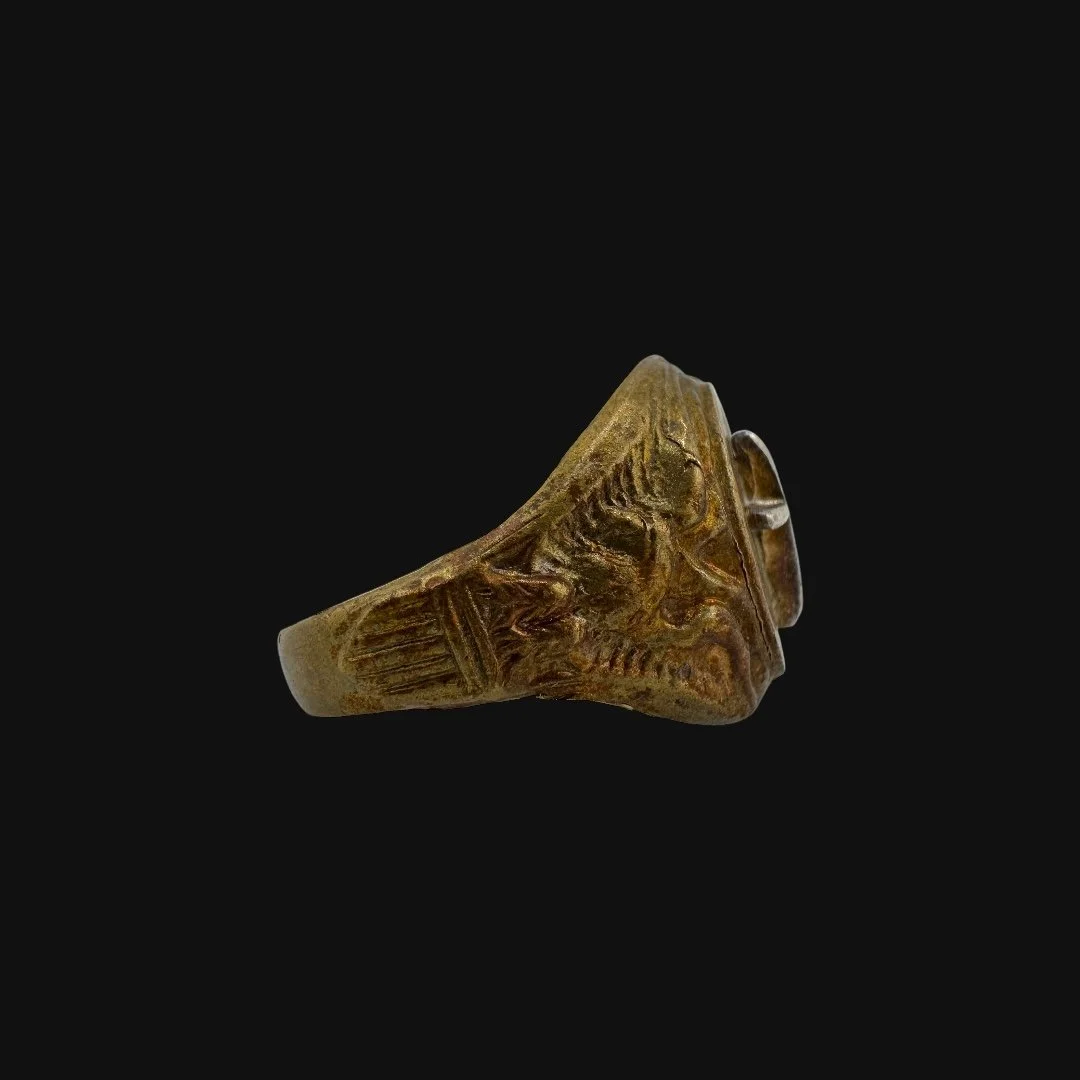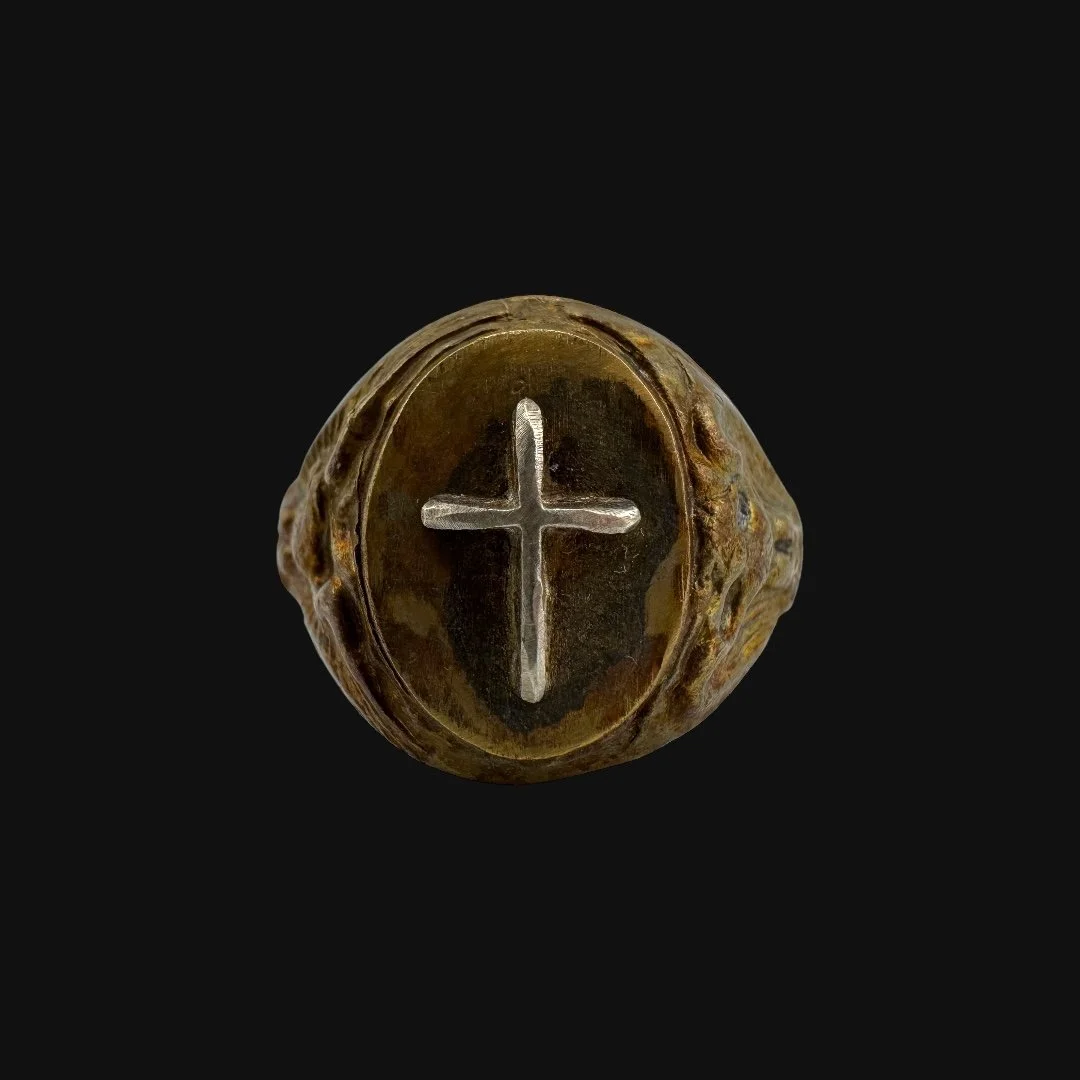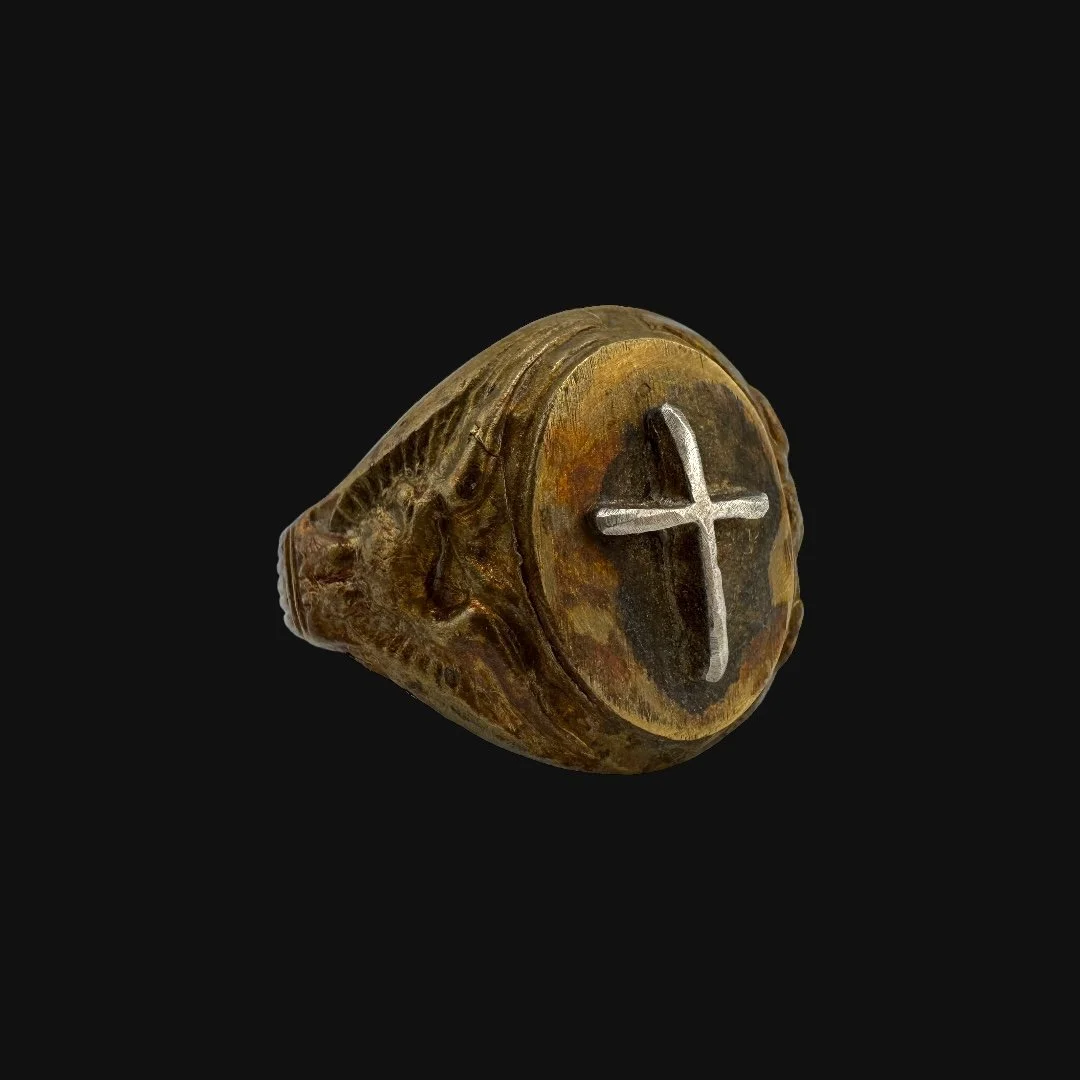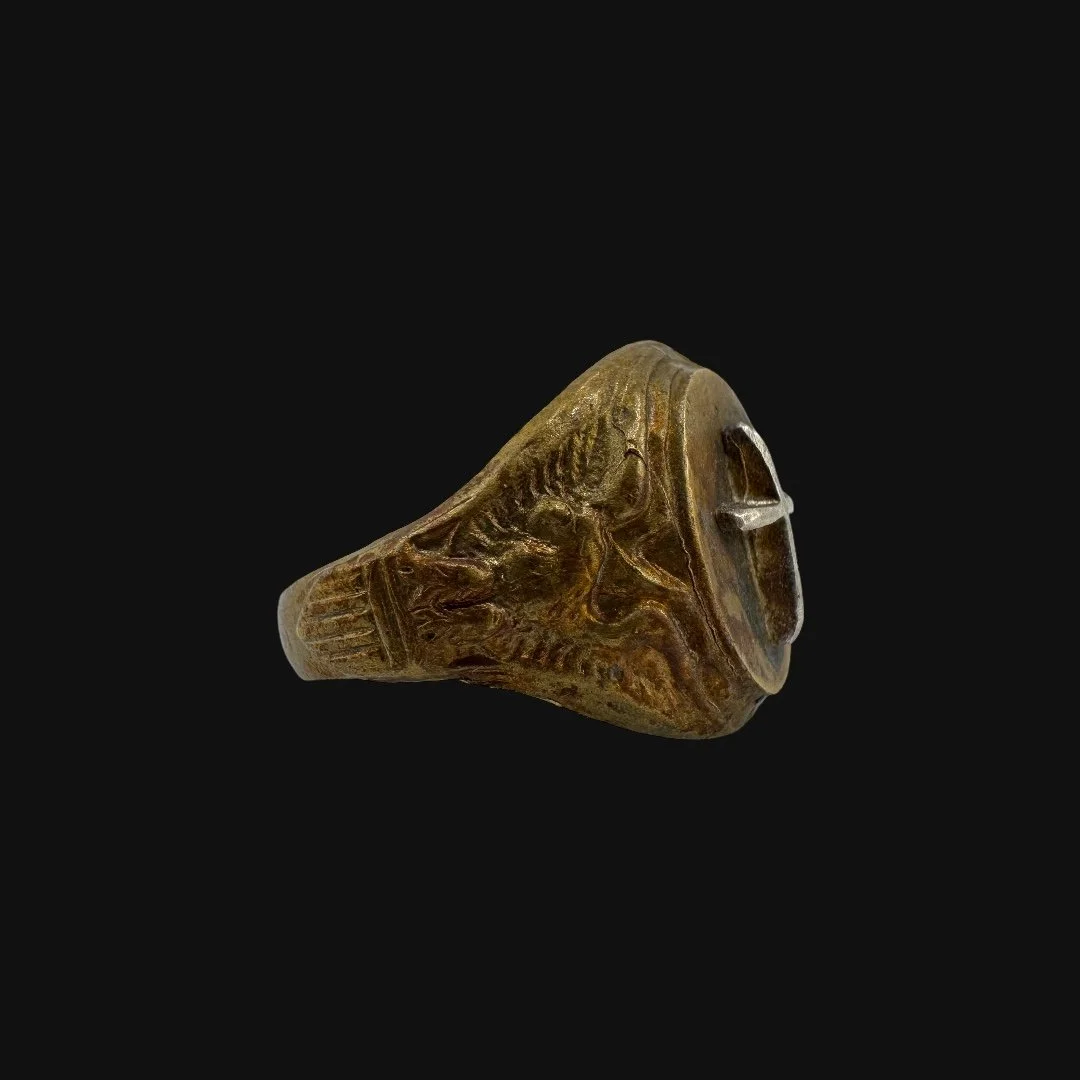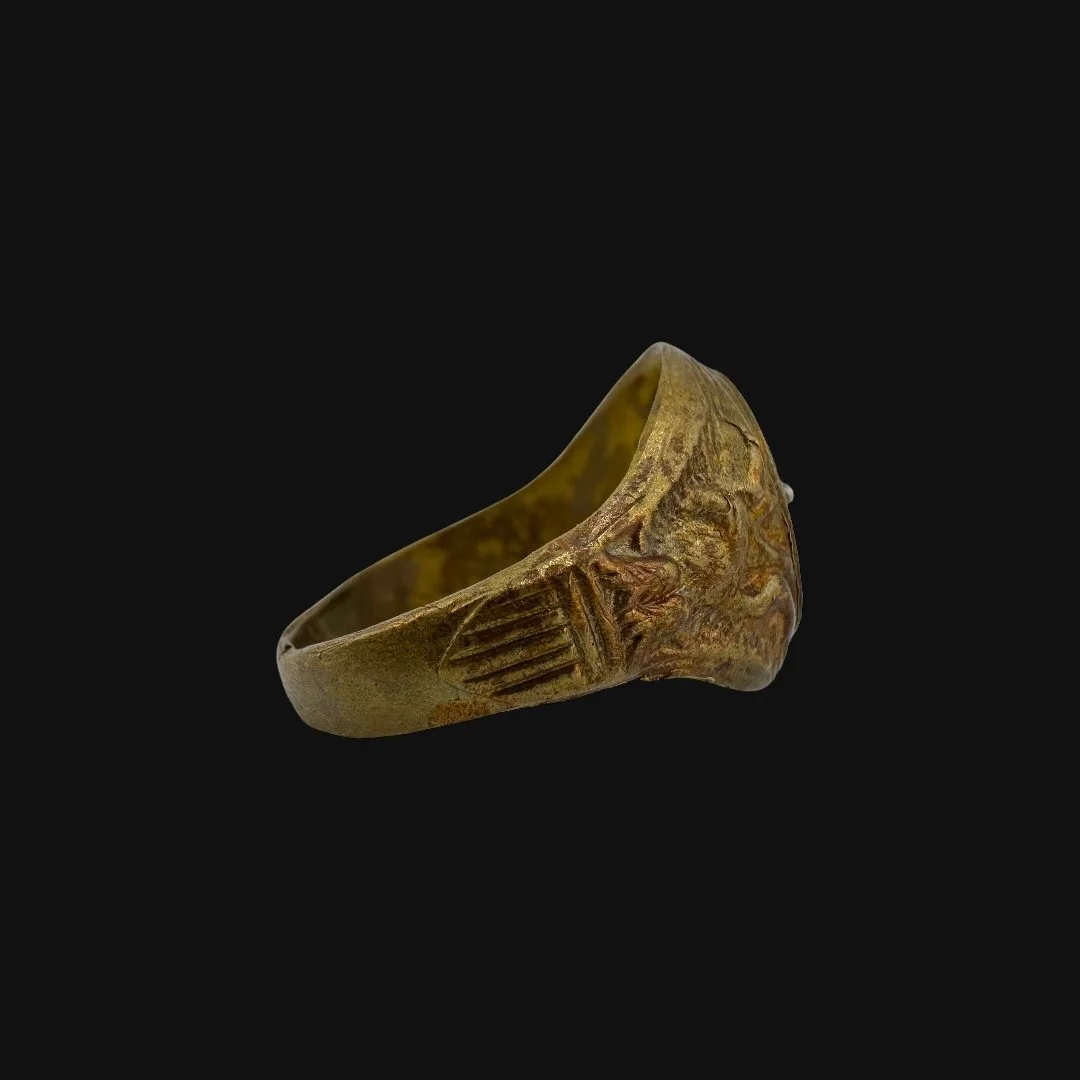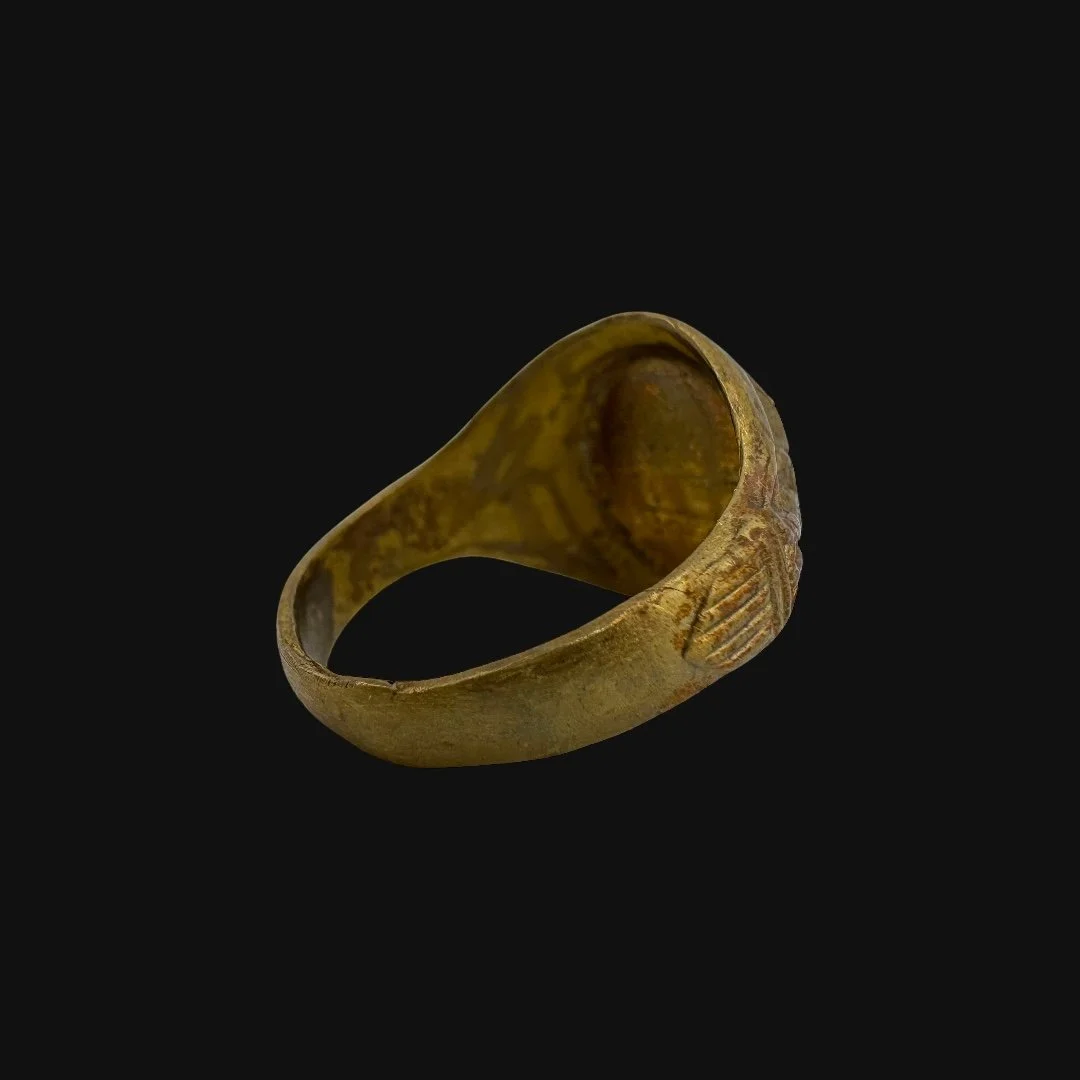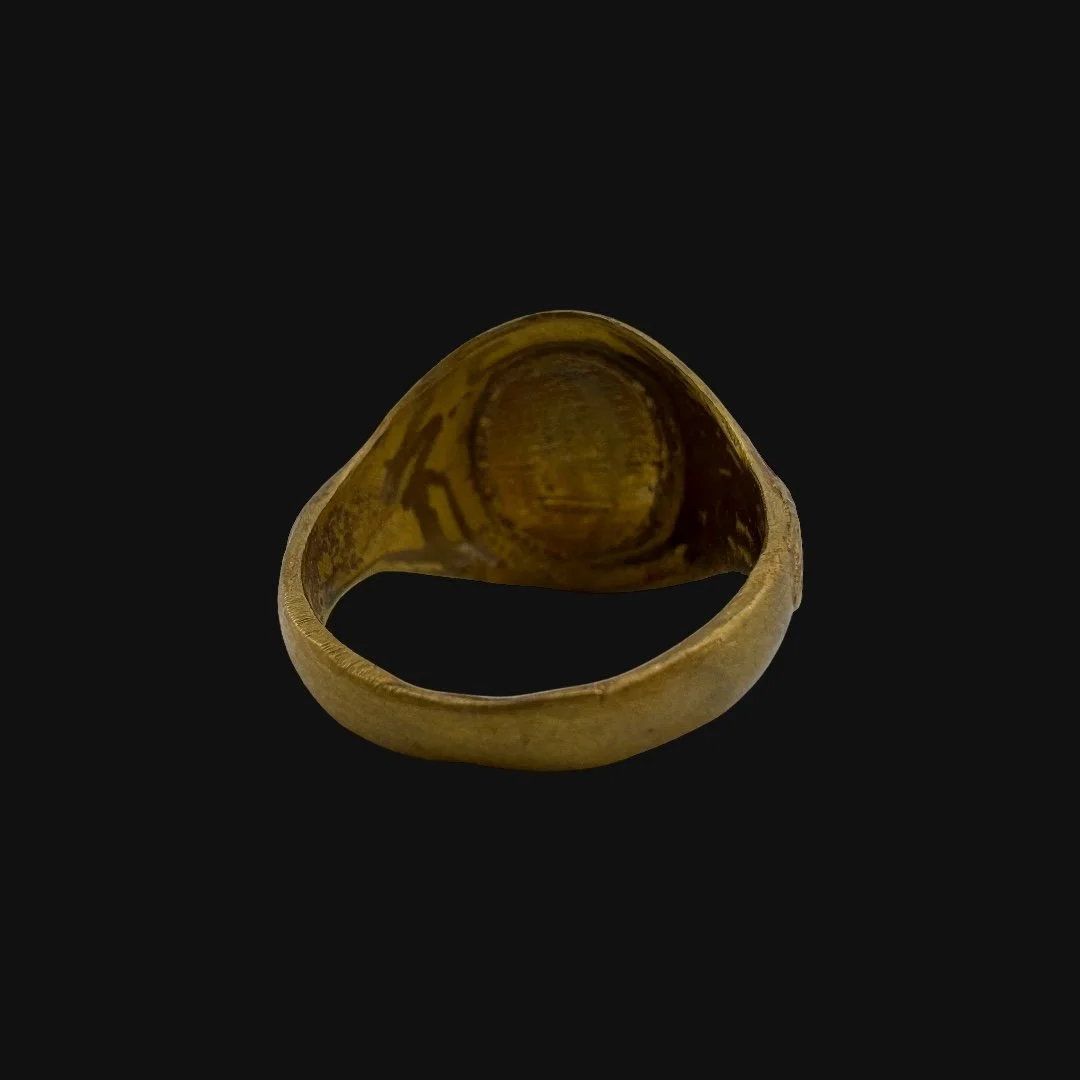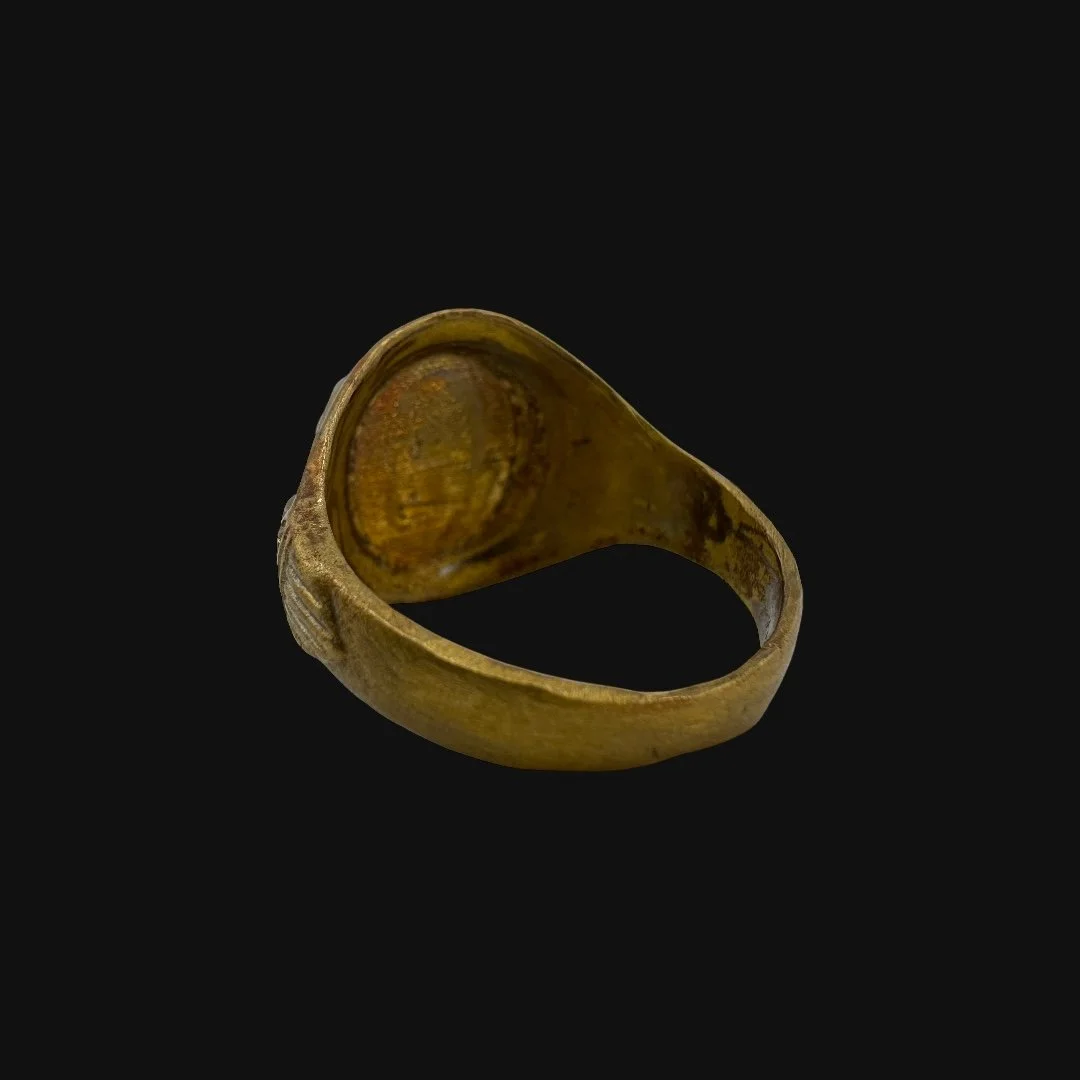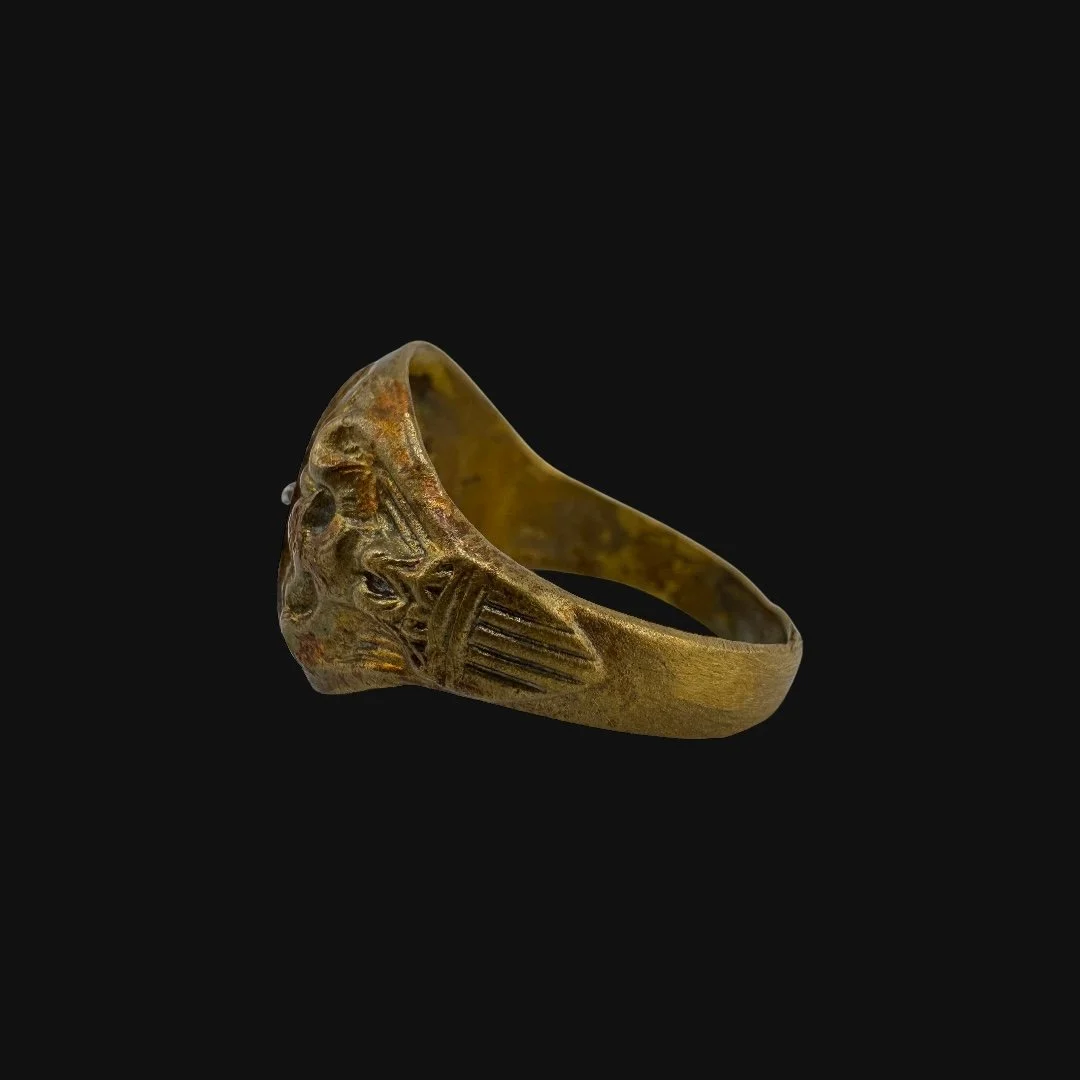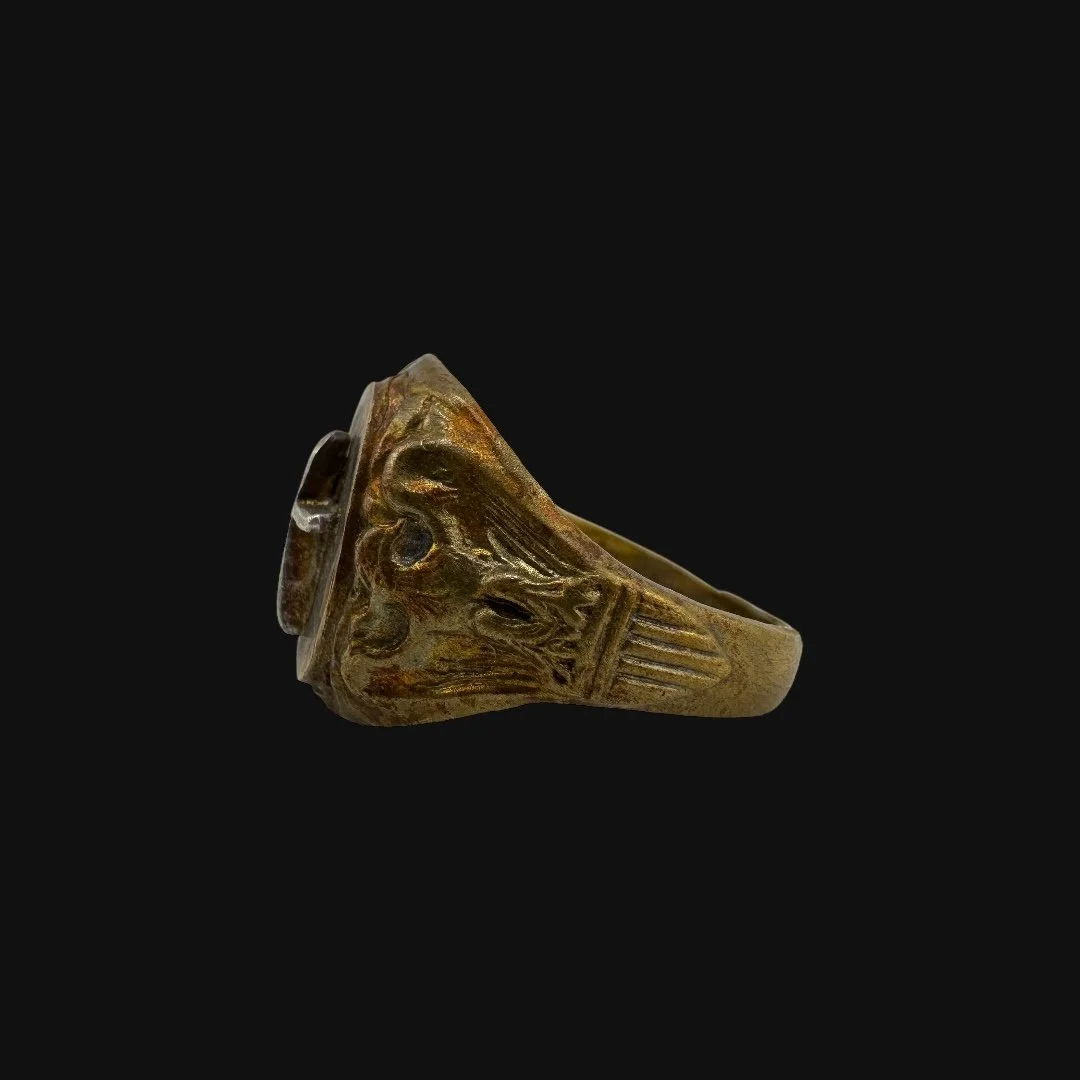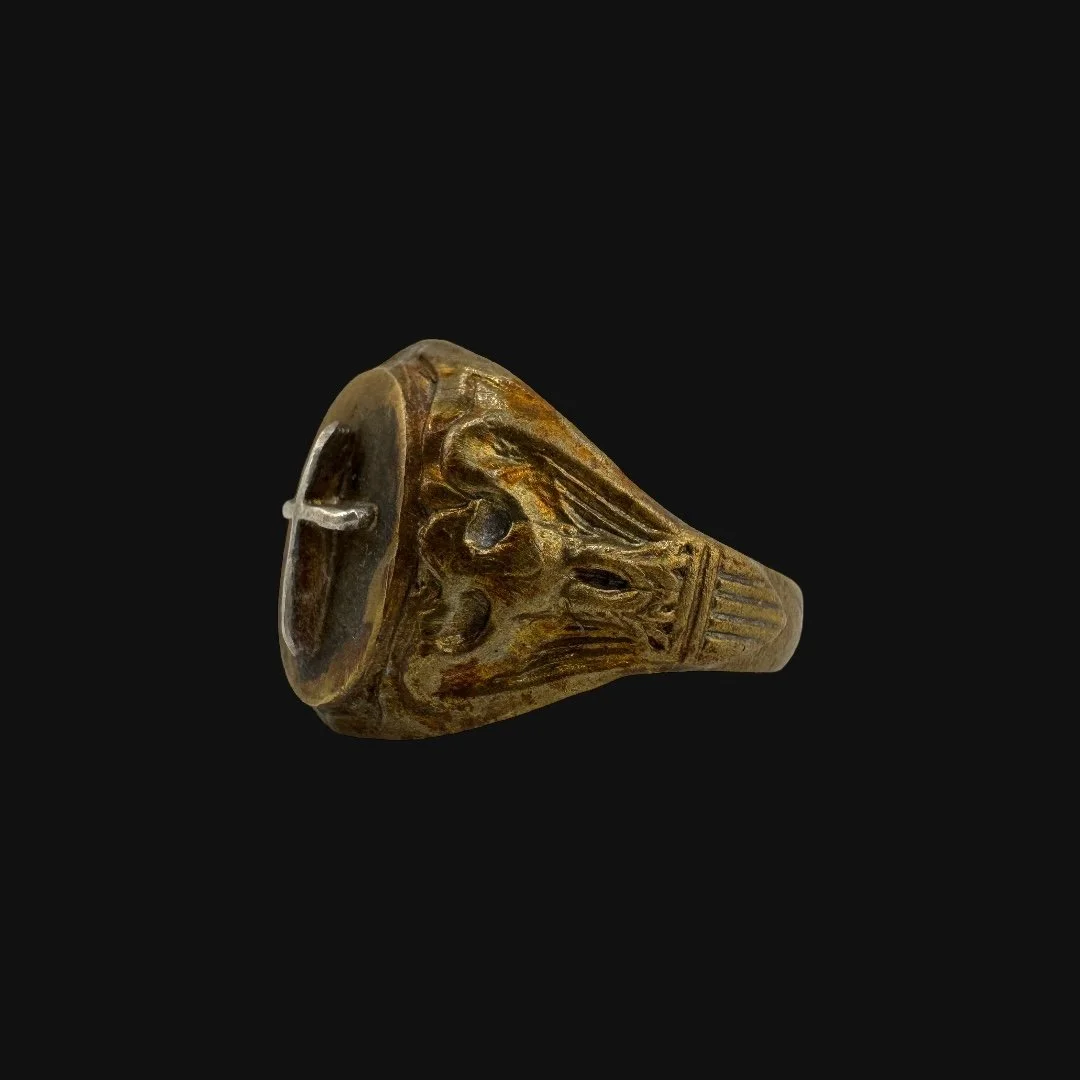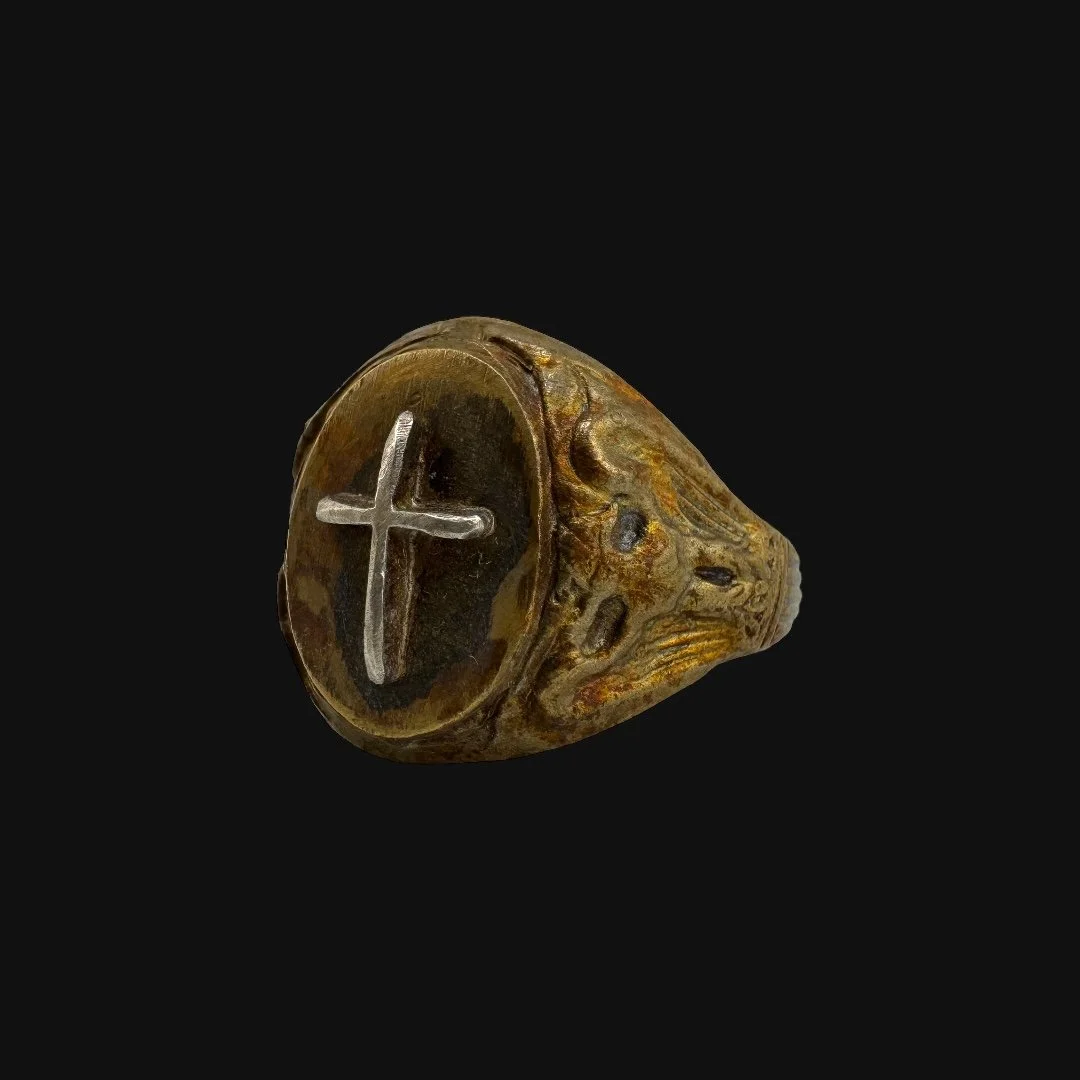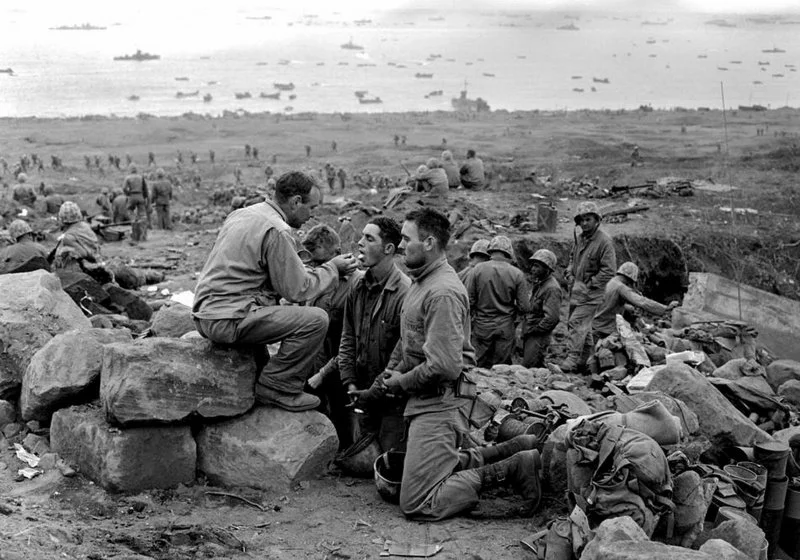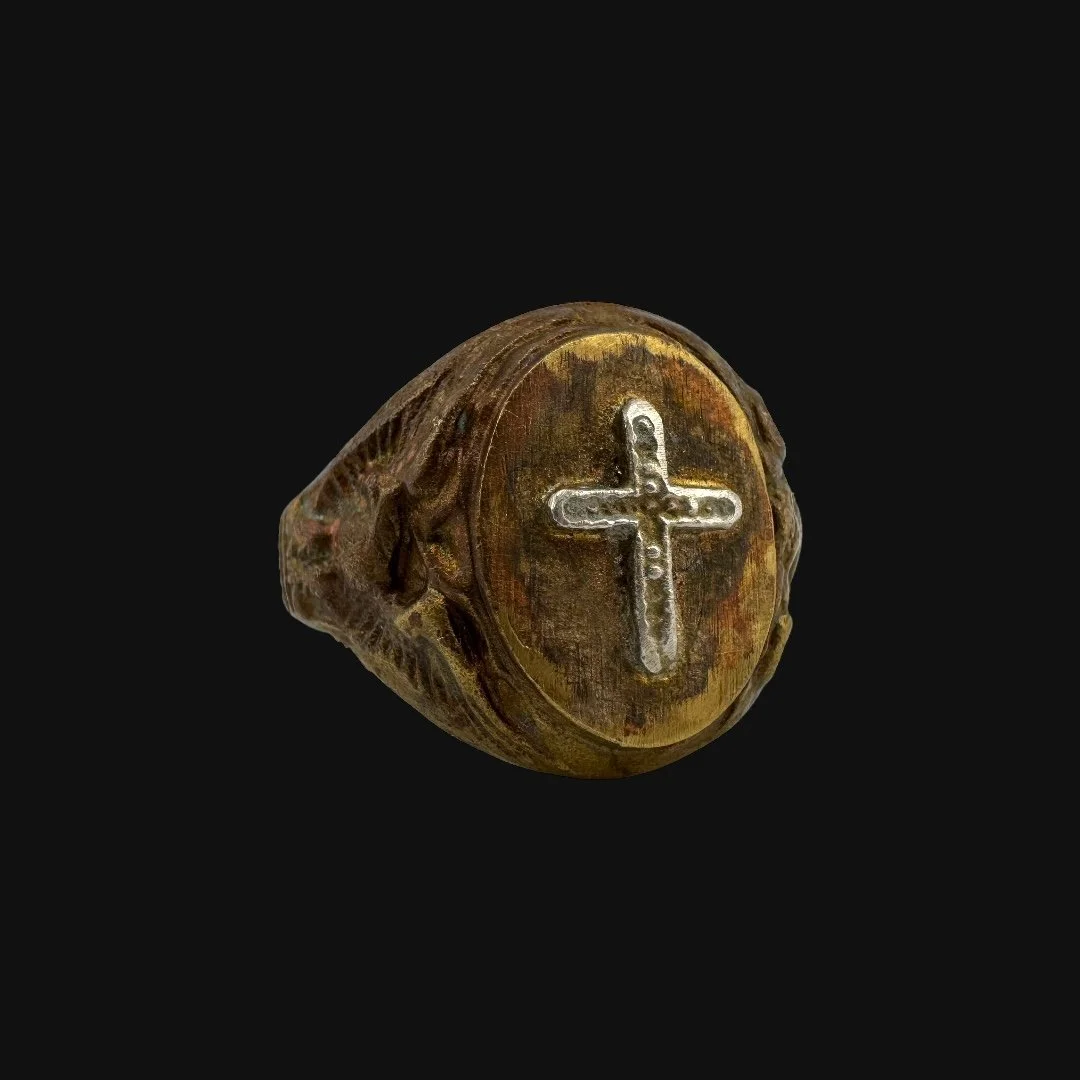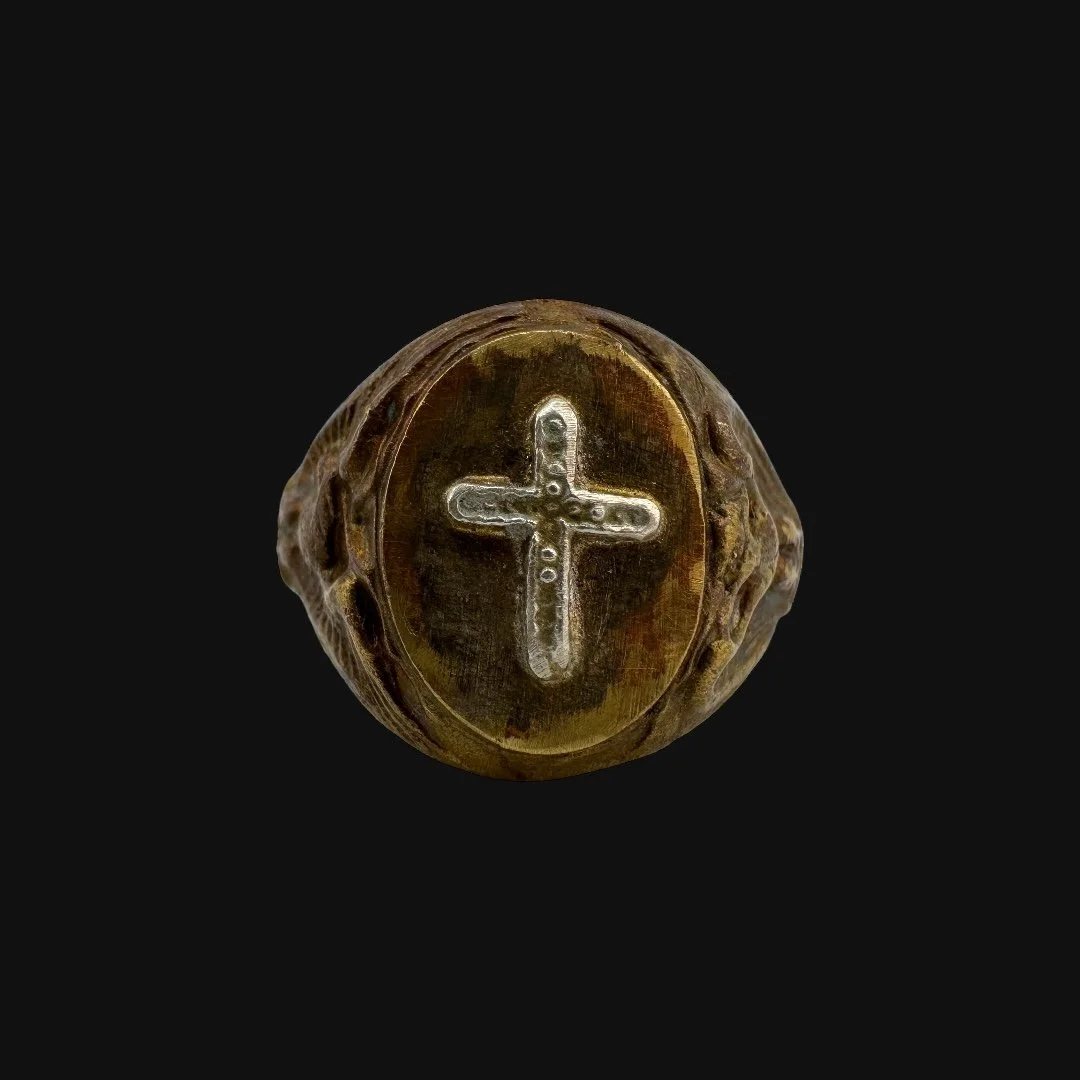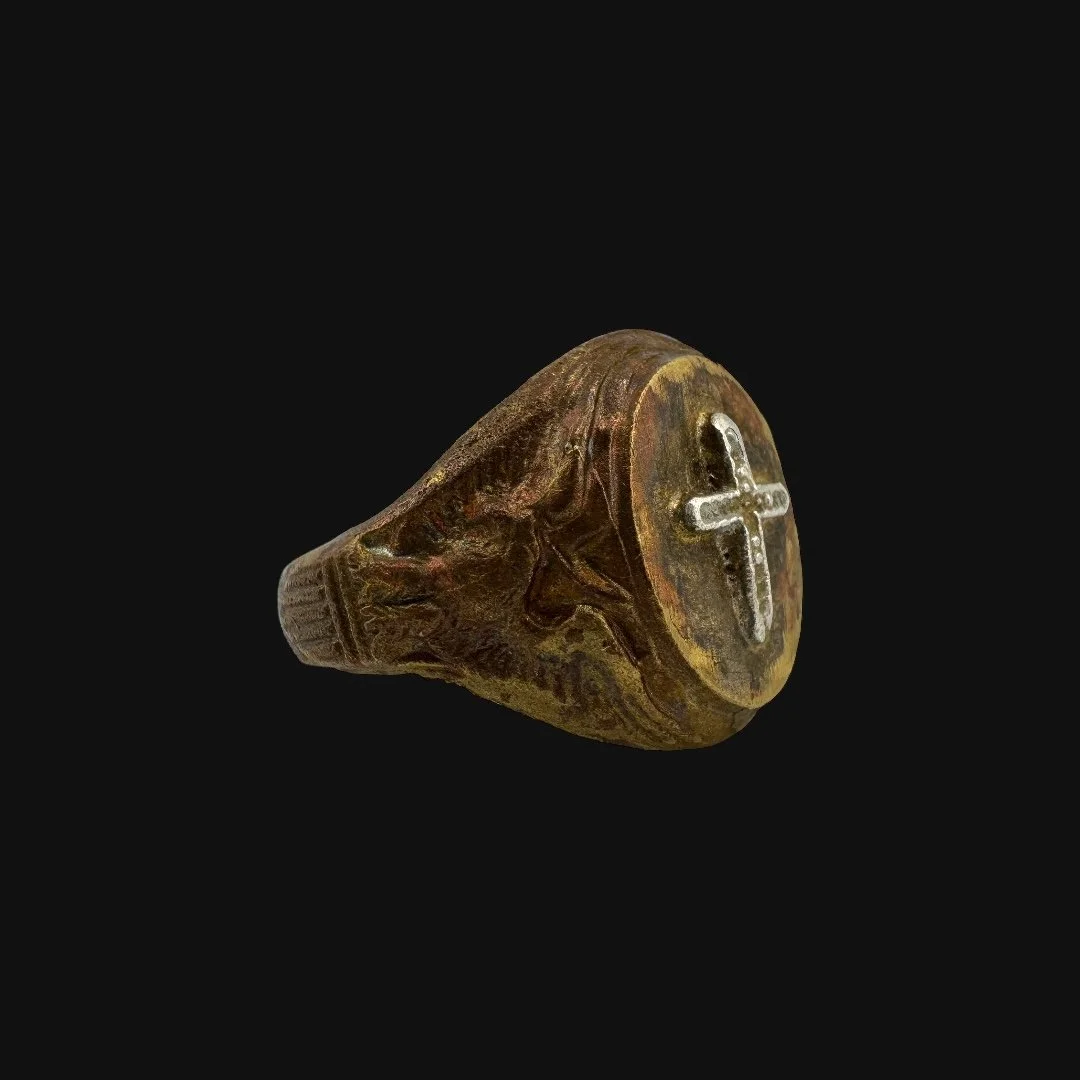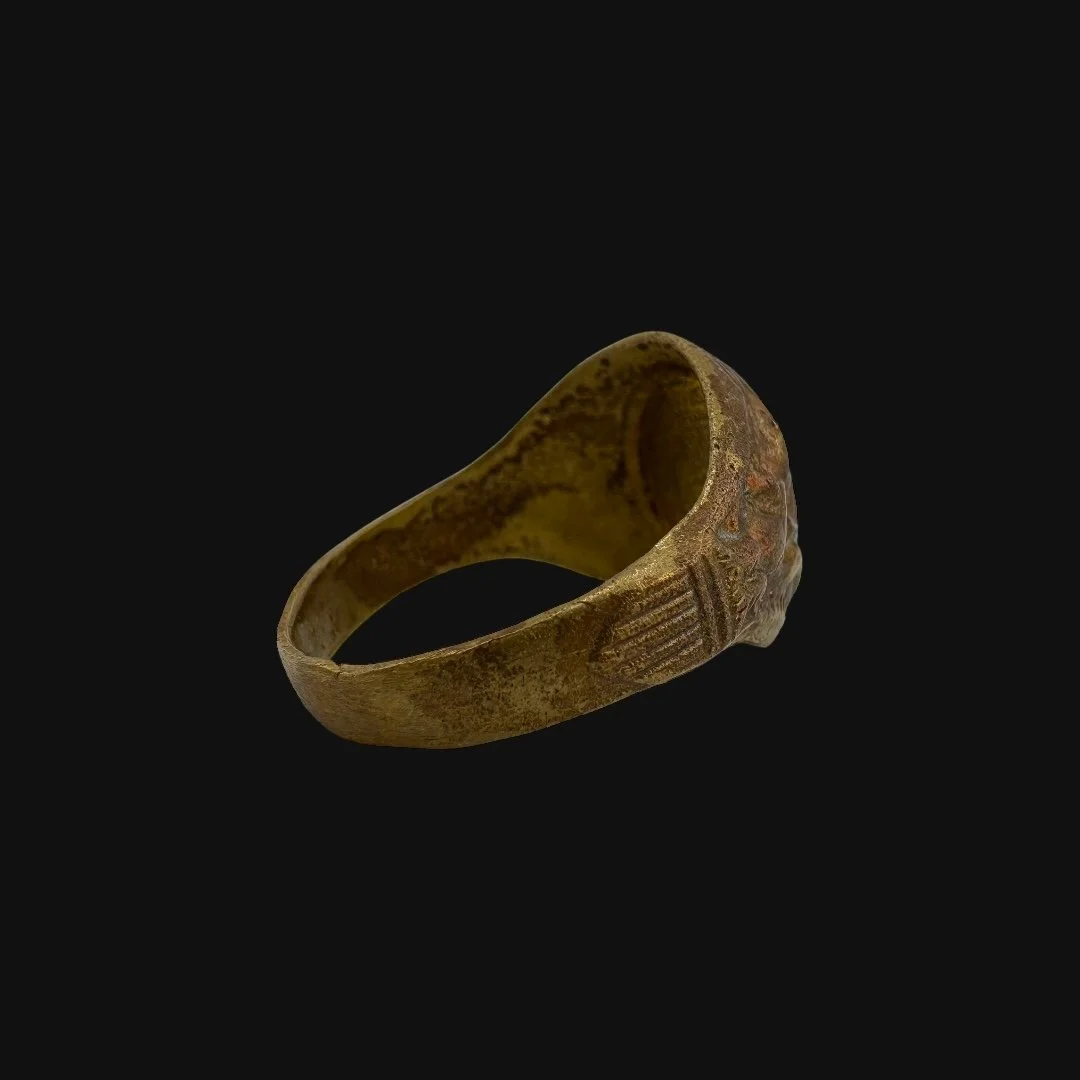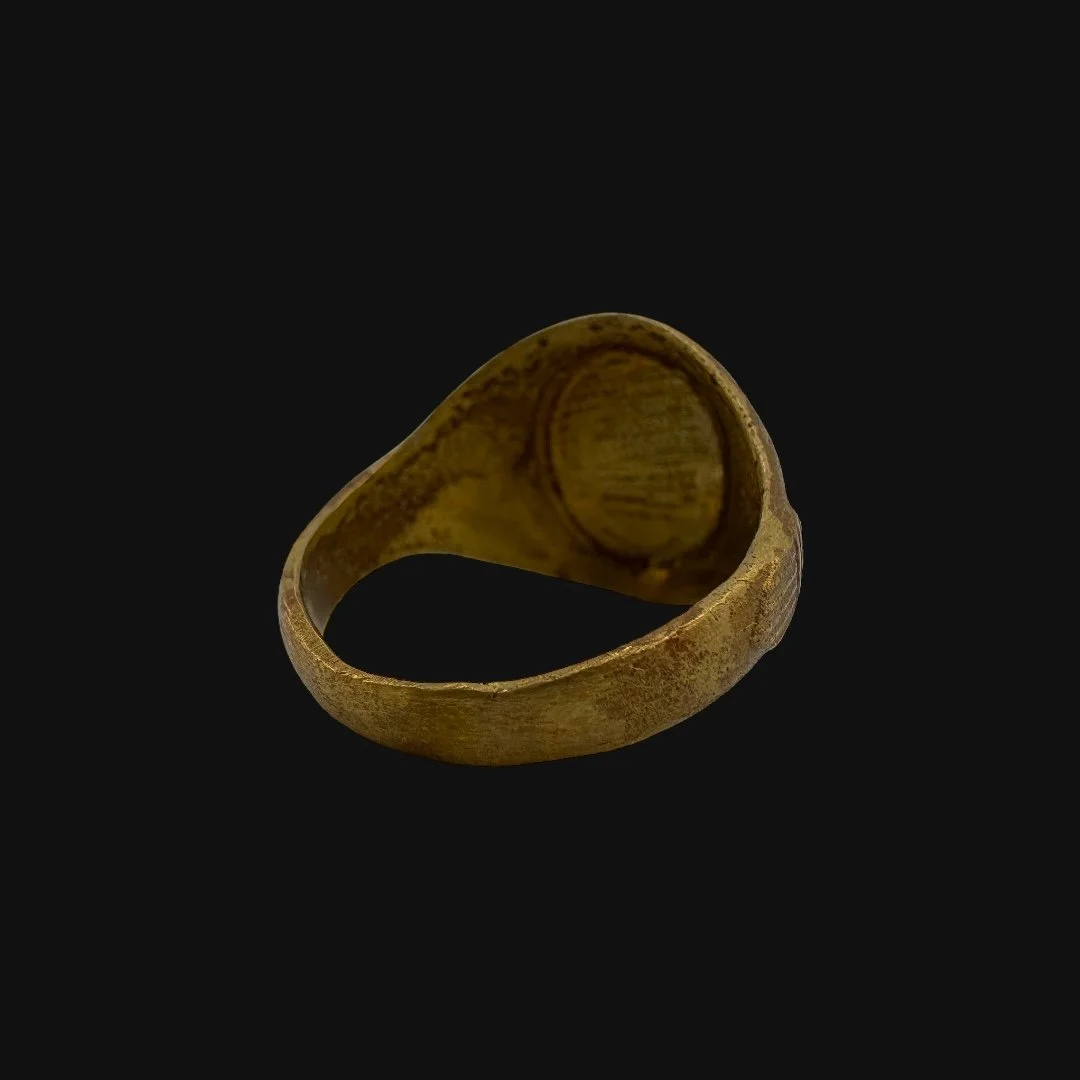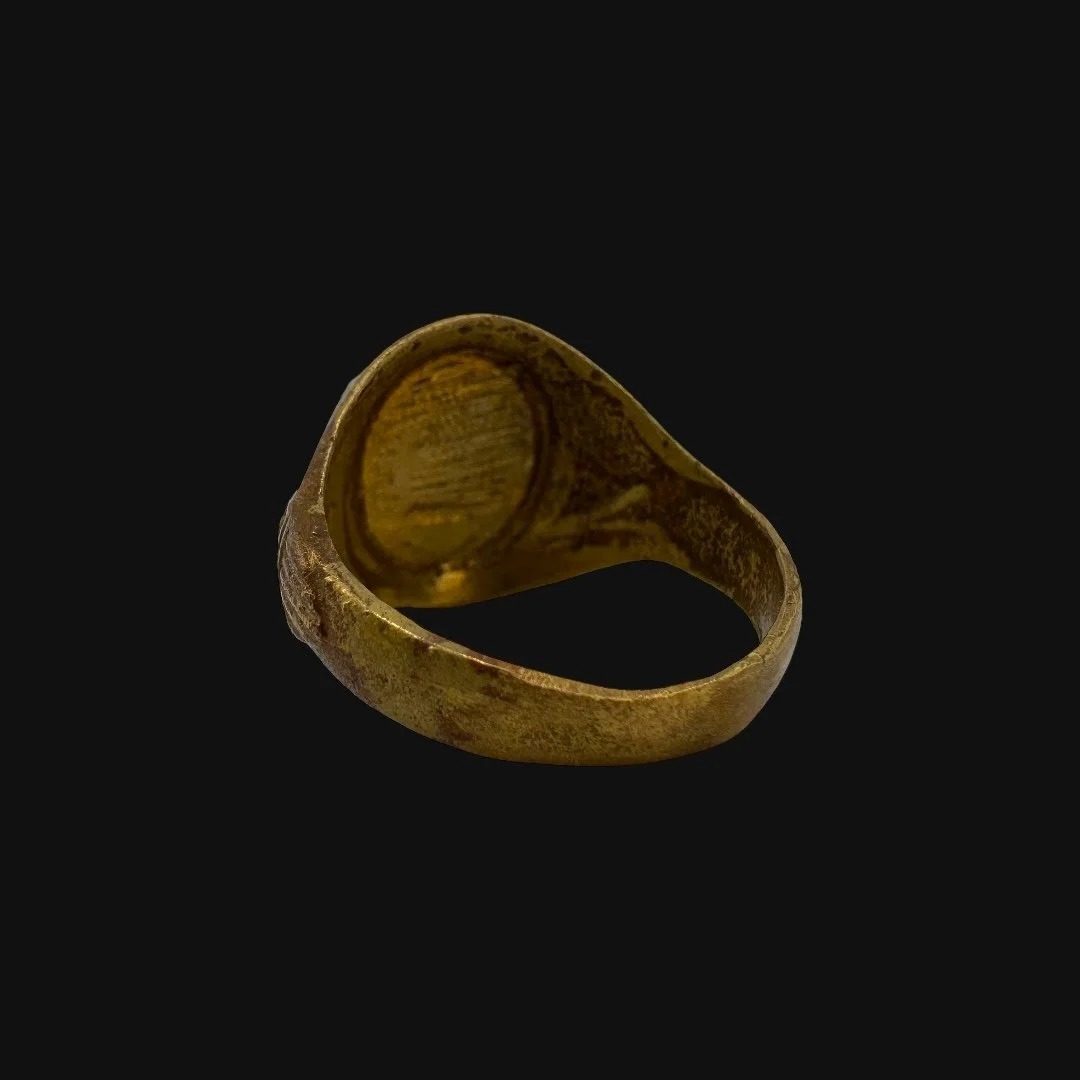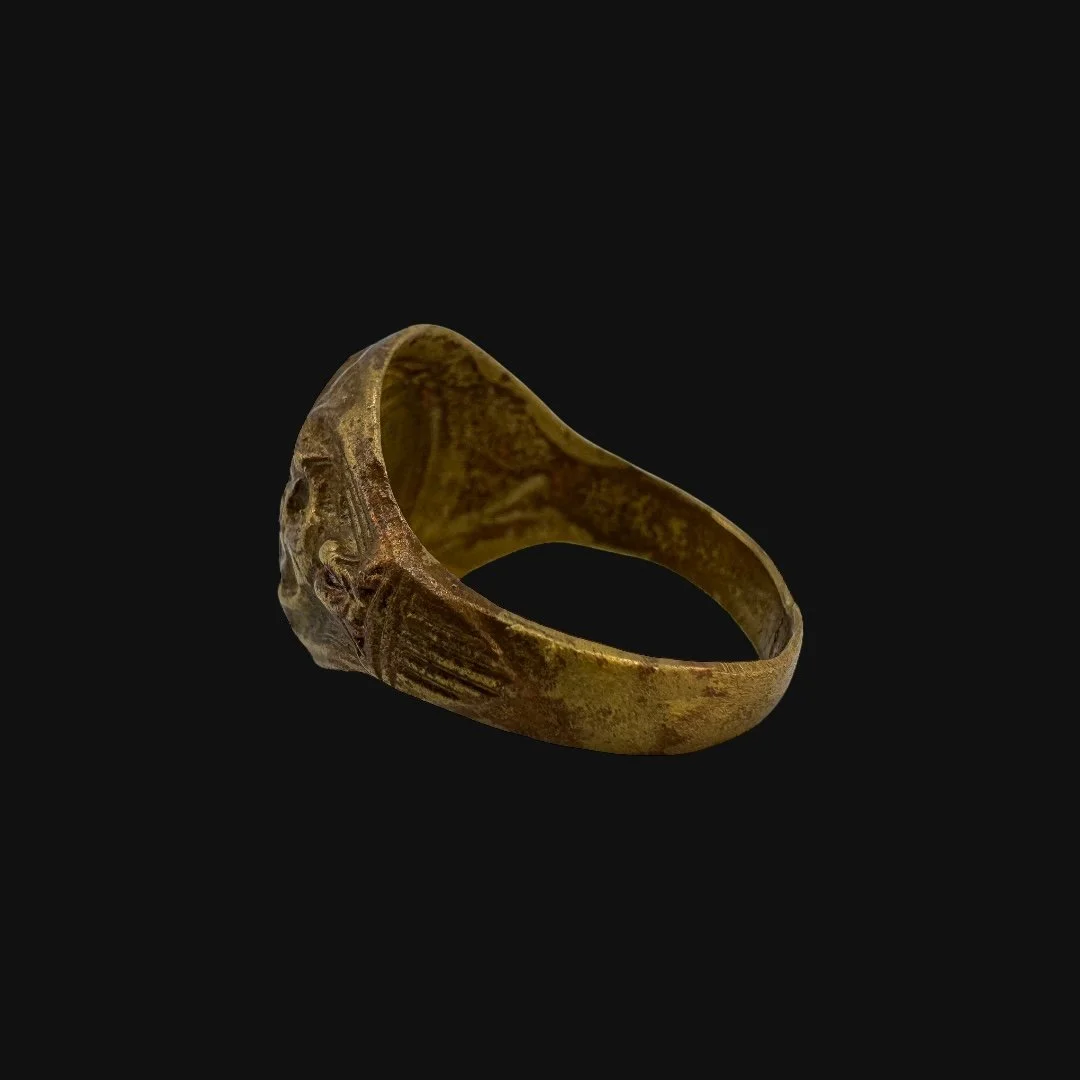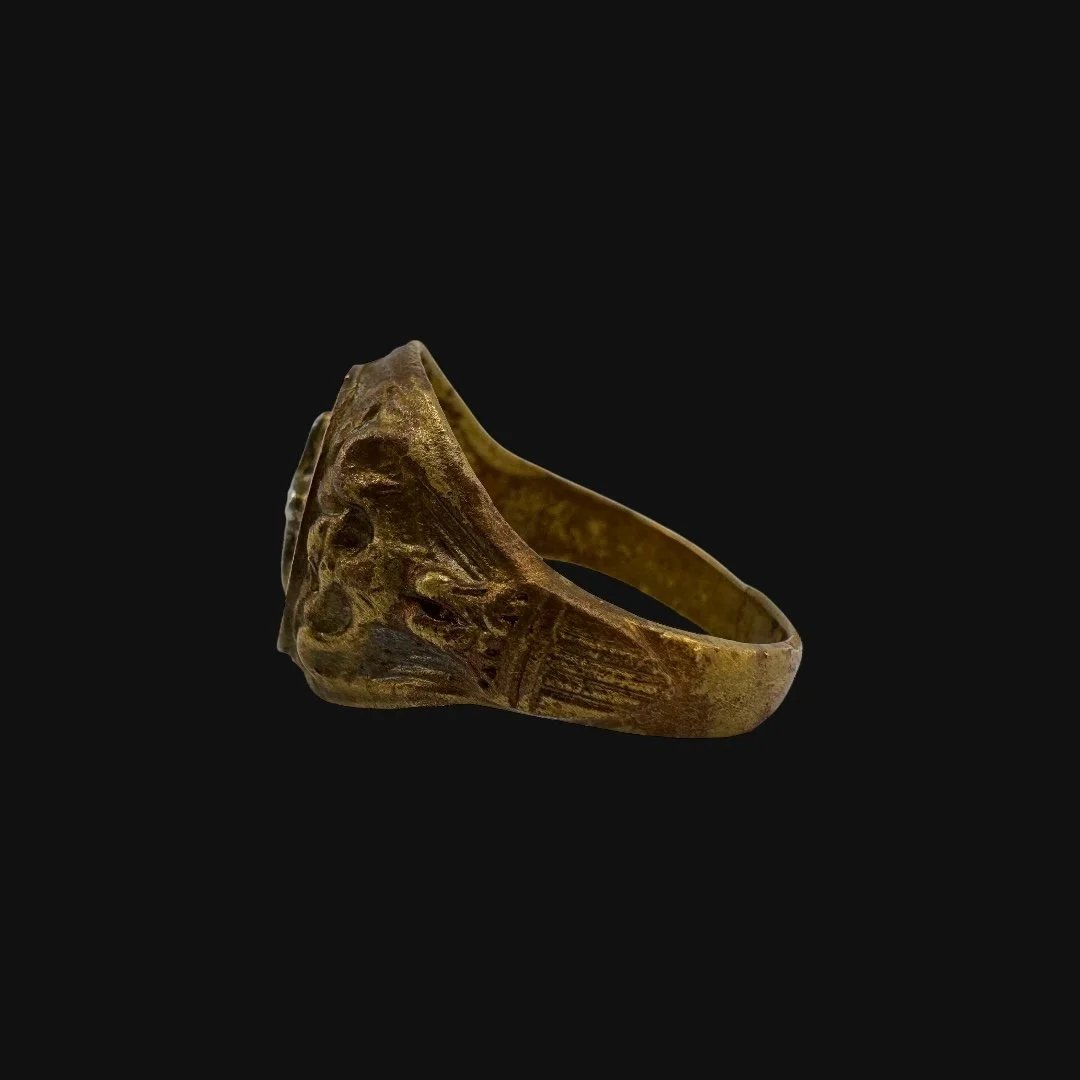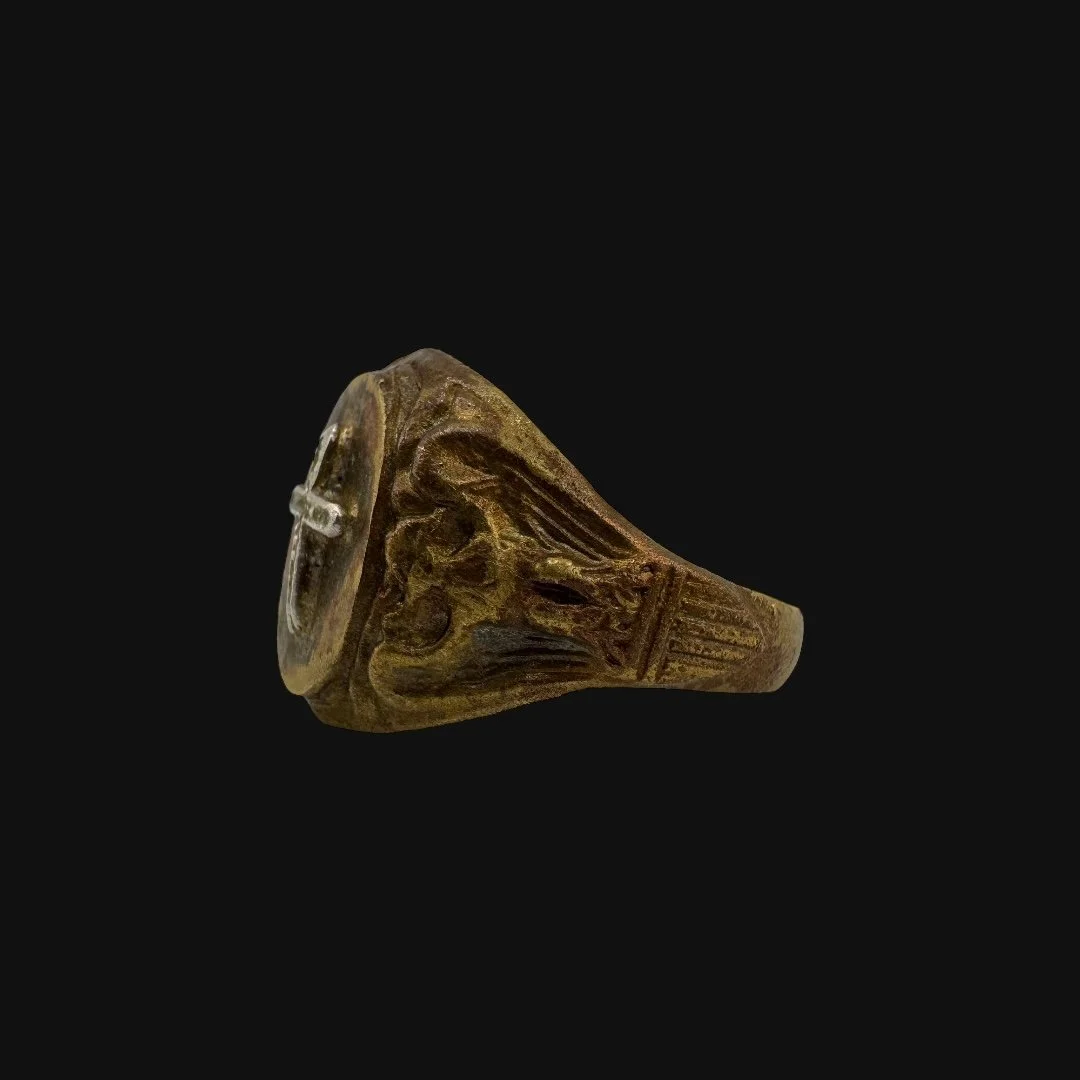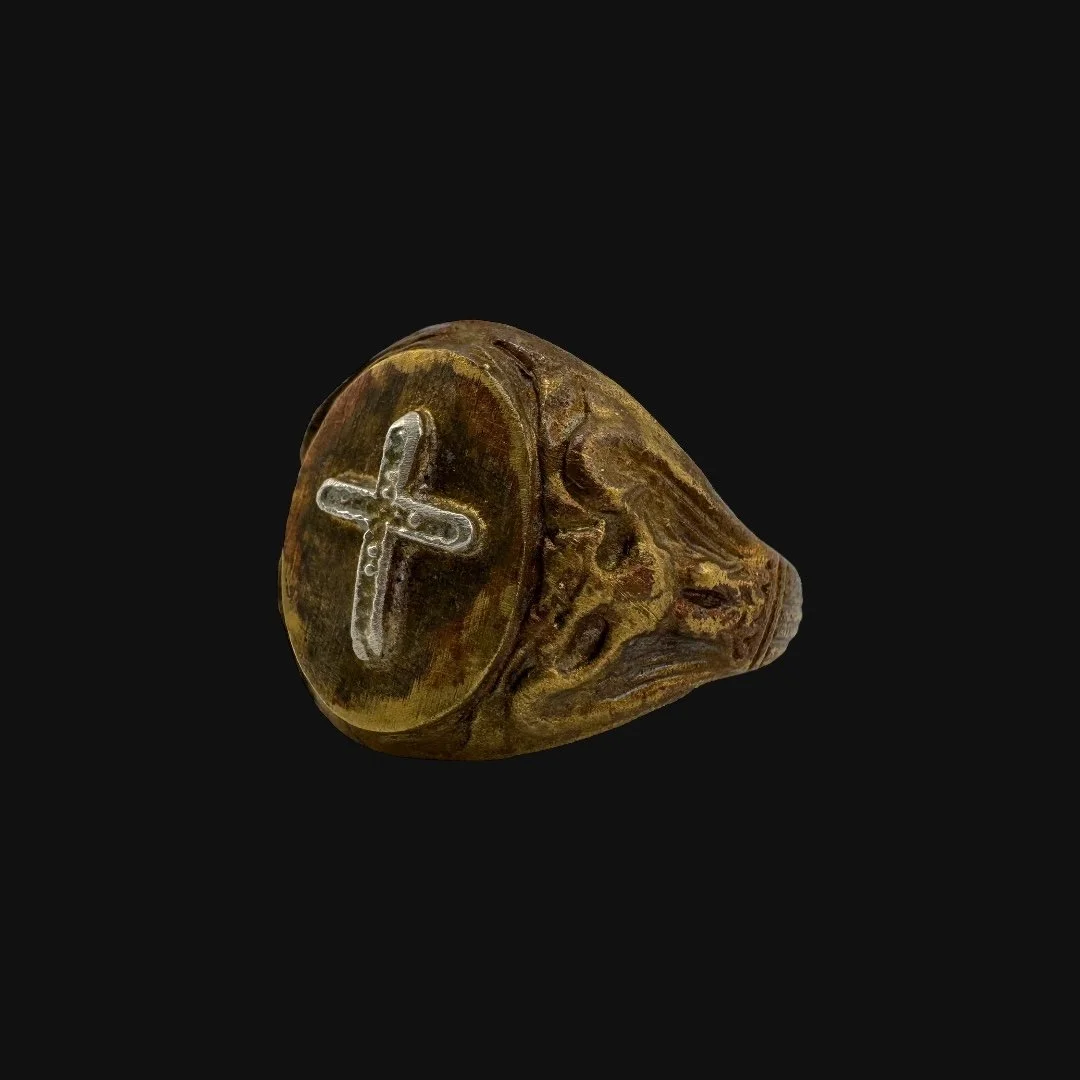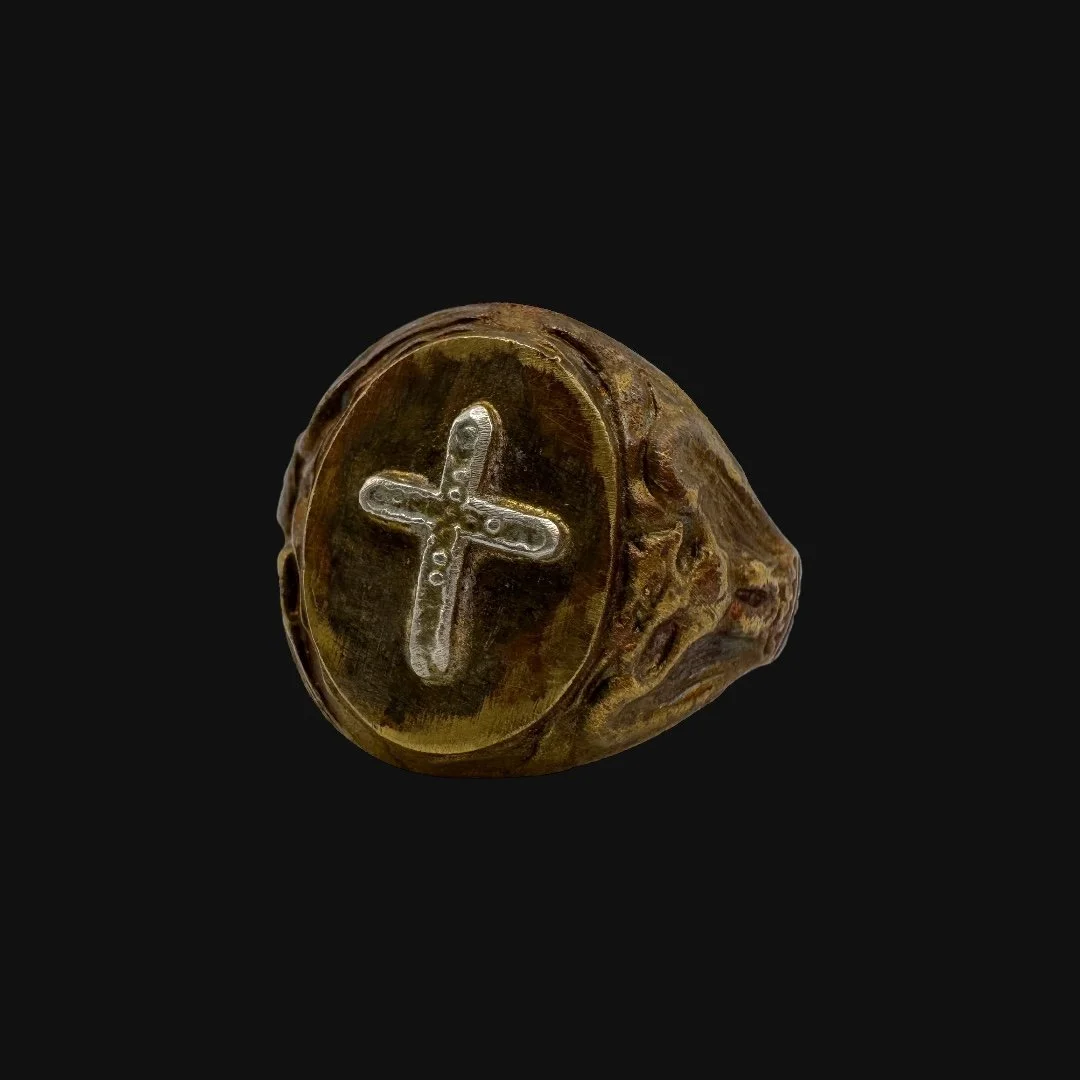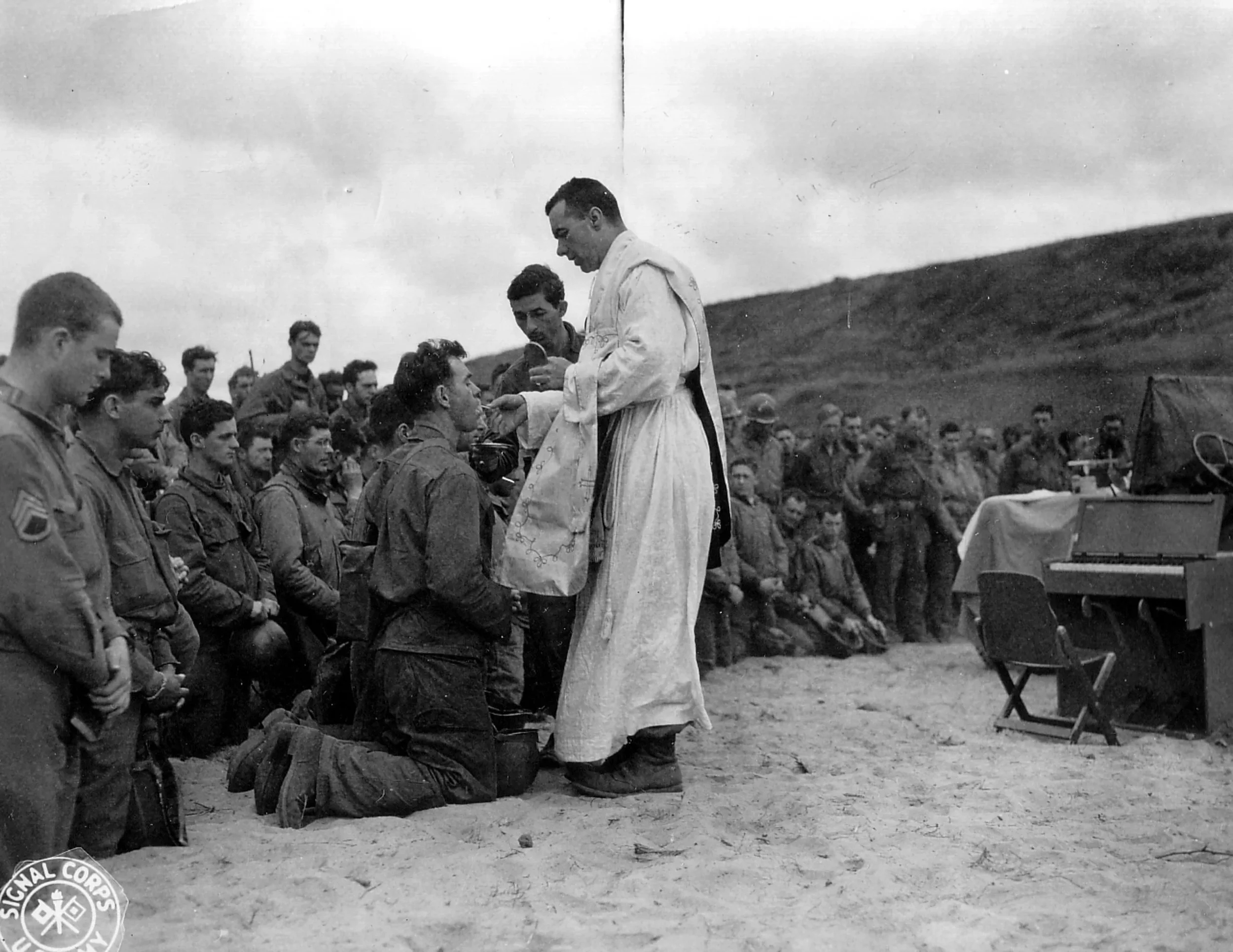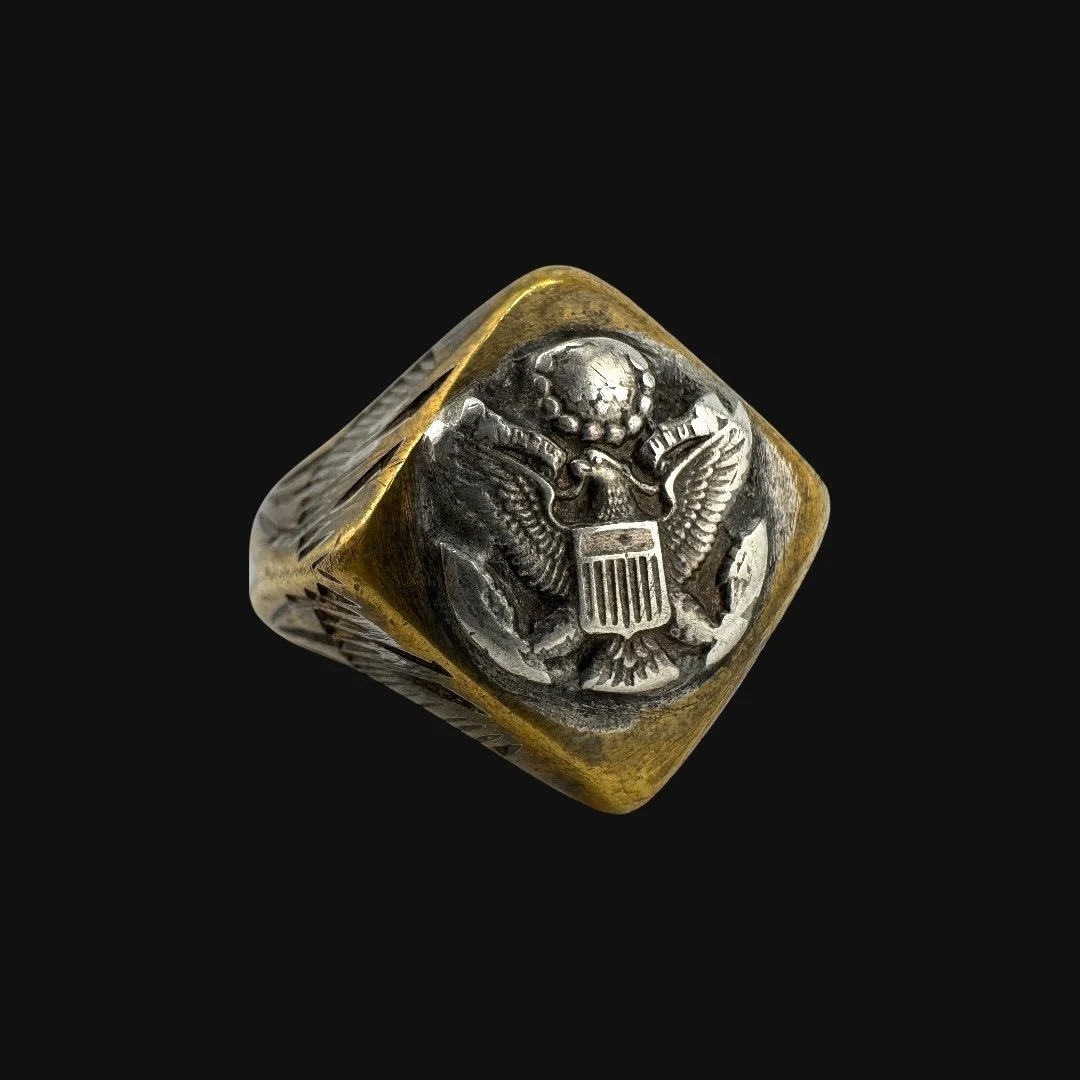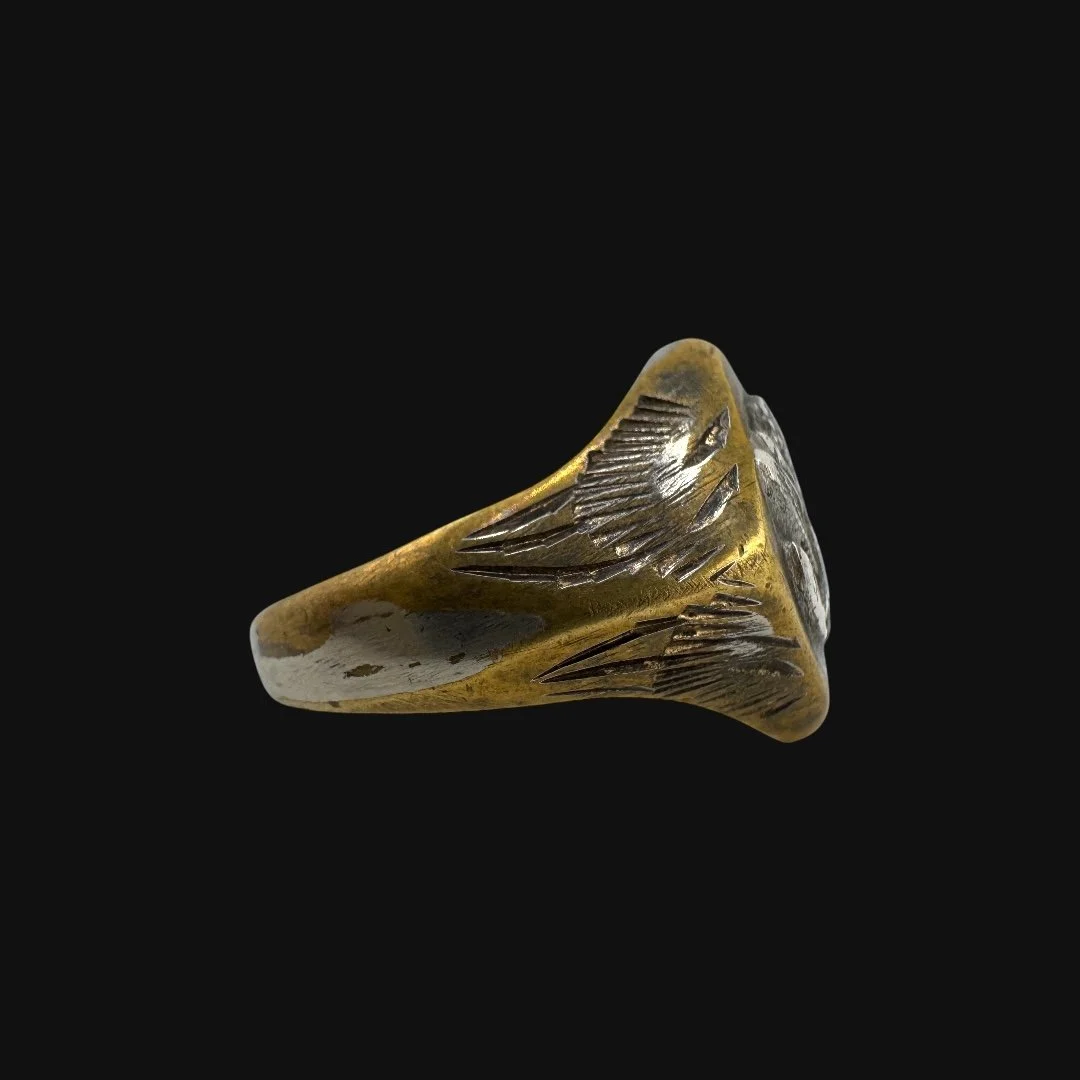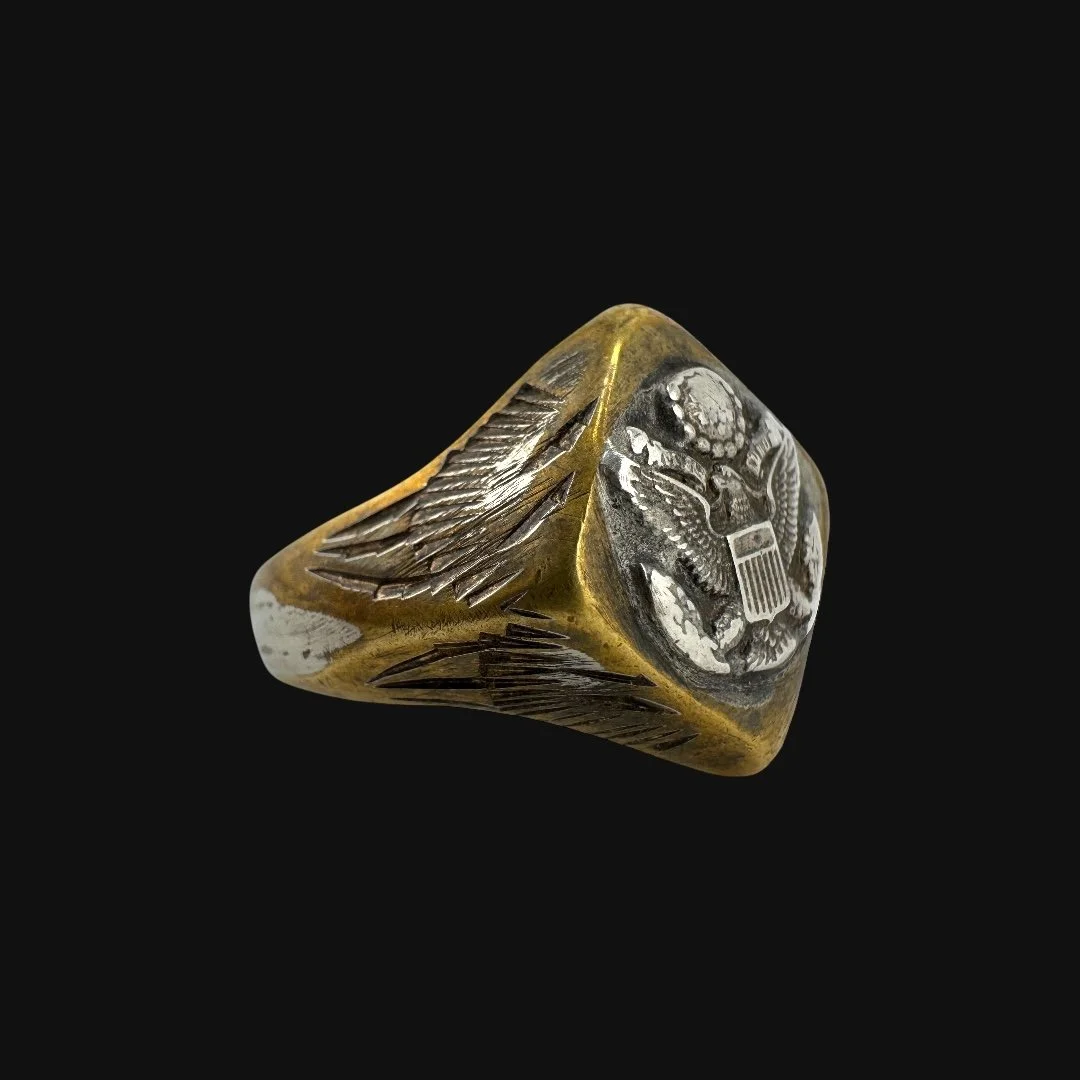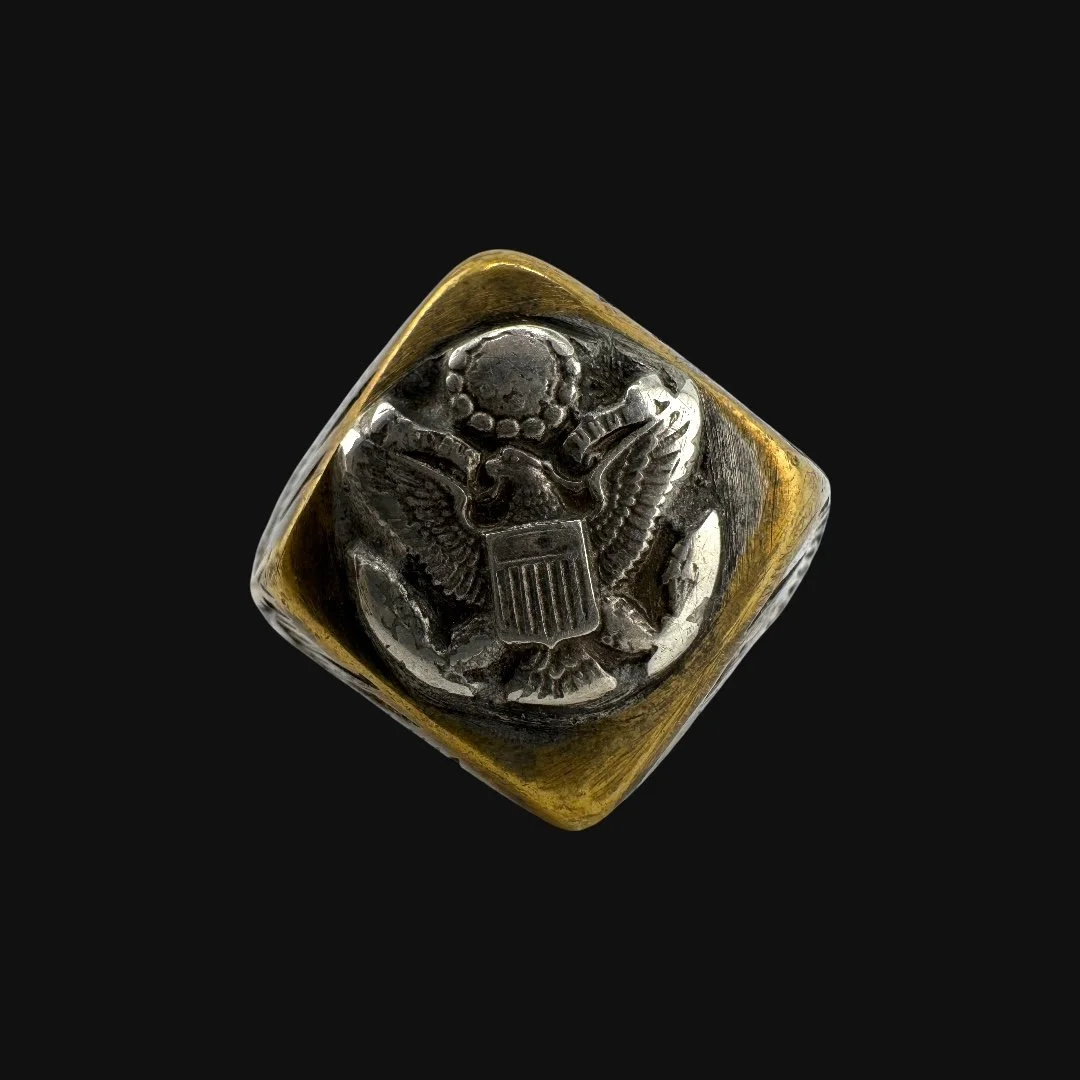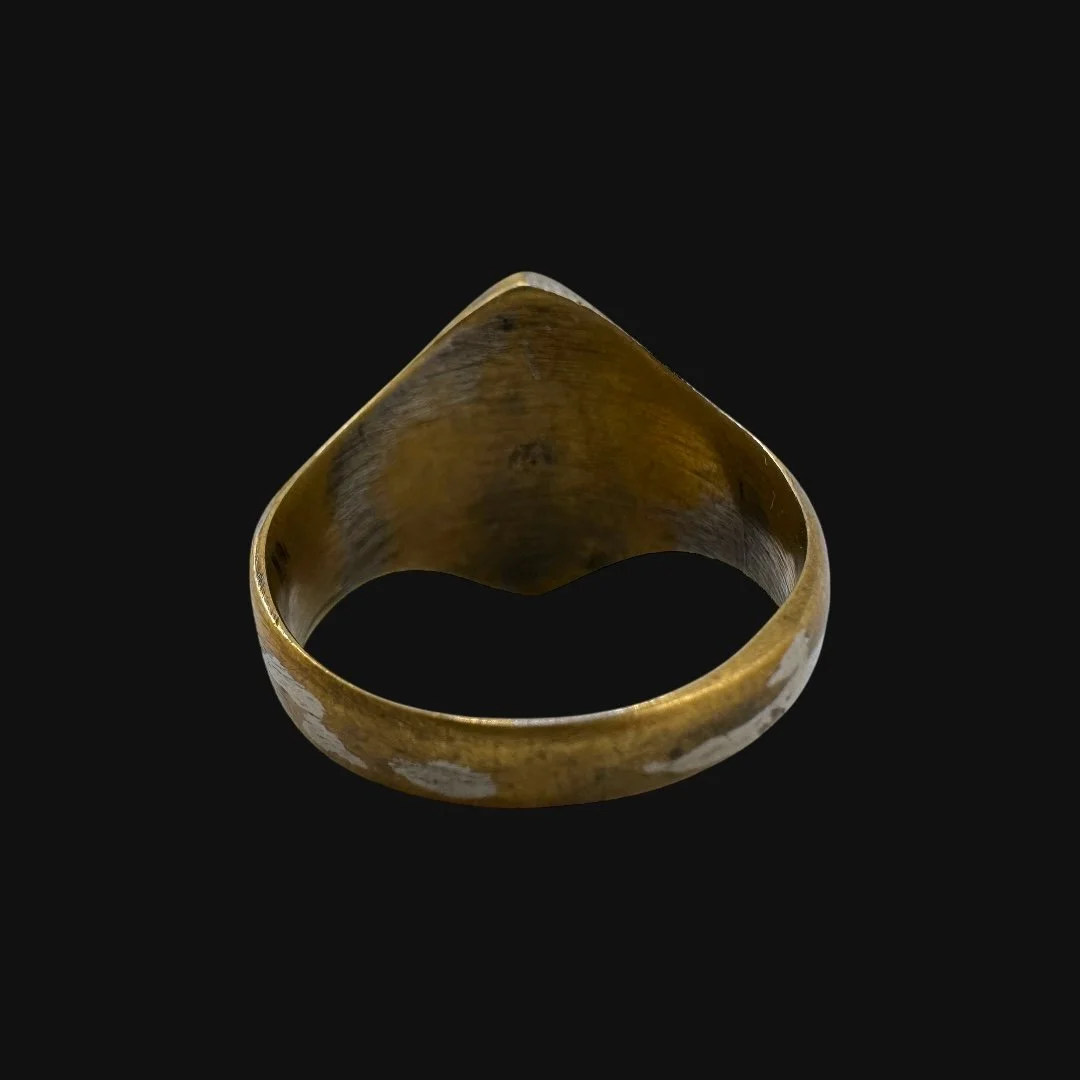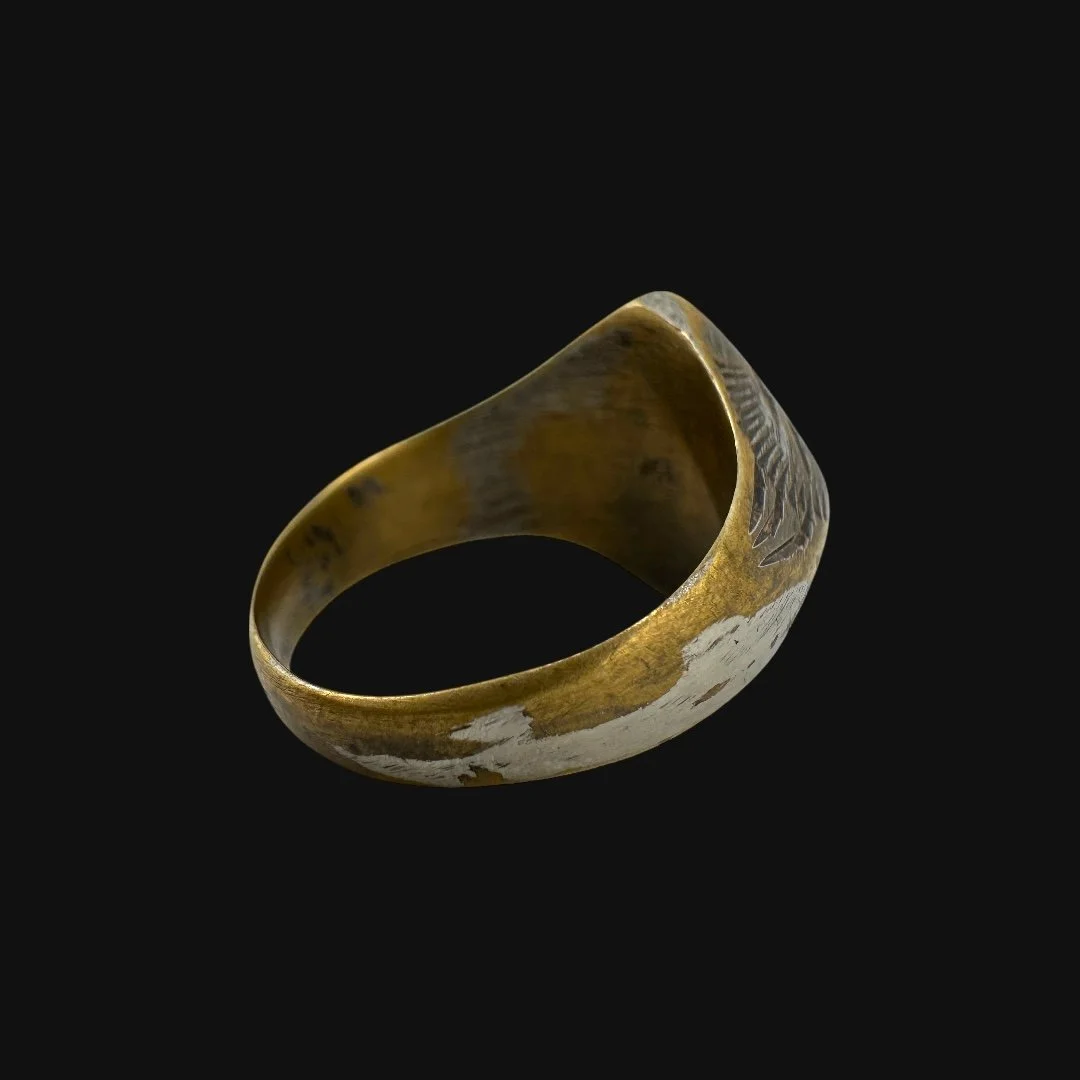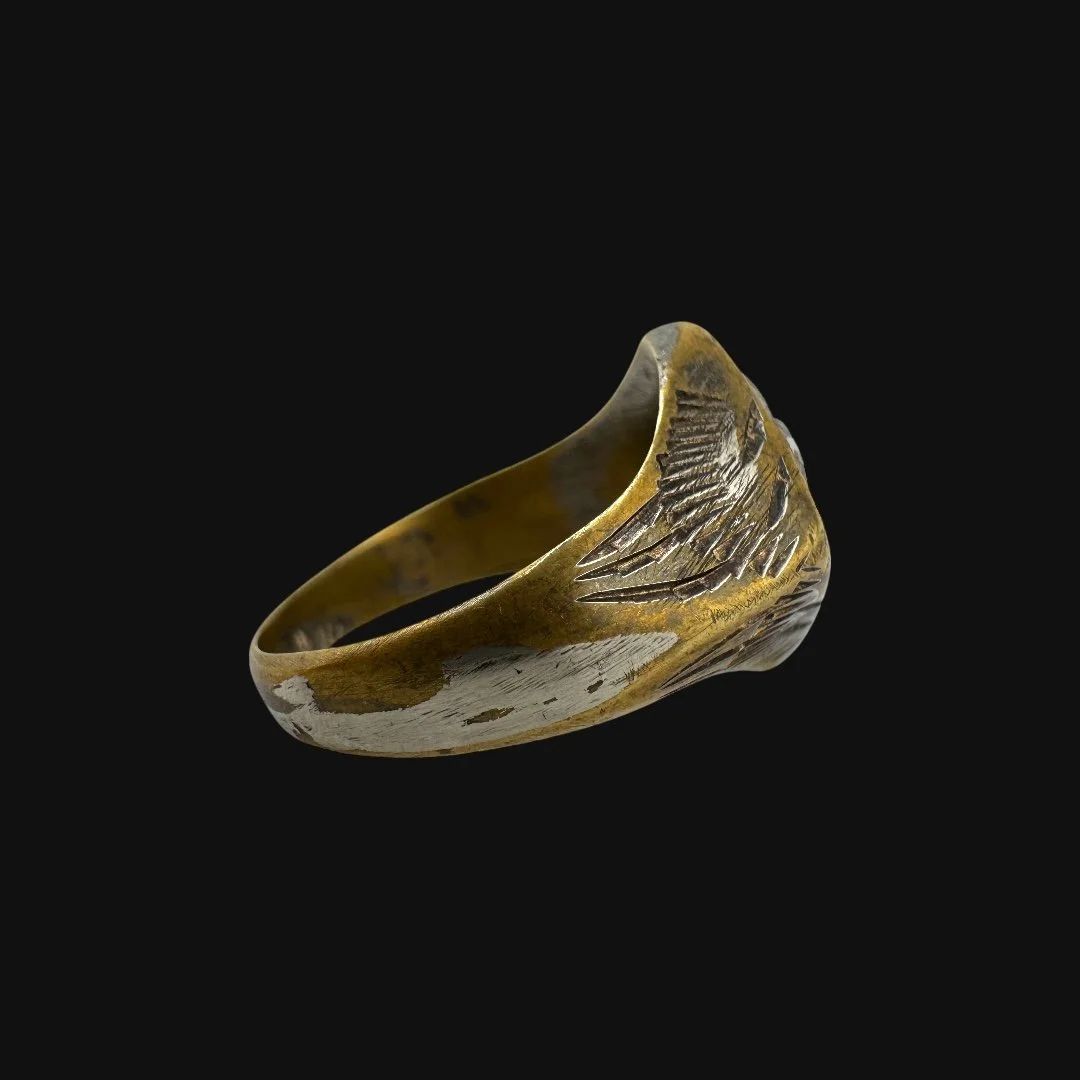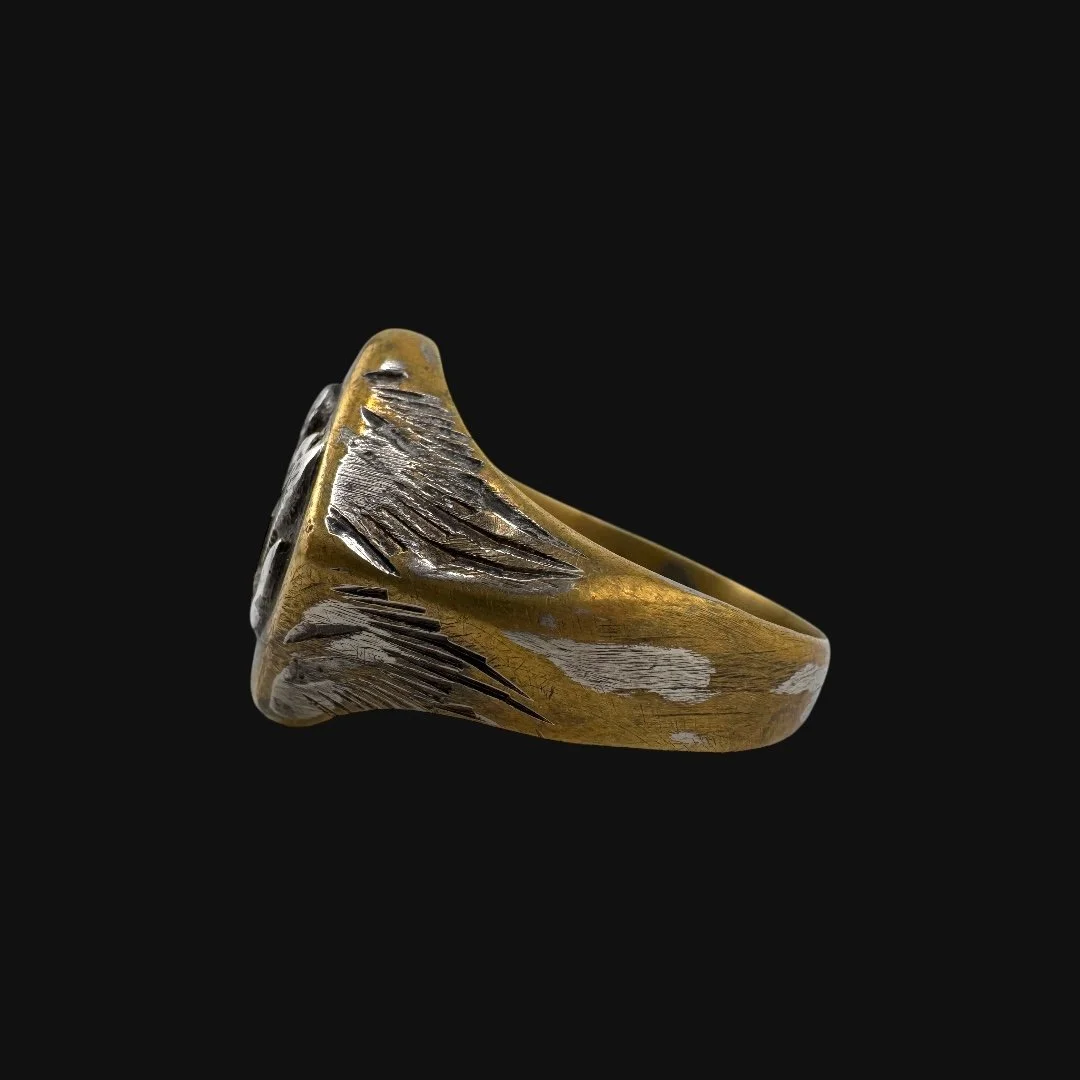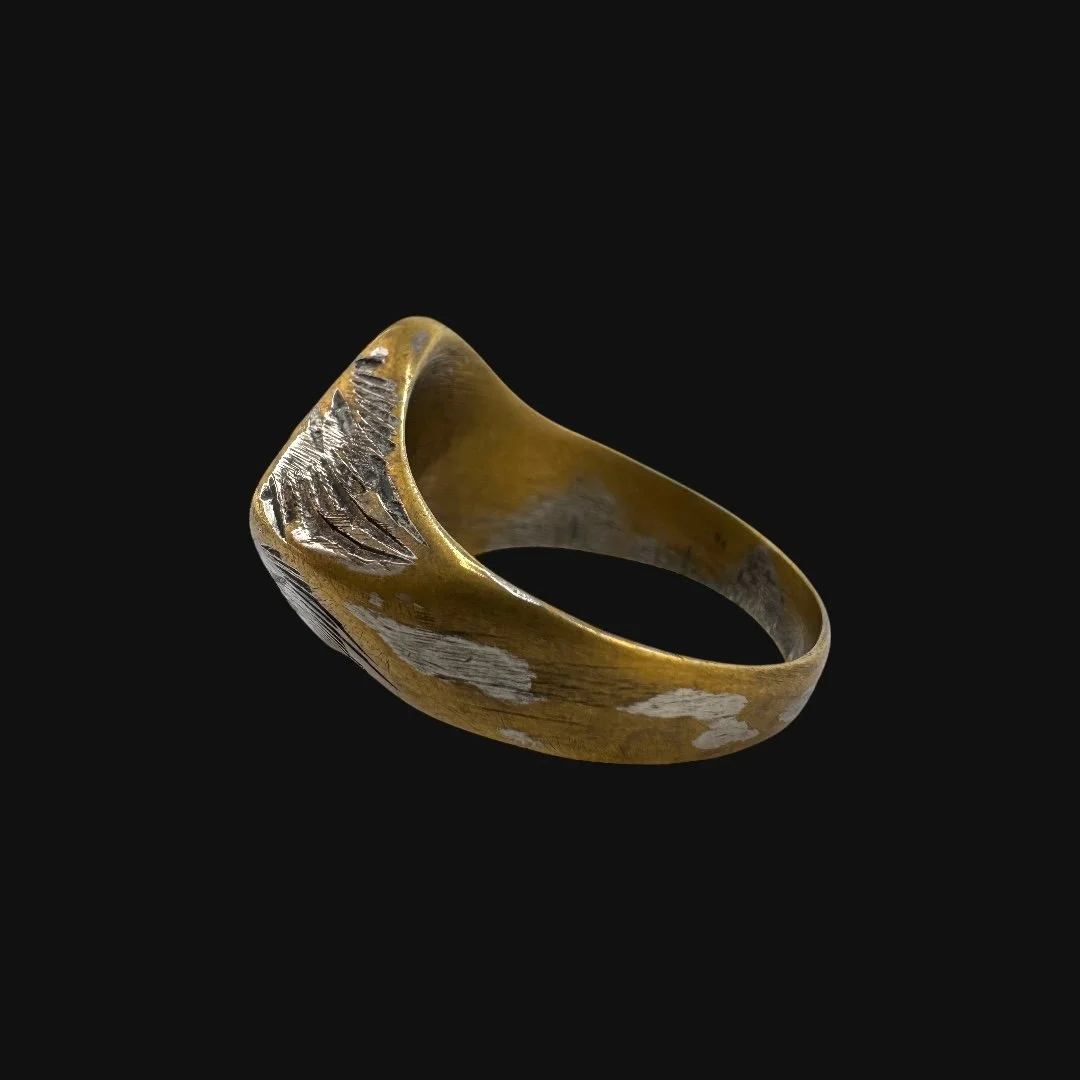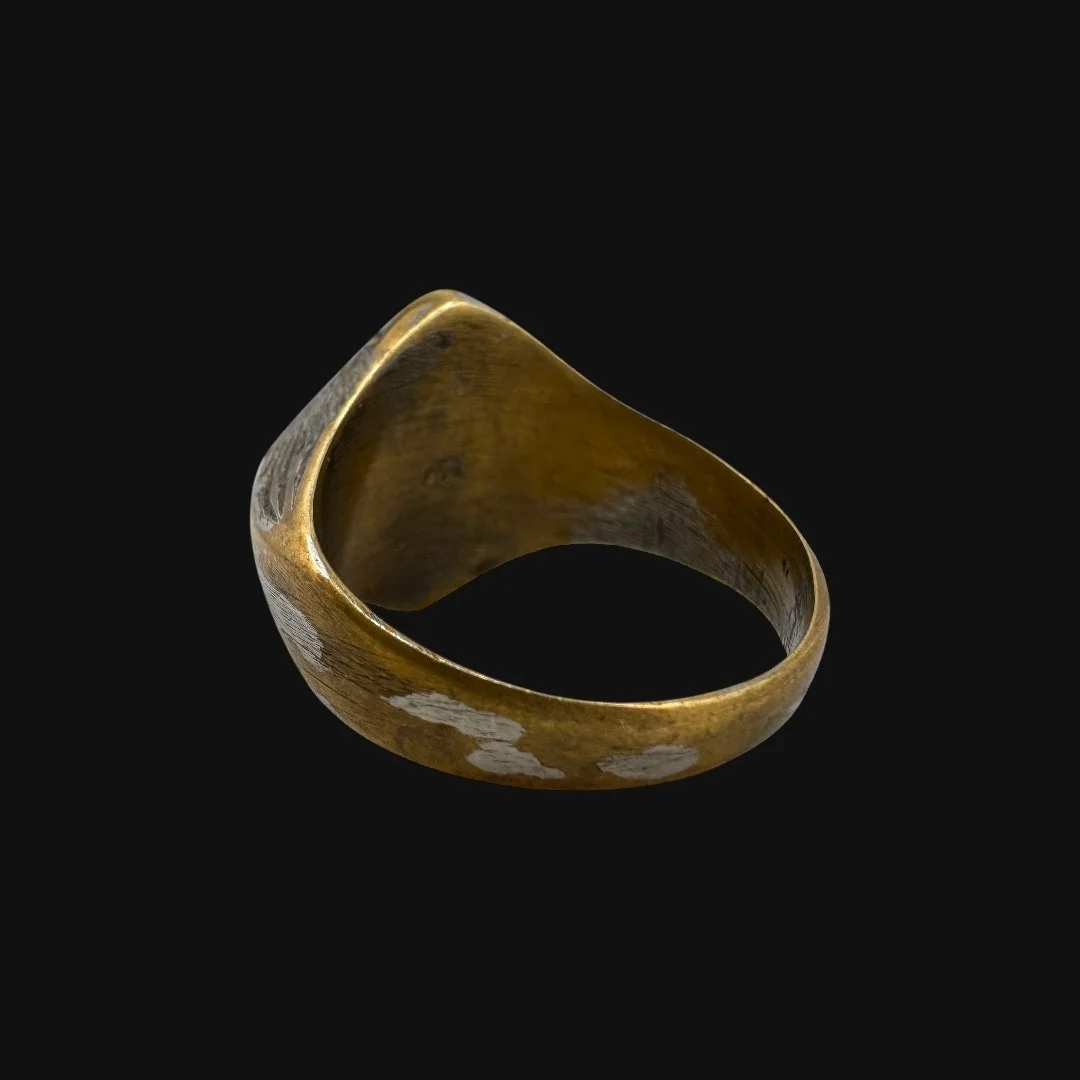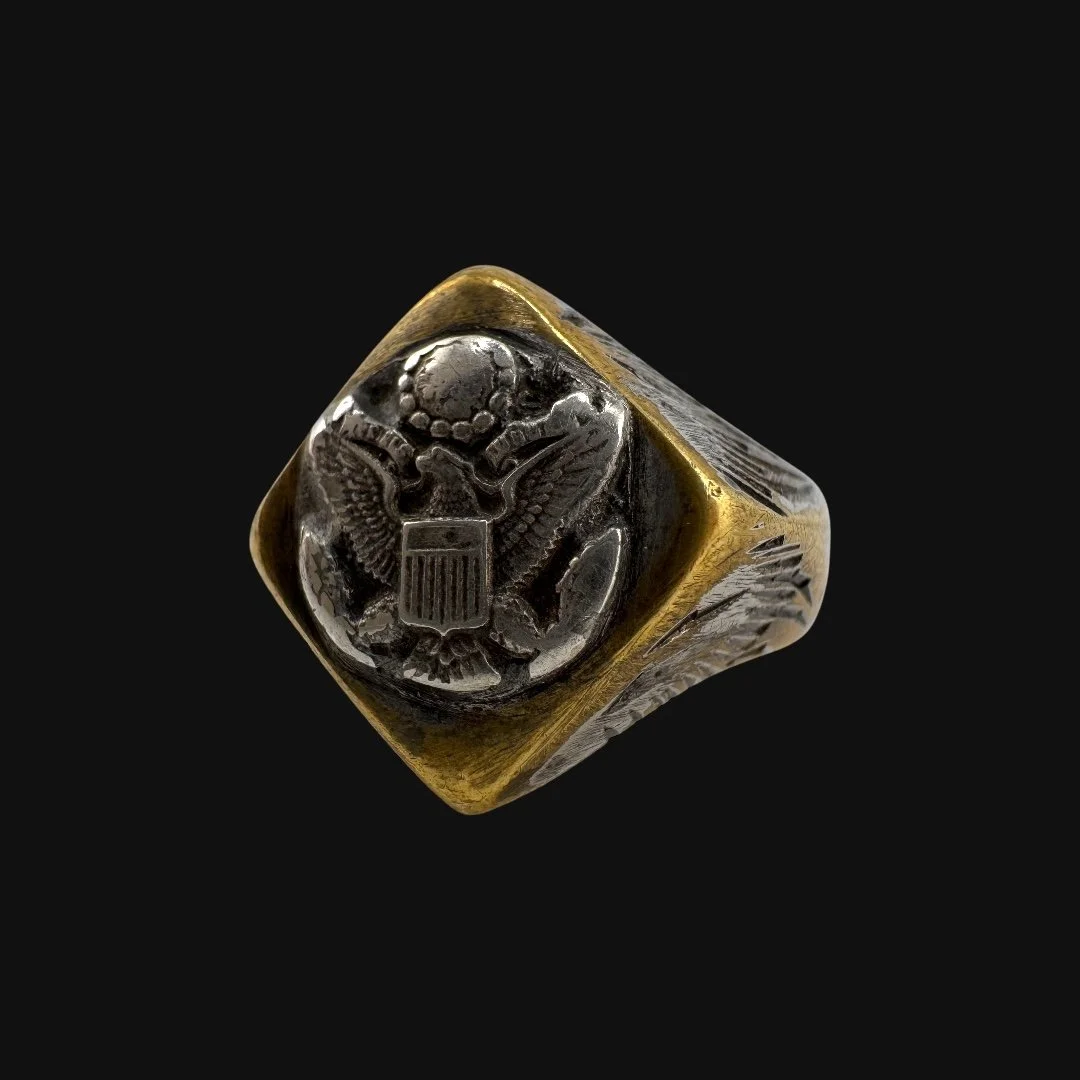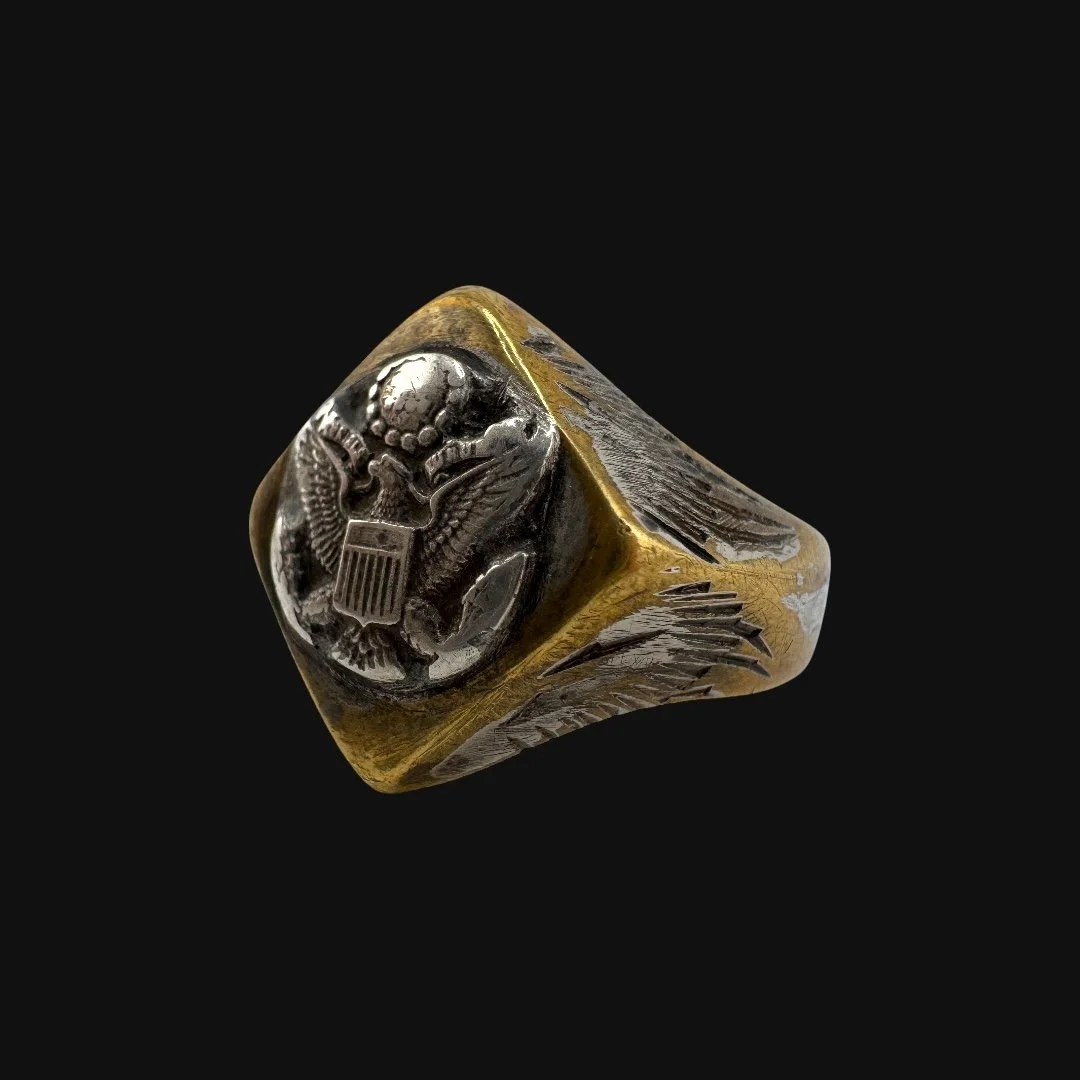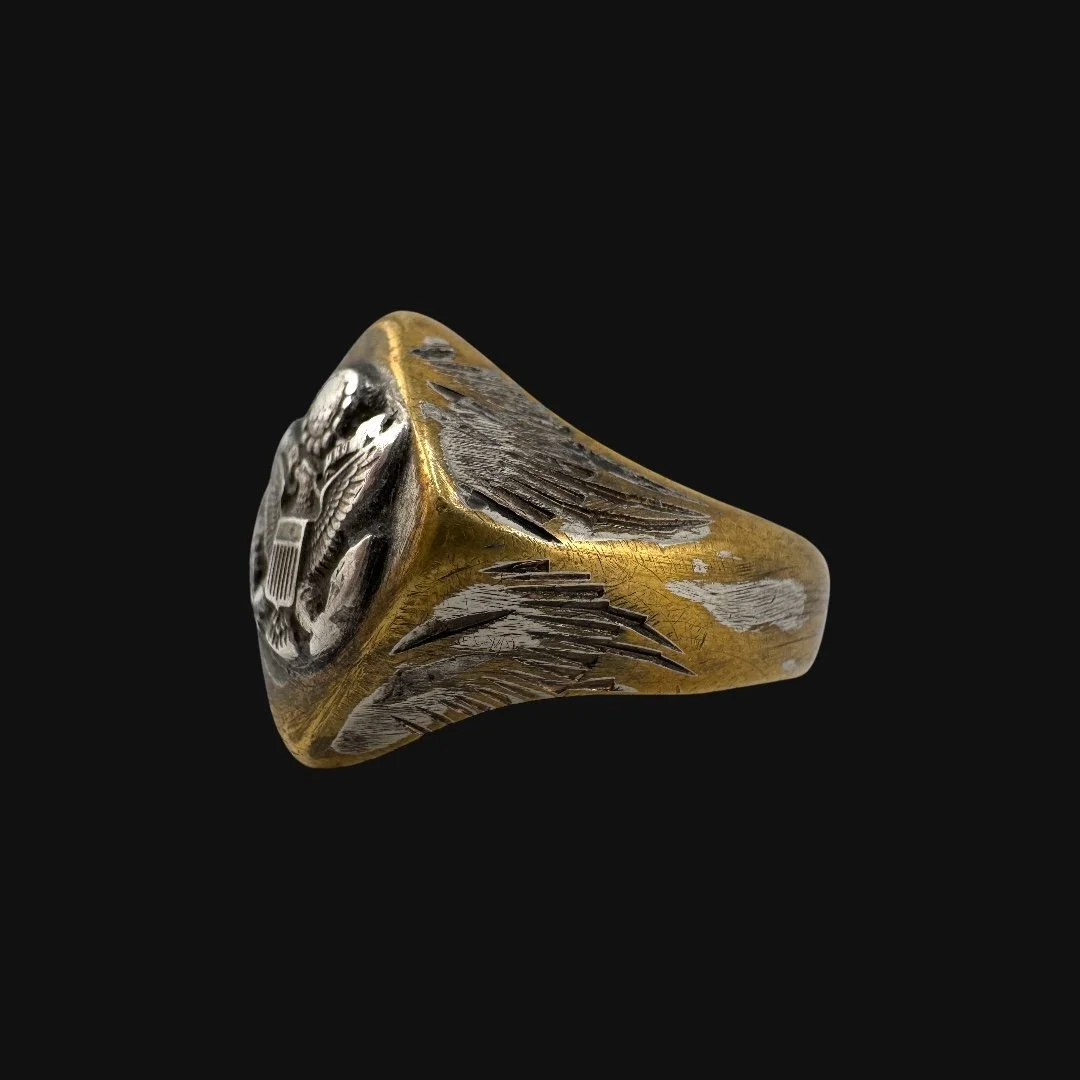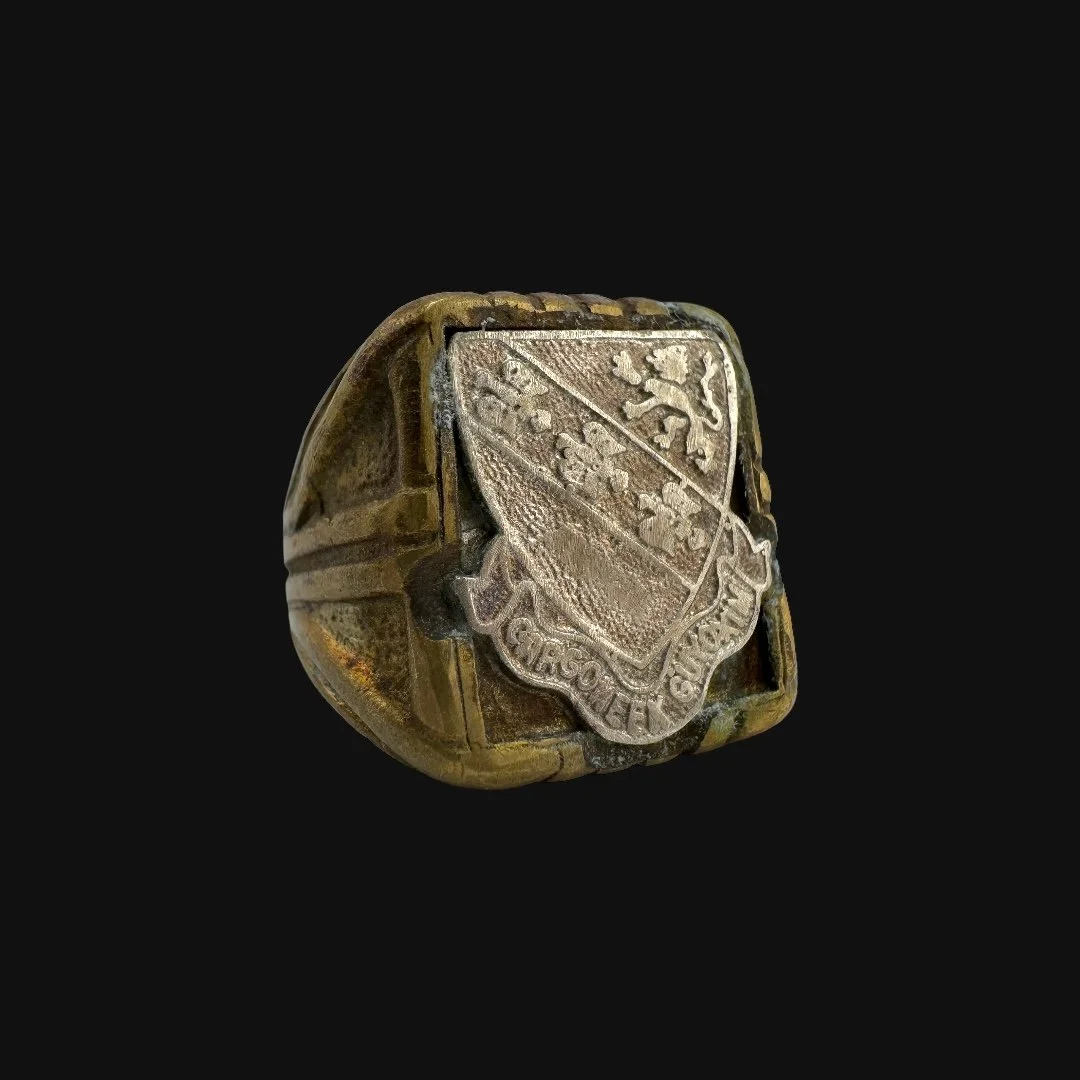 Image 1 of 14
Image 1 of 14

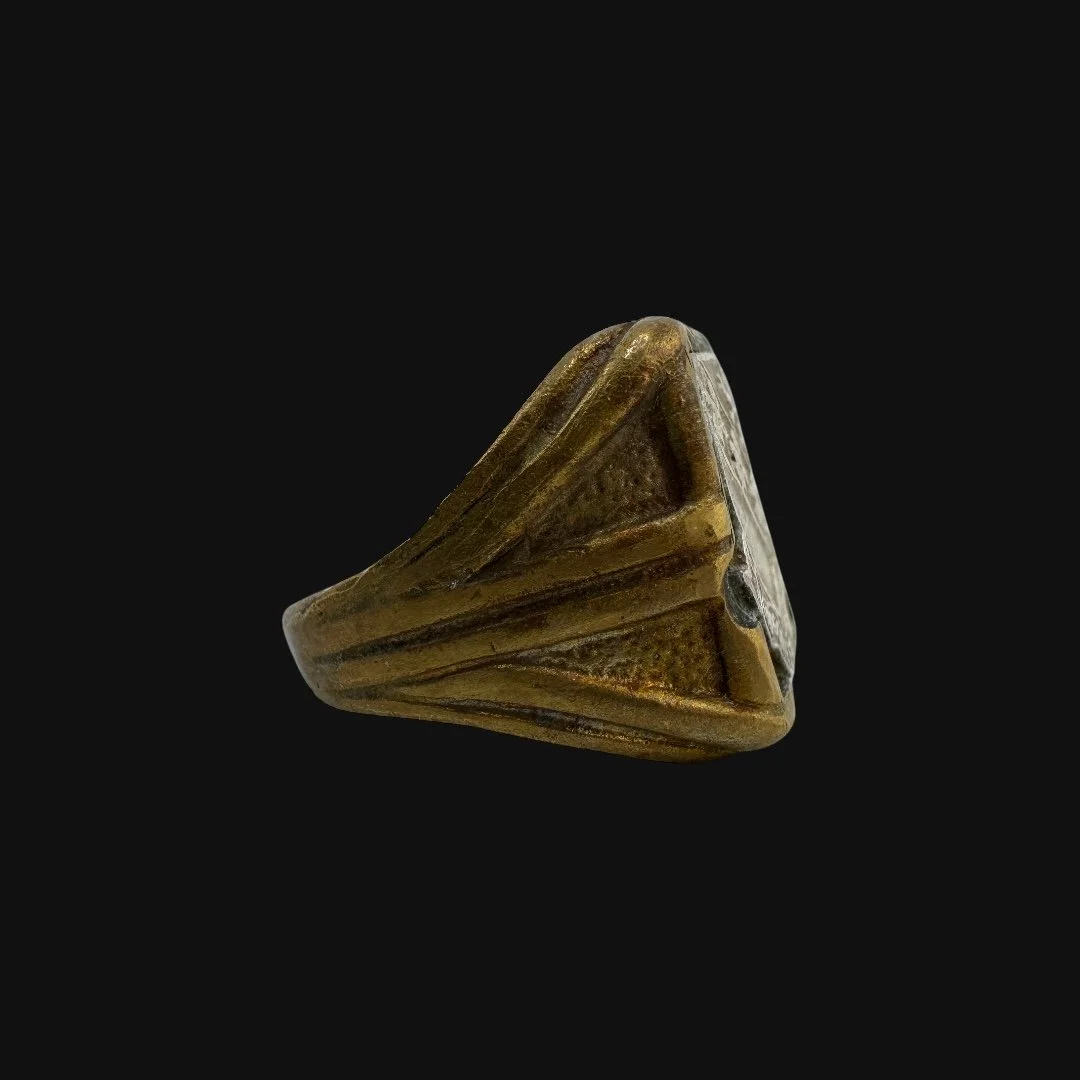 Image 2 of 14
Image 2 of 14

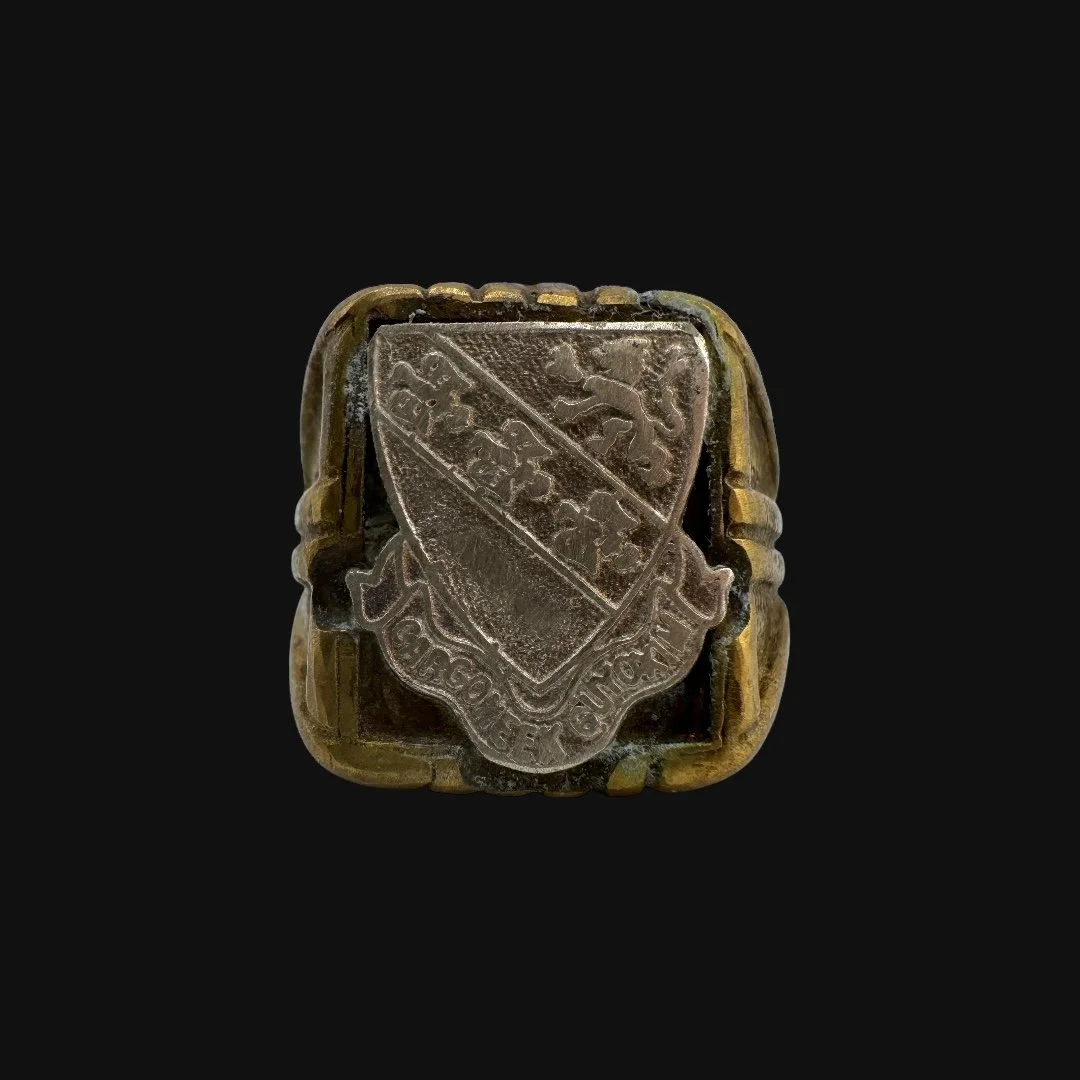 Image 3 of 14
Image 3 of 14

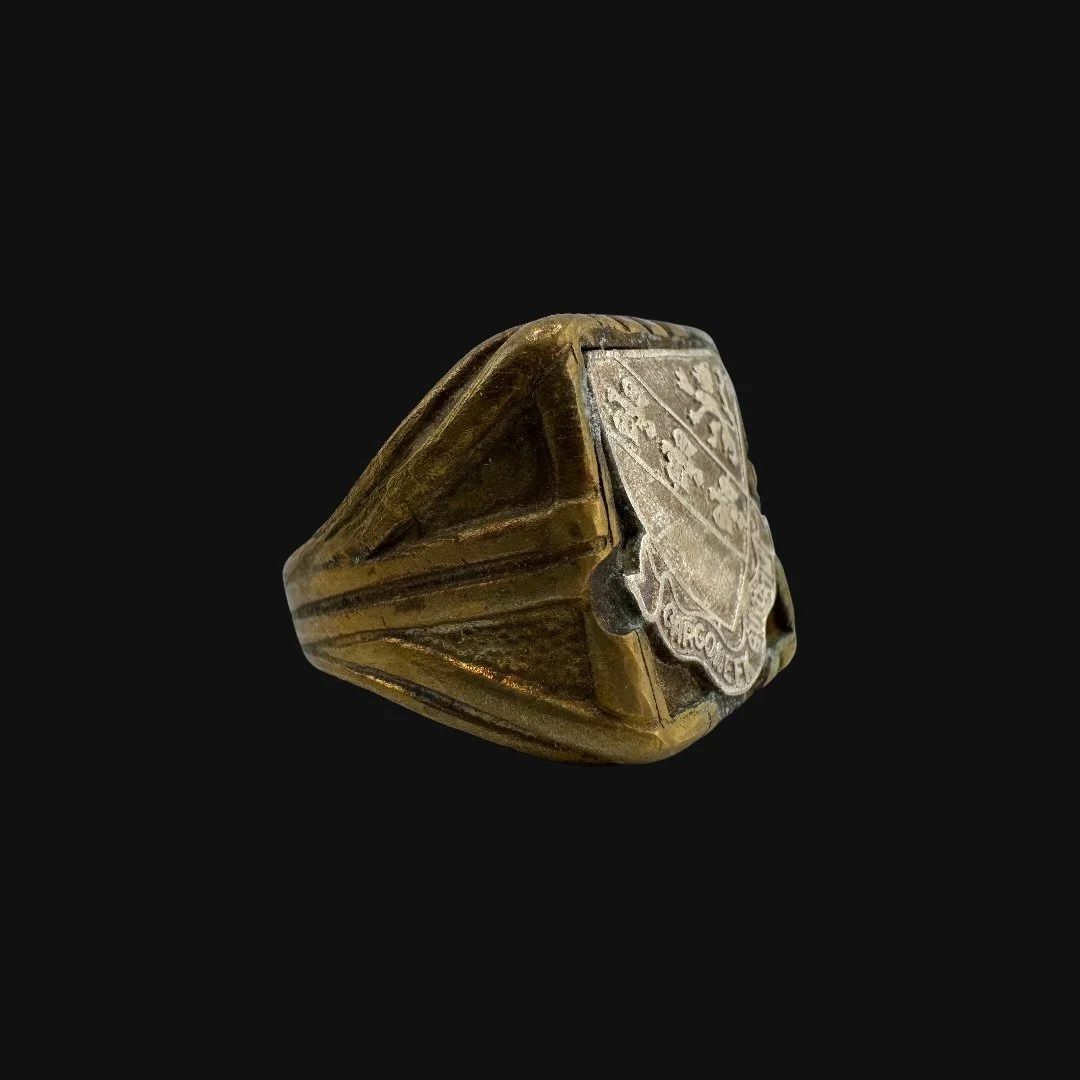 Image 4 of 14
Image 4 of 14

 Image 5 of 14
Image 5 of 14

 Image 6 of 14
Image 6 of 14

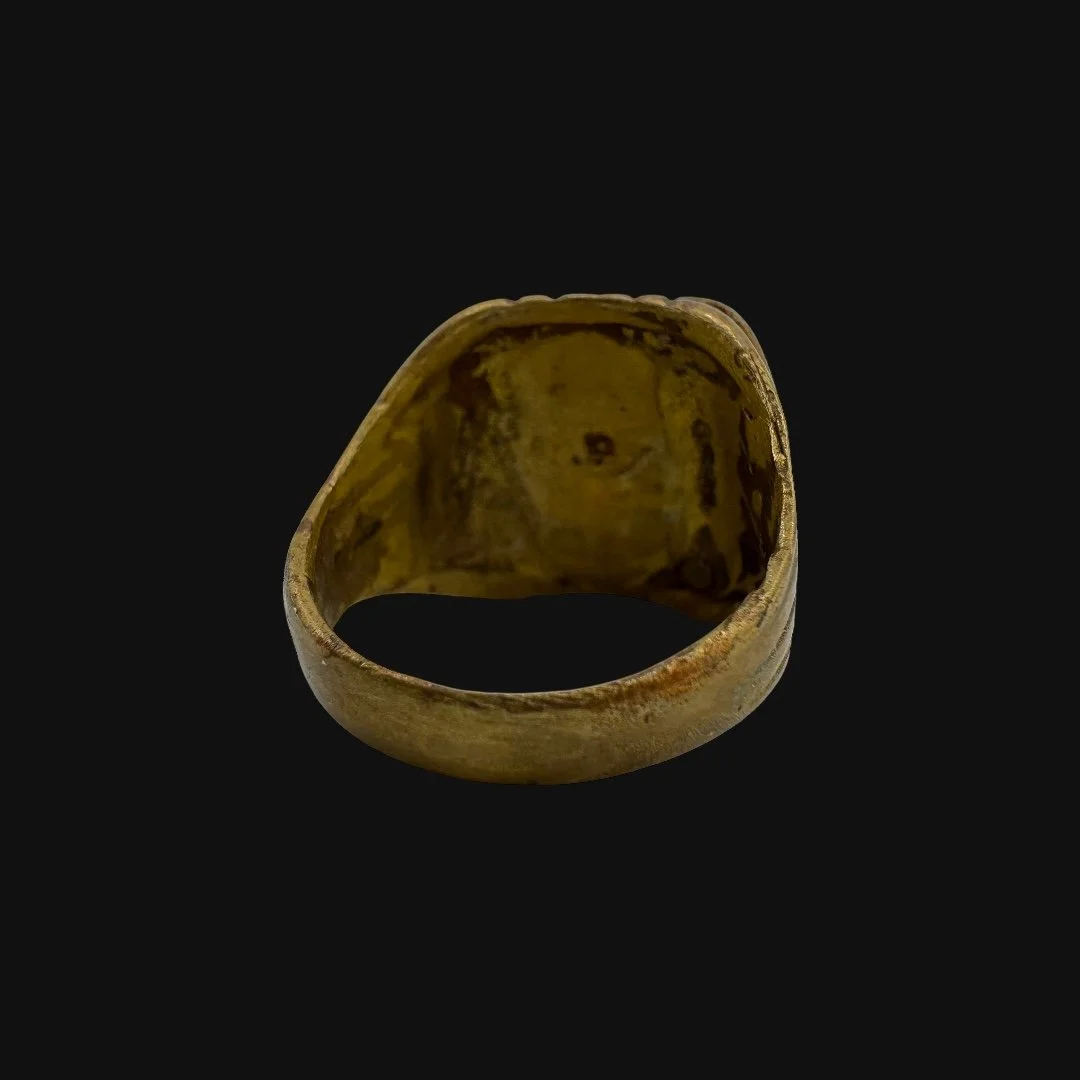 Image 7 of 14
Image 7 of 14

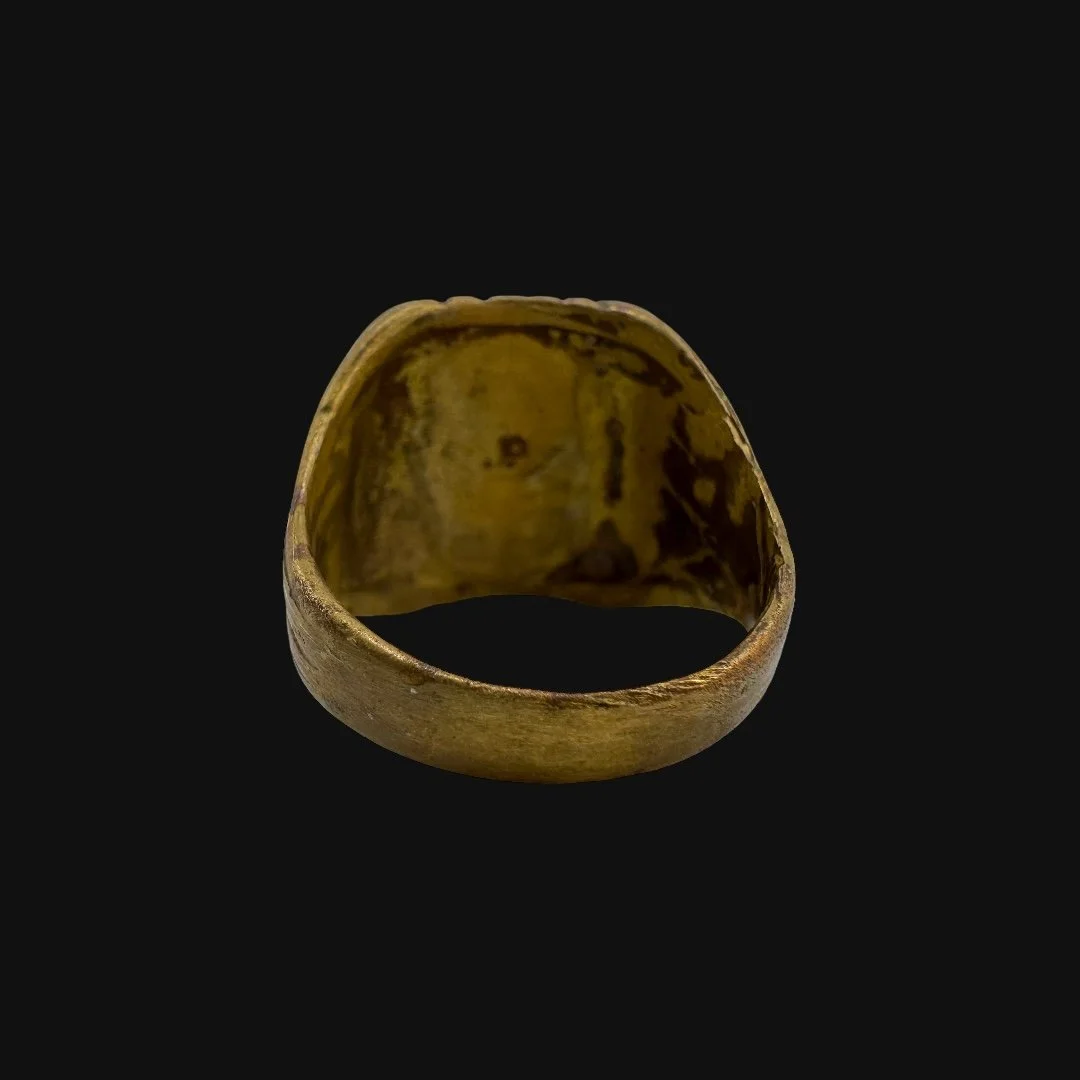 Image 8 of 14
Image 8 of 14

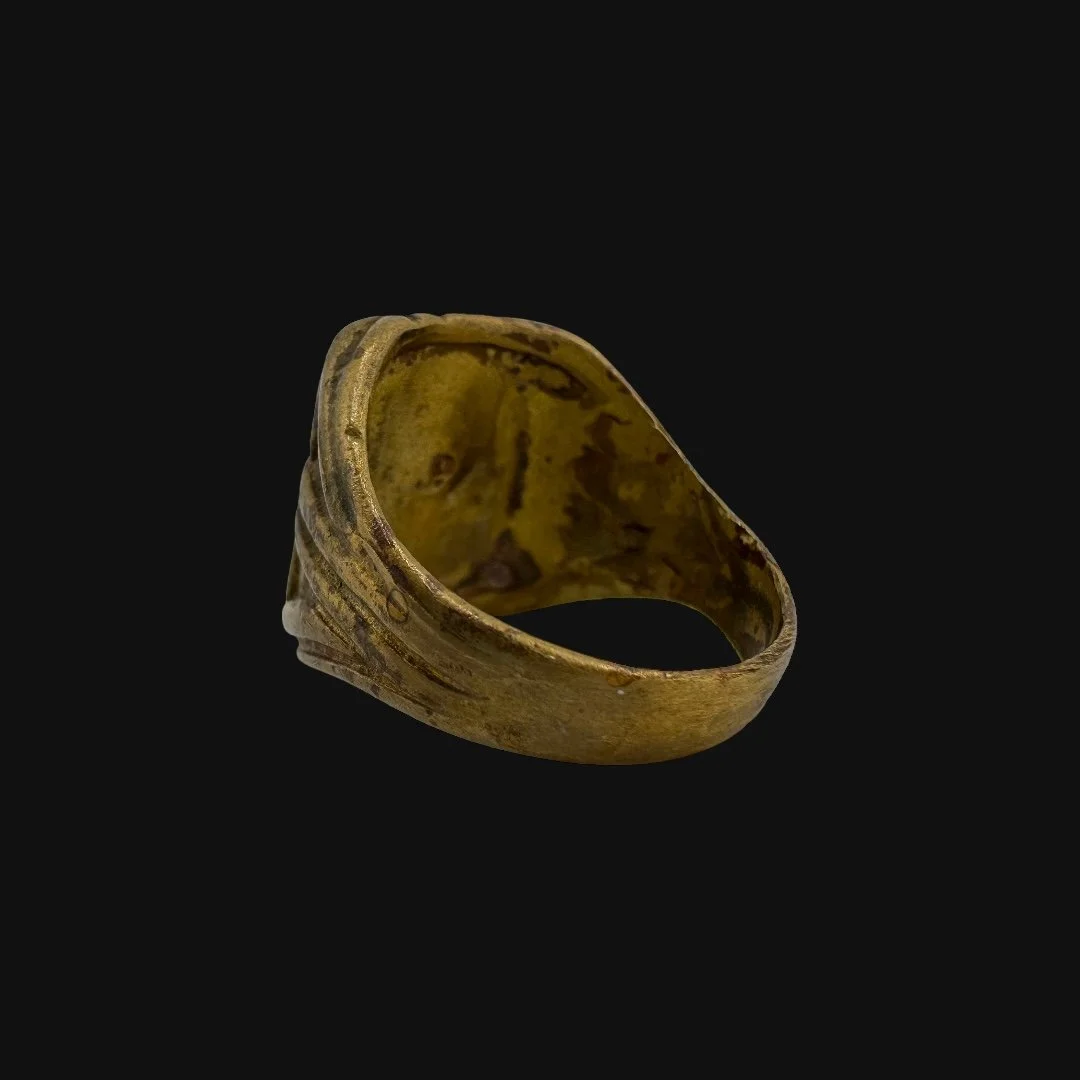 Image 9 of 14
Image 9 of 14

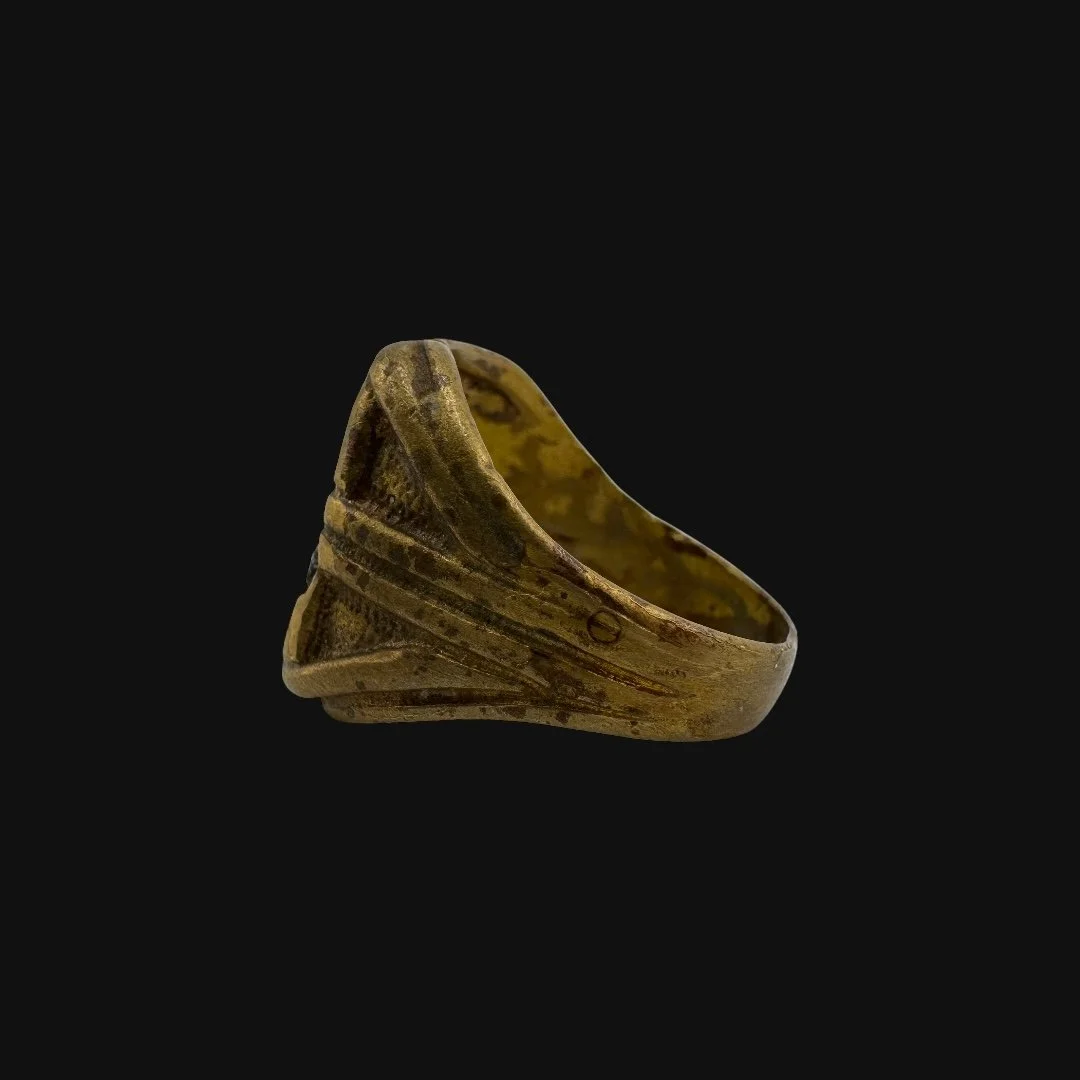 Image 10 of 14
Image 10 of 14

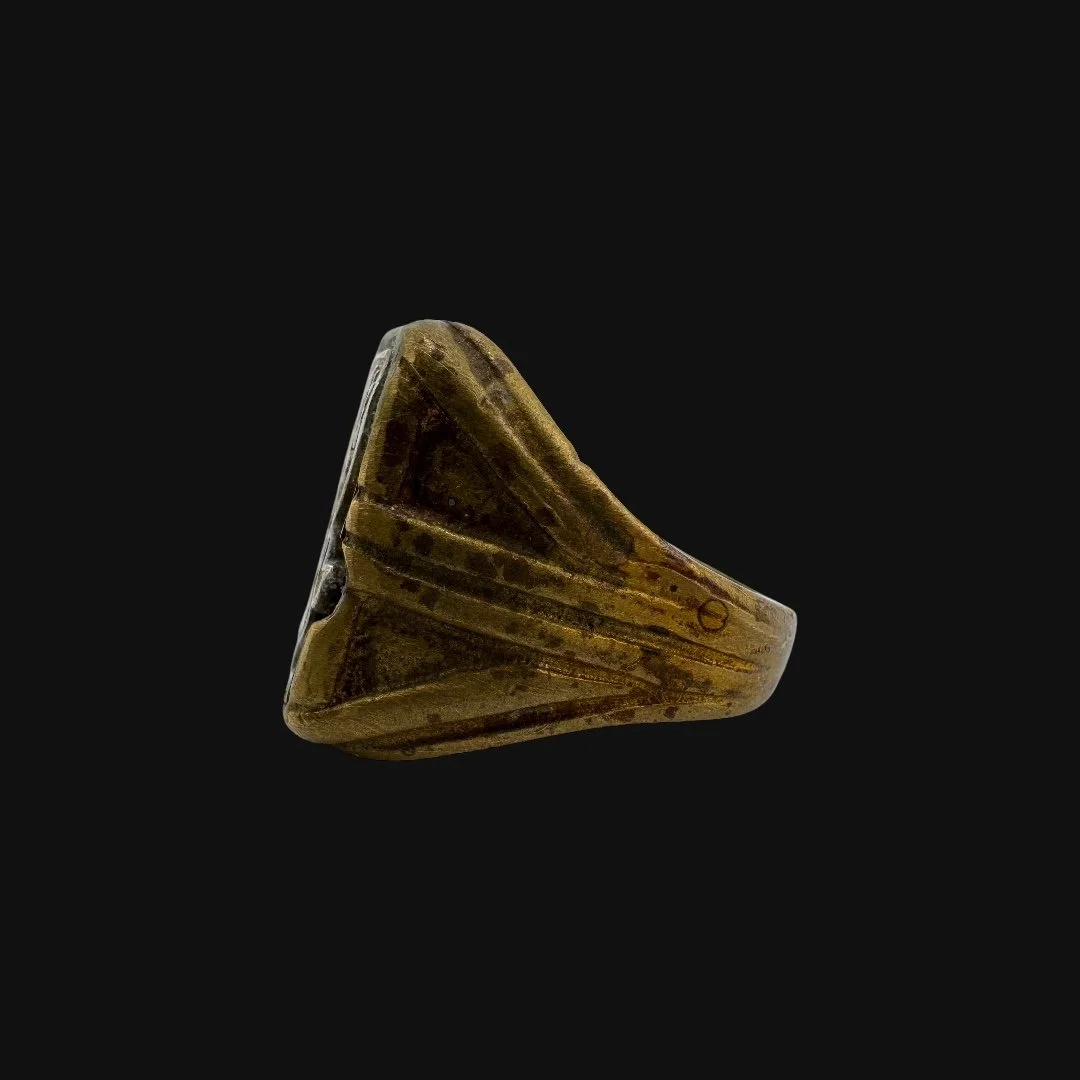 Image 11 of 14
Image 11 of 14

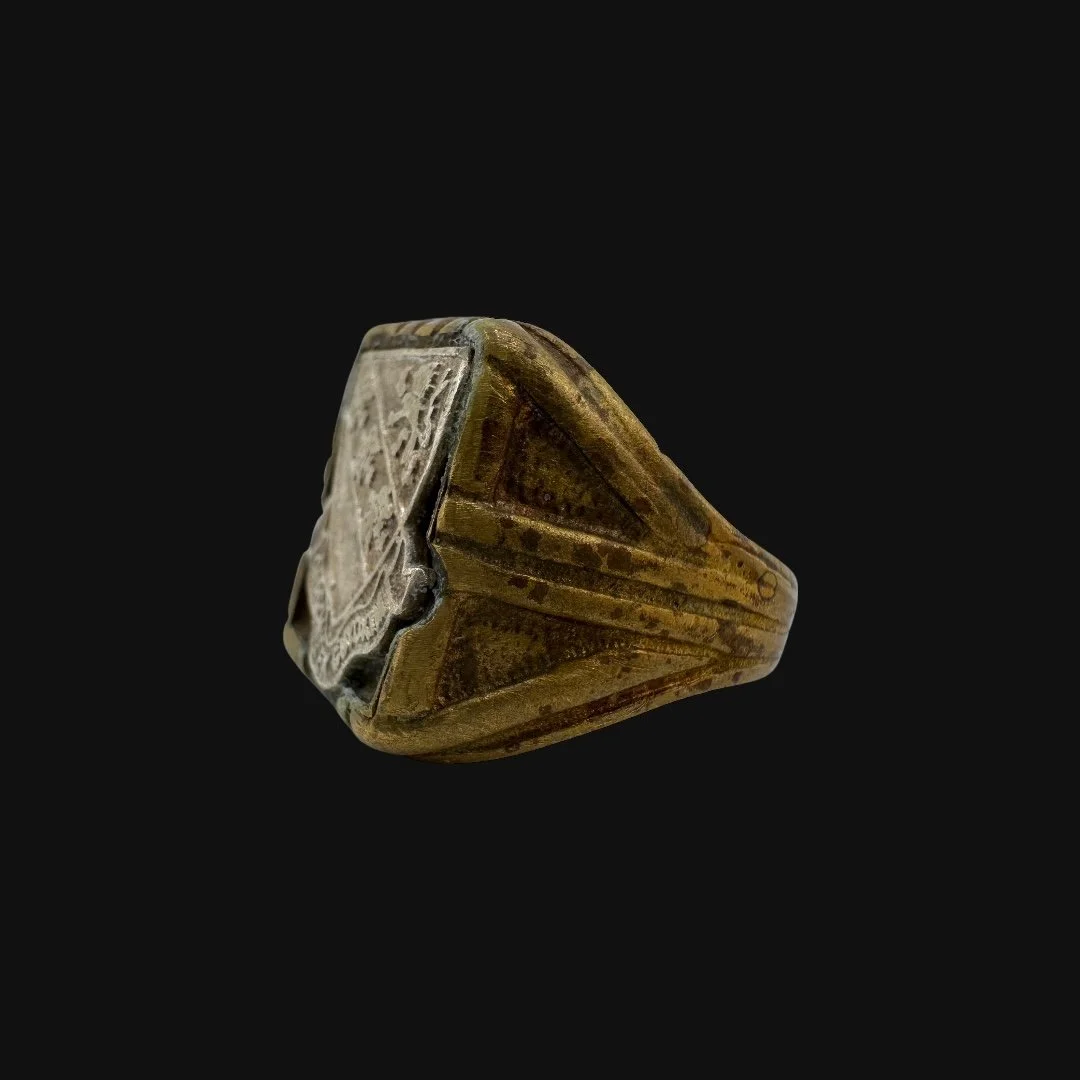 Image 12 of 14
Image 12 of 14

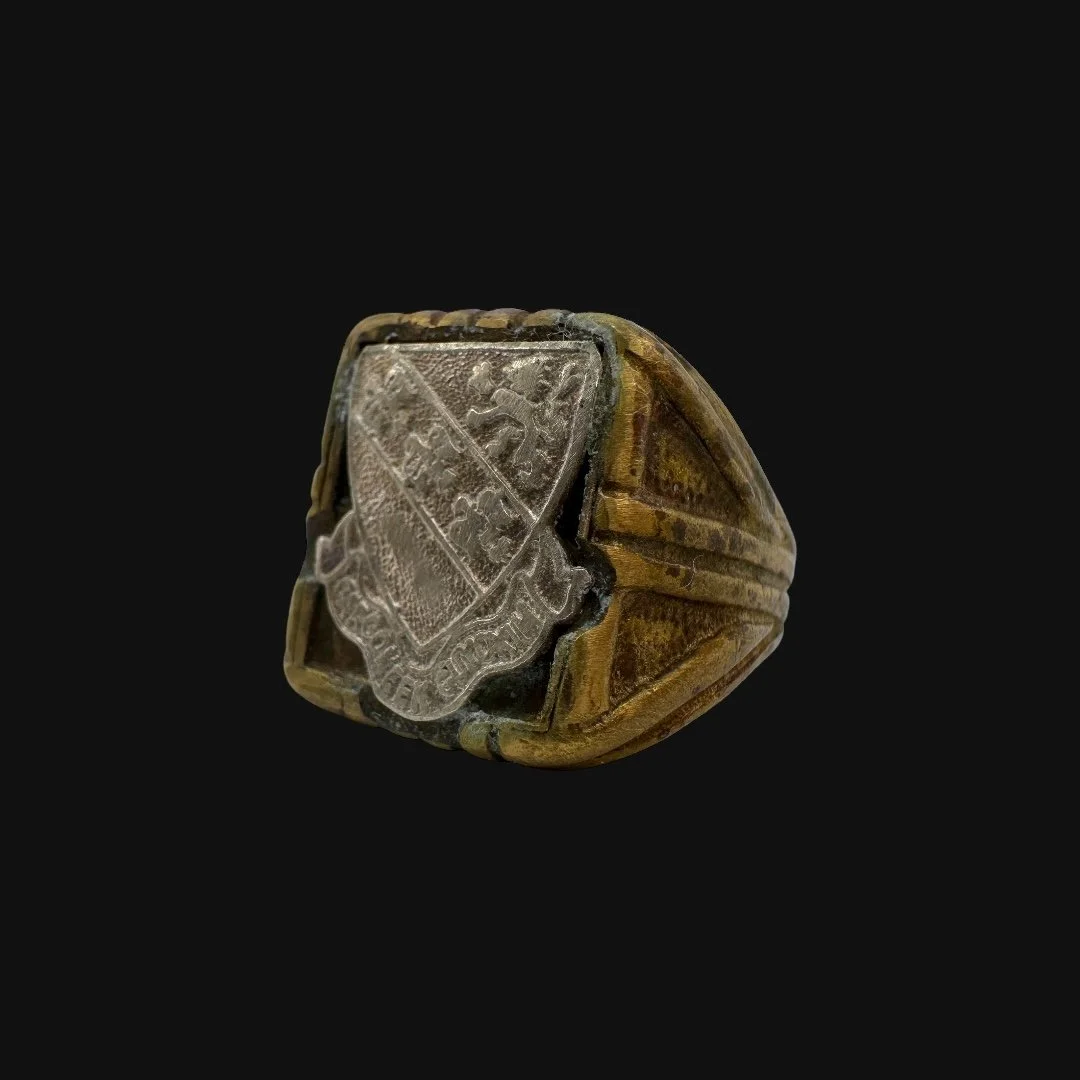 Image 13 of 14
Image 13 of 14

 Image 14 of 14
Image 14 of 14















Original WWII 1943-1945 U.S. Army 147th Infantry Division “Unit Insignia” Combat Soldier's Military Ring (Size 9.25)
Comes with a hand-signed C.O.A. and a full historical research write-up
From: World War II
Branch: U.S. Army
Division: 147th Infantry Division
Dated: 1943-1945
Ring Size: 9.25 (US)
Material: Bronze & Sterling Silver
Wearable History Collection:
This authentic 1943-1945 WWII-era ring, preserved in its original and unaltered condition, combines exceptional craftsmanship with lasting durability, making it fully suitable for modern wear today. As part of our exclusive World War II “Wearable History Ring Collection,” it offers the rare opportunity to own and wear a genuine piece of World War II. Both a timeless accessory and a tangible link to the past, this truly one-of-a-kind ring stands as a wearable tribute to the courage and sacrifice of a generation.
Historical Significance to the 147th Infantry Division During WWII:
The 147th Infantry Regiment was one of the most unusual U.S. Army units of World War II, fighting not as part of a division but as an independent regiment that could be attached wherever needed. Originally part of the Ohio National Guard and the 37th Infantry Division, it was detached in 1942 and went on to serve across the Pacific in some of the war’s toughest campaigns. Its soldiers gained a reputation for perseverance and toughness, often tasked with the grueling and dangerous work of clearing Japanese holdouts after larger Marine and Army divisions had spearheaded the initial assaults.
The regiment’s first major combat came on Guadalcanal, where it relieved exhausted Marine units and carried out jungle patrols and mopping-up operations against entrenched Japanese forces. In 1944, it fought on Saipan and Tinian, rooting out thousands of defenders hiding in caves and rugged terrain—operations that secured vital airfields later used for B-29 bombing raids against Japan, including the atomic missions from Tinian. In 1945, the 147th played a crucial but often overlooked role at Iwo Jima, where after the iconic flag-raising, its soldiers fought weeks of brutal cave-to-cave combat to eliminate thousands of Japanese still resisting. Later, at Okinawa, the regiment again cleared fanatical defenders in some of the bloodiest fighting of the war.
The historical significance of the 147th Infantry Regiment lies in its ability to adapt and endure. As an independent unit, it was flexible and reliable, called upon repeatedly for difficult assignments that larger divisions could not afford to spare men for. Its operations on islands like Saipan, Tinian, Iwo Jima, and Okinawa directly enabled the creation of airbases that brought Japan within reach of Allied bombers, hastening the war’s end. While overshadowed in popular history by Marine divisions, the 147th’s sacrifices were immense, and its soldiers fought in the same brutal conditions with courage and determination. The regiment’s legacy is that of an unsung but indispensable force, ensuring that the hard-won islands of the Pacific were fully secured for the final push toward victory.
The Legacy Within This Ring:
This original World War II 147th Infantry Regiment ring is a rare and deeply personal artifact, privately commissioned by a soldier who served in one of the Army’s most unique and unsung combat units. Bearing the proud 147th emblem on its front, the ring allowed its owner to carry the identity of his regiment not only on his uniform but also as a symbol worn daily on his hand. For the men of the 147th—who fought independently across the Pacific at Guadalcanal, Saipan, Tinian, Iwo Jima, and Okinawa—such a piece was far more than jewelry. It was a quiet reminder of endurance, sacrifice, and the brotherhood forged in some of the most grueling and overlooked campaigns of the war. Every engraved detail reflects the pride these soldiers carried in their service, often tasked with the brutal and unrelenting work of clearing Japanese defenders from caves, jungles, and strongholds long after the first landings had passed. The emblem of the 147th marked men who fought in silence and shadows, their contributions critical to securing airfields and islands that brought Japan within reach of Allied bombers and ultimately hastened the end of the war. Today, this ring endures as a wearable relic of the 147th Infantry Regiment’s legacy. It represents not only the courage of those who carried out some of the hardest and least recognized work in the Pacific Theater but also the lasting spirit of the soldiers who bore the emblem of the Checkerboard with pride. More than a collectible, it is a tribute to resilience, loyalty, and the sacrifices of a regiment whose role was vital though often overlooked, ensuring Allied victory in the Pacific.
Comes with a hand-signed C.O.A. and a full historical research write-up
From: World War II
Branch: U.S. Army
Division: 147th Infantry Division
Dated: 1943-1945
Ring Size: 9.25 (US)
Material: Bronze & Sterling Silver
Wearable History Collection:
This authentic 1943-1945 WWII-era ring, preserved in its original and unaltered condition, combines exceptional craftsmanship with lasting durability, making it fully suitable for modern wear today. As part of our exclusive World War II “Wearable History Ring Collection,” it offers the rare opportunity to own and wear a genuine piece of World War II. Both a timeless accessory and a tangible link to the past, this truly one-of-a-kind ring stands as a wearable tribute to the courage and sacrifice of a generation.
Historical Significance to the 147th Infantry Division During WWII:
The 147th Infantry Regiment was one of the most unusual U.S. Army units of World War II, fighting not as part of a division but as an independent regiment that could be attached wherever needed. Originally part of the Ohio National Guard and the 37th Infantry Division, it was detached in 1942 and went on to serve across the Pacific in some of the war’s toughest campaigns. Its soldiers gained a reputation for perseverance and toughness, often tasked with the grueling and dangerous work of clearing Japanese holdouts after larger Marine and Army divisions had spearheaded the initial assaults.
The regiment’s first major combat came on Guadalcanal, where it relieved exhausted Marine units and carried out jungle patrols and mopping-up operations against entrenched Japanese forces. In 1944, it fought on Saipan and Tinian, rooting out thousands of defenders hiding in caves and rugged terrain—operations that secured vital airfields later used for B-29 bombing raids against Japan, including the atomic missions from Tinian. In 1945, the 147th played a crucial but often overlooked role at Iwo Jima, where after the iconic flag-raising, its soldiers fought weeks of brutal cave-to-cave combat to eliminate thousands of Japanese still resisting. Later, at Okinawa, the regiment again cleared fanatical defenders in some of the bloodiest fighting of the war.
The historical significance of the 147th Infantry Regiment lies in its ability to adapt and endure. As an independent unit, it was flexible and reliable, called upon repeatedly for difficult assignments that larger divisions could not afford to spare men for. Its operations on islands like Saipan, Tinian, Iwo Jima, and Okinawa directly enabled the creation of airbases that brought Japan within reach of Allied bombers, hastening the war’s end. While overshadowed in popular history by Marine divisions, the 147th’s sacrifices were immense, and its soldiers fought in the same brutal conditions with courage and determination. The regiment’s legacy is that of an unsung but indispensable force, ensuring that the hard-won islands of the Pacific were fully secured for the final push toward victory.
The Legacy Within This Ring:
This original World War II 147th Infantry Regiment ring is a rare and deeply personal artifact, privately commissioned by a soldier who served in one of the Army’s most unique and unsung combat units. Bearing the proud 147th emblem on its front, the ring allowed its owner to carry the identity of his regiment not only on his uniform but also as a symbol worn daily on his hand. For the men of the 147th—who fought independently across the Pacific at Guadalcanal, Saipan, Tinian, Iwo Jima, and Okinawa—such a piece was far more than jewelry. It was a quiet reminder of endurance, sacrifice, and the brotherhood forged in some of the most grueling and overlooked campaigns of the war. Every engraved detail reflects the pride these soldiers carried in their service, often tasked with the brutal and unrelenting work of clearing Japanese defenders from caves, jungles, and strongholds long after the first landings had passed. The emblem of the 147th marked men who fought in silence and shadows, their contributions critical to securing airfields and islands that brought Japan within reach of Allied bombers and ultimately hastened the end of the war. Today, this ring endures as a wearable relic of the 147th Infantry Regiment’s legacy. It represents not only the courage of those who carried out some of the hardest and least recognized work in the Pacific Theater but also the lasting spirit of the soldiers who bore the emblem of the Checkerboard with pride. More than a collectible, it is a tribute to resilience, loyalty, and the sacrifices of a regiment whose role was vital though often overlooked, ensuring Allied victory in the Pacific.
